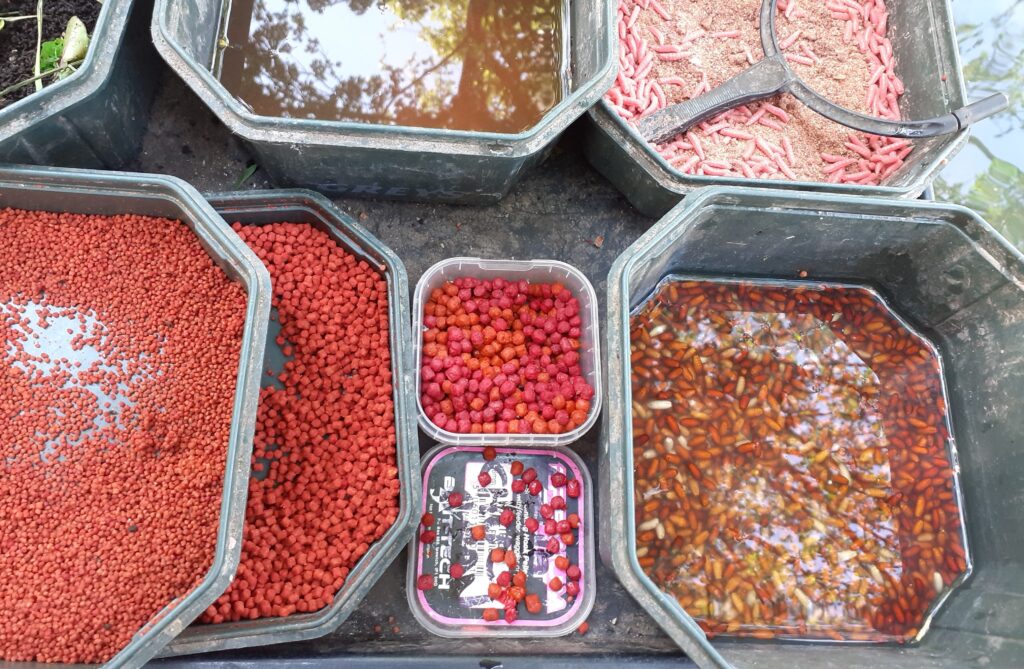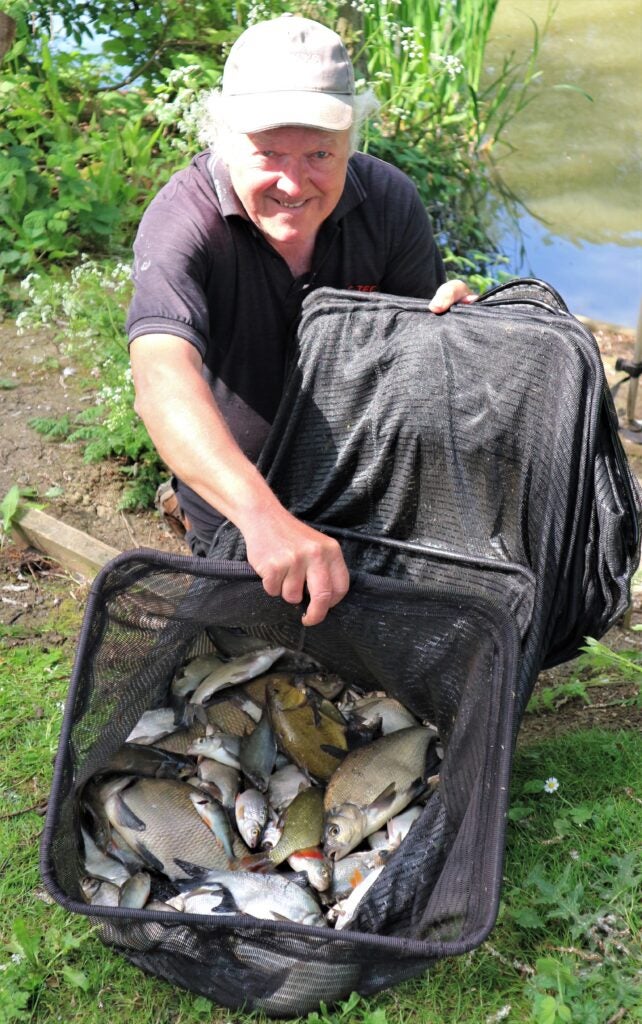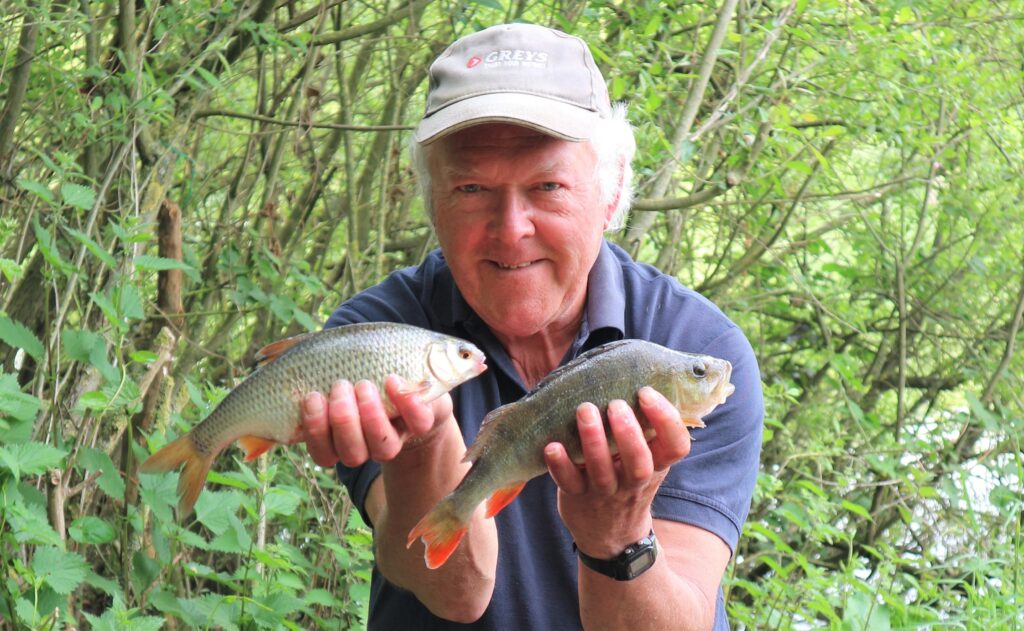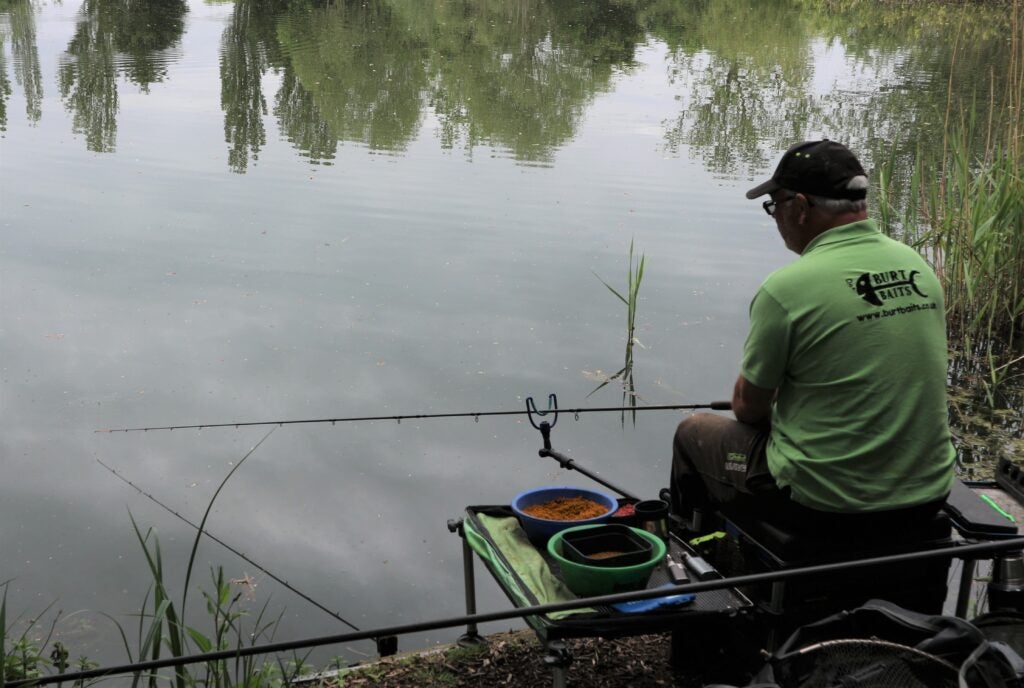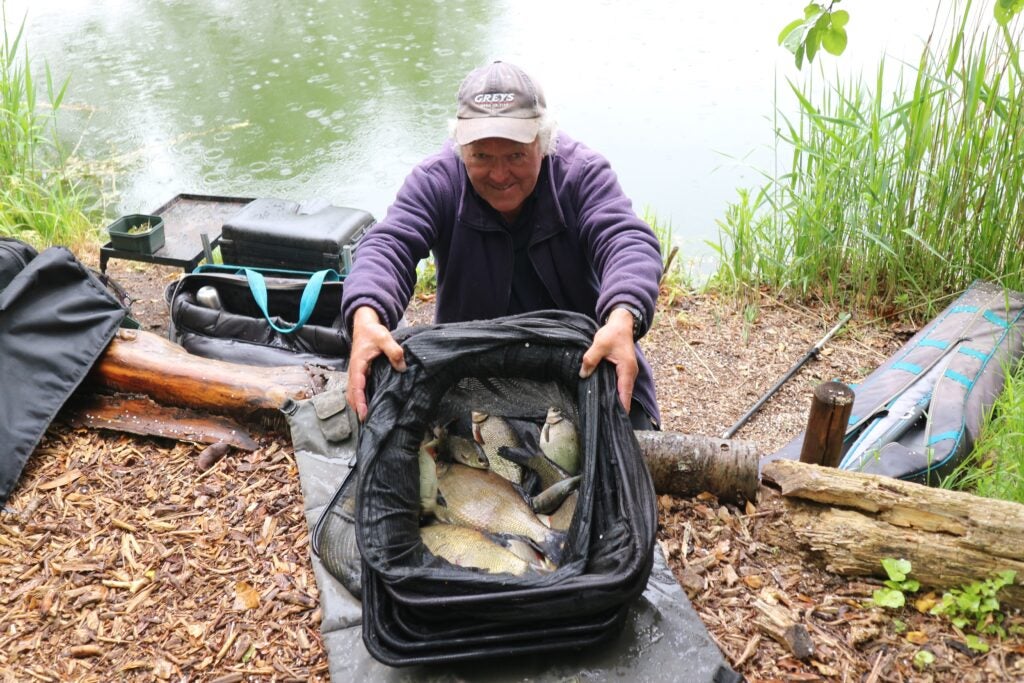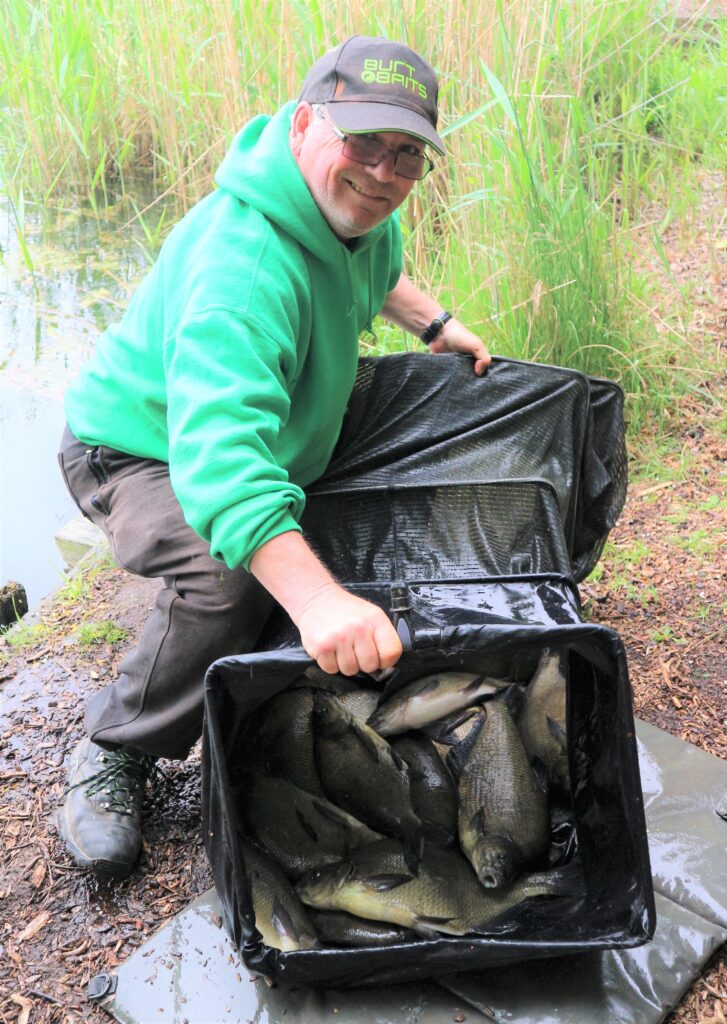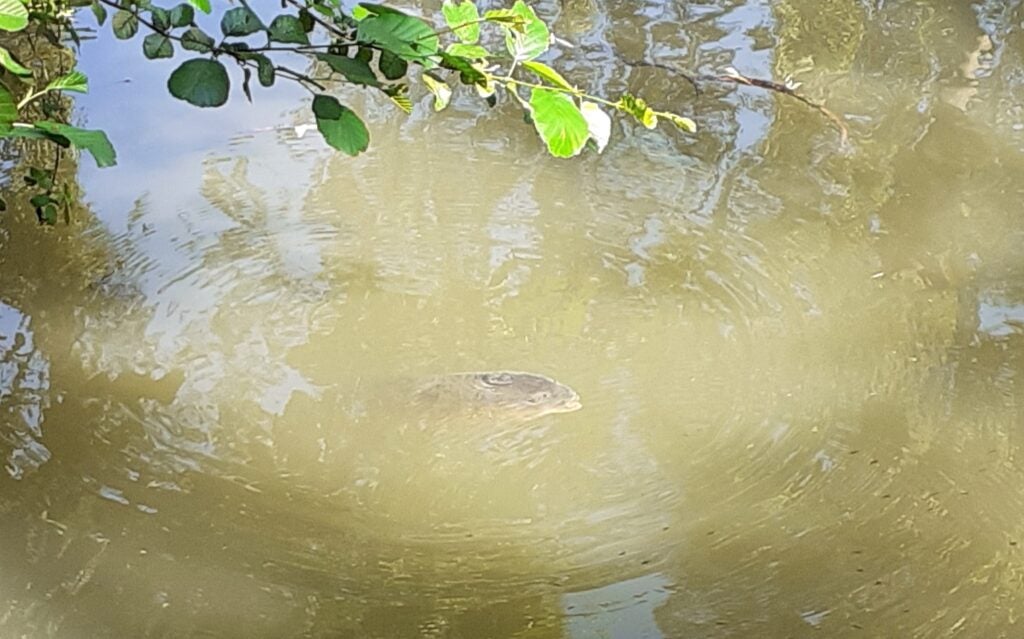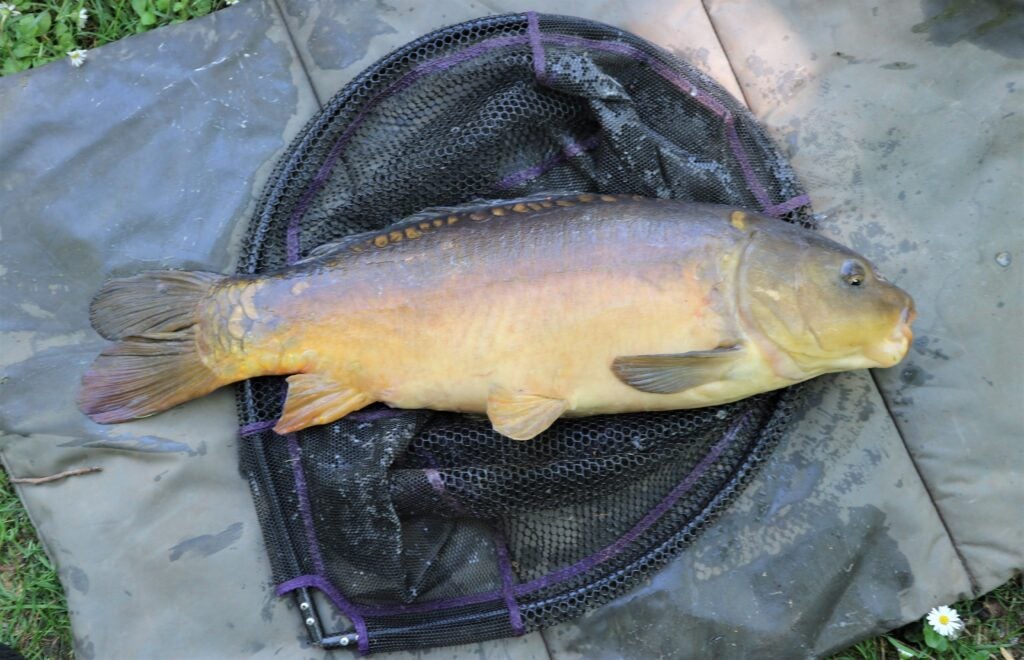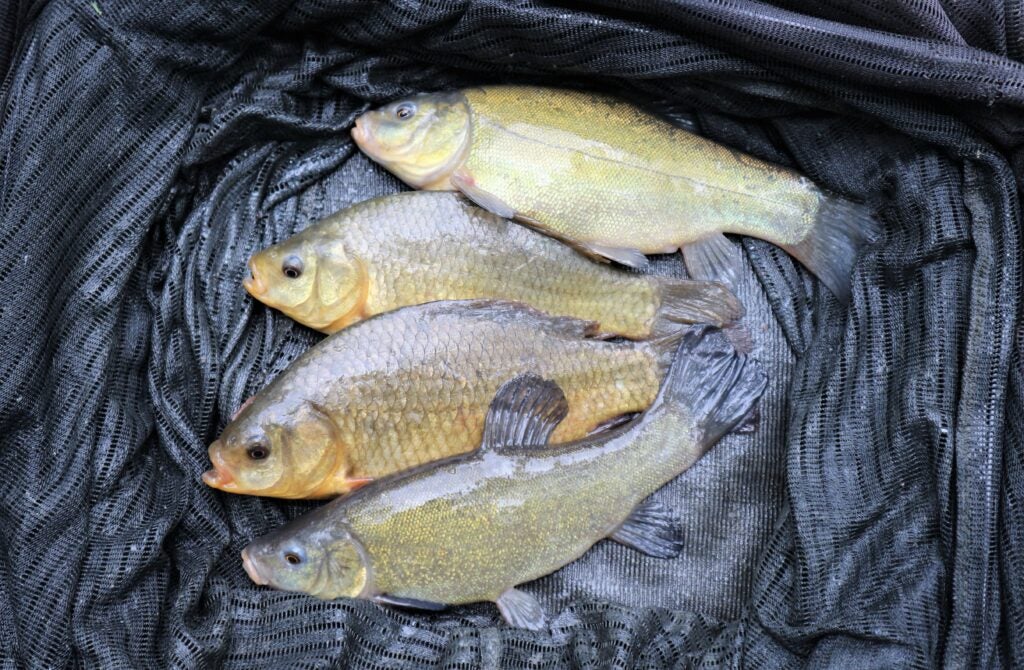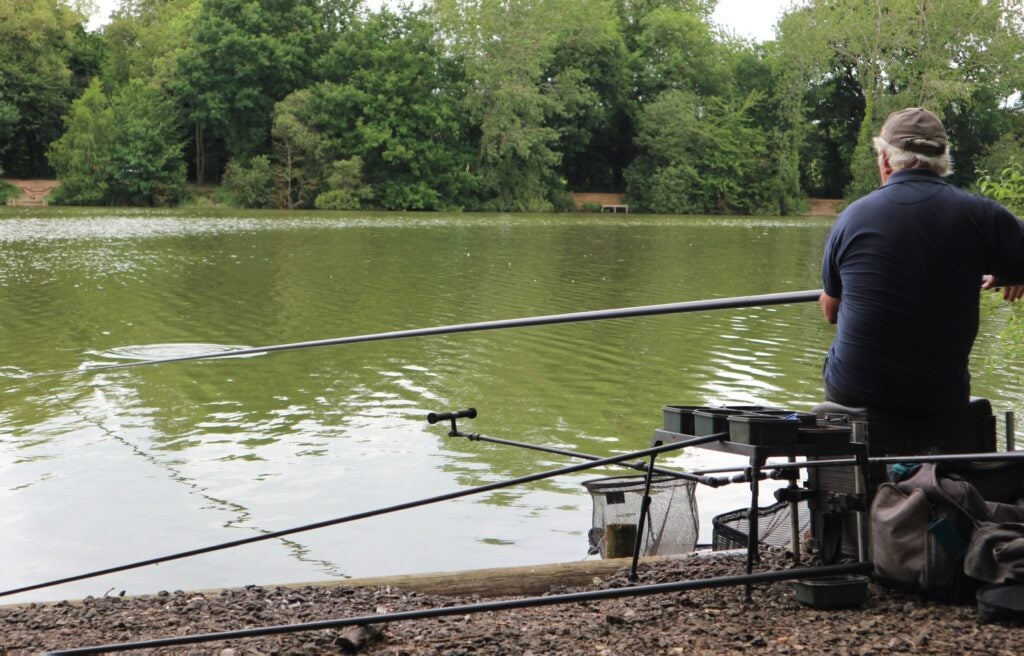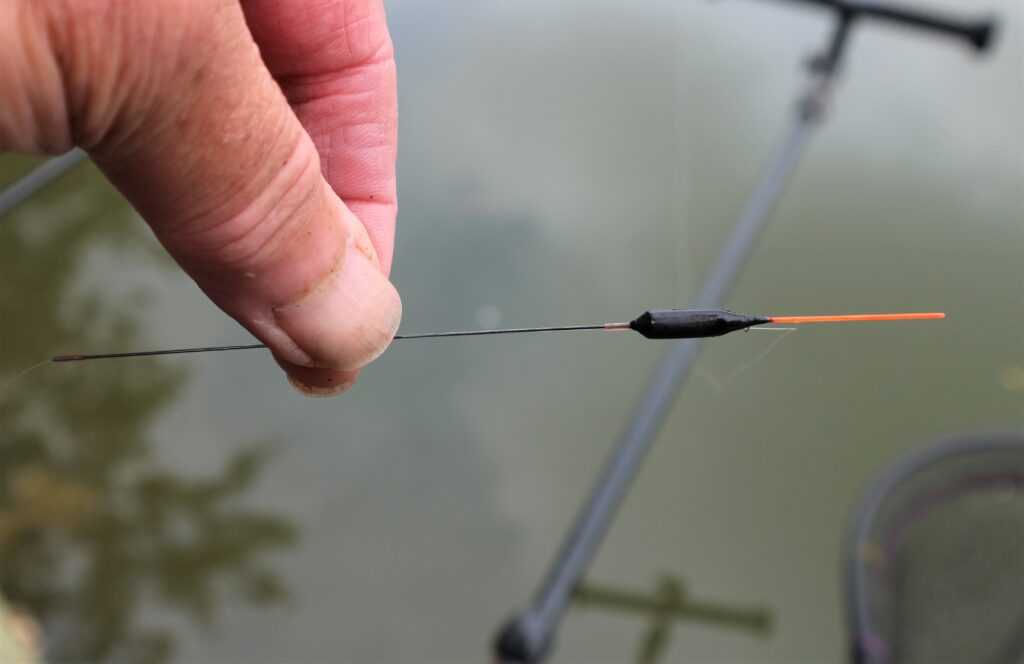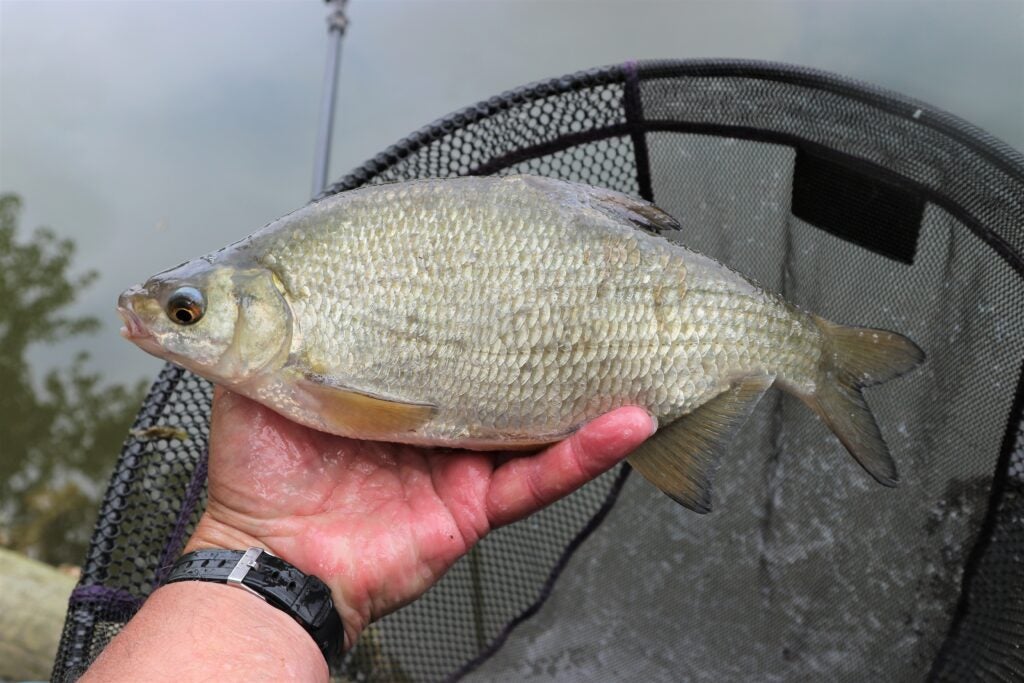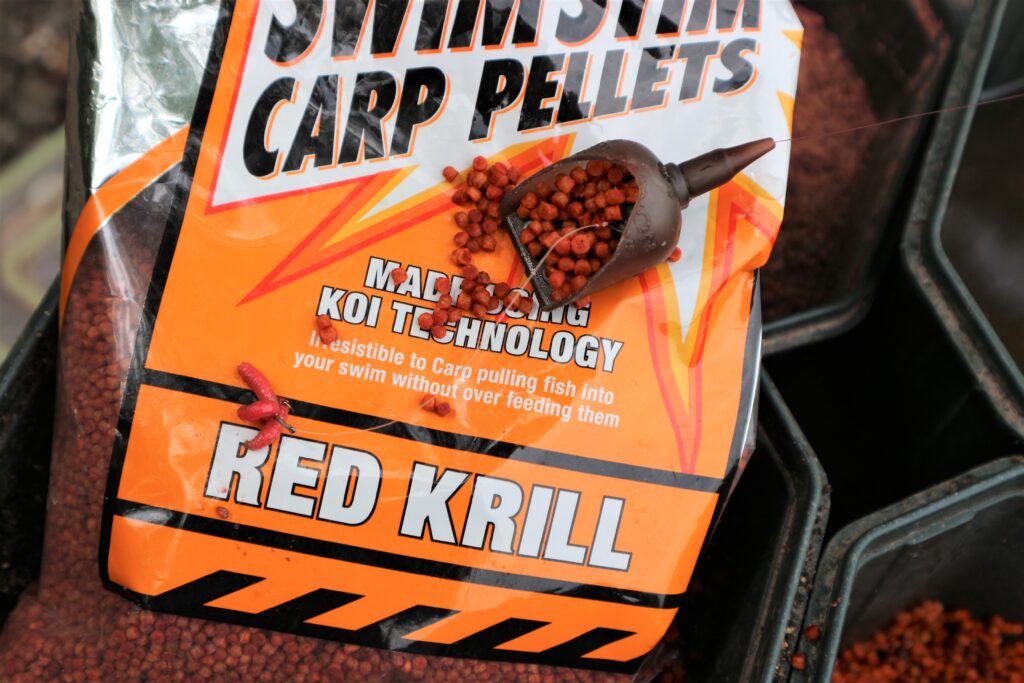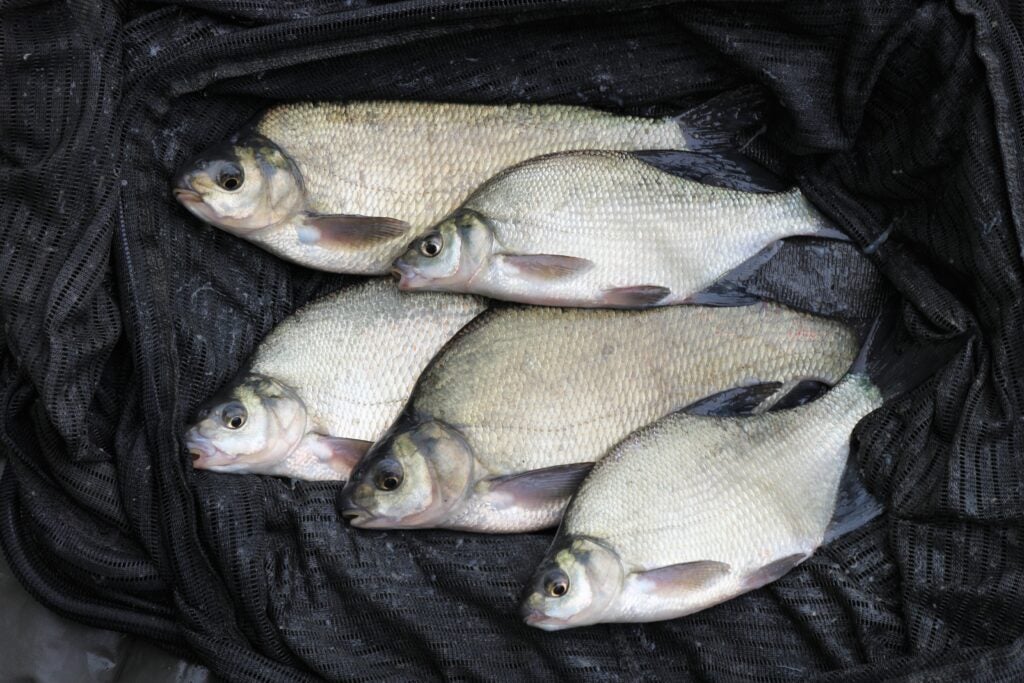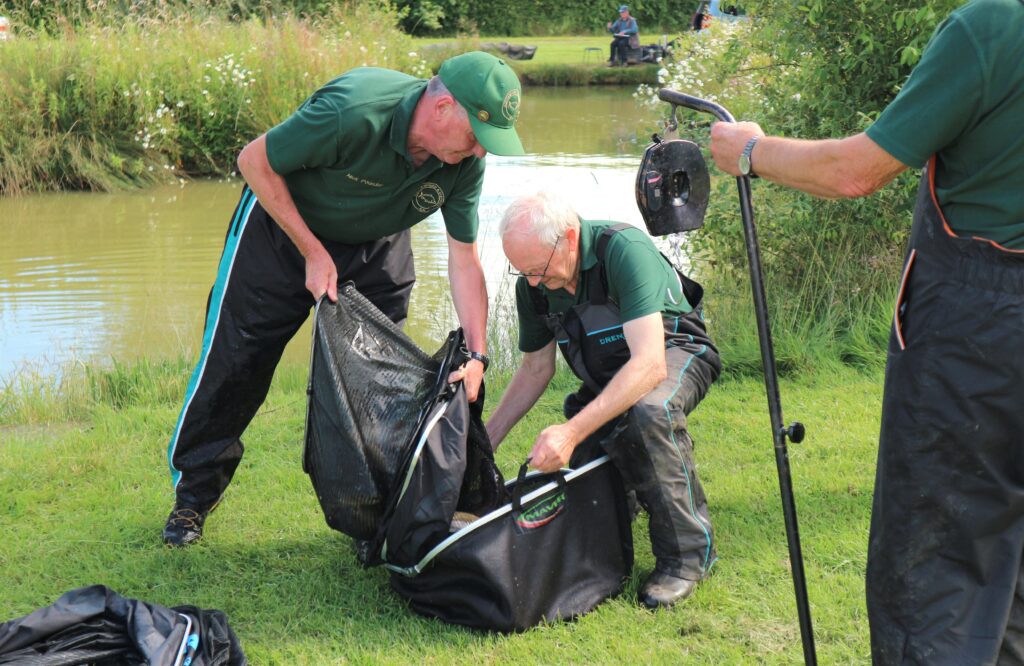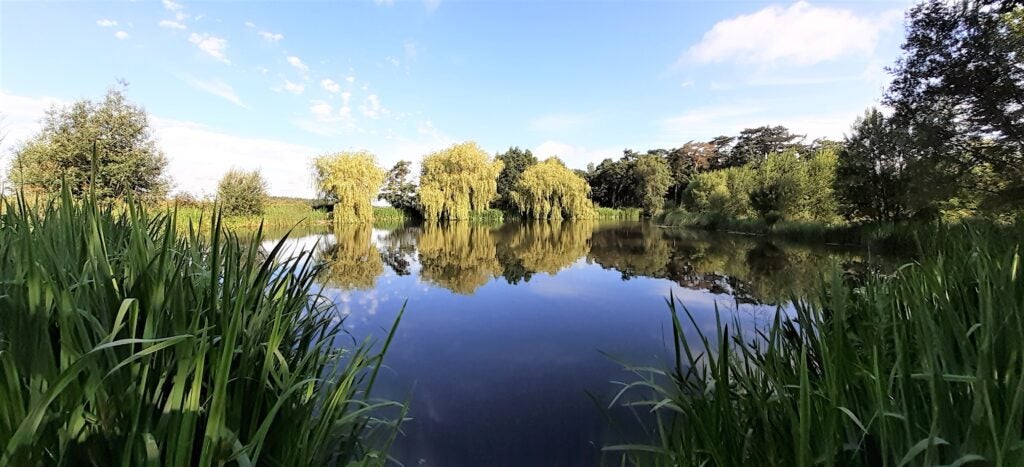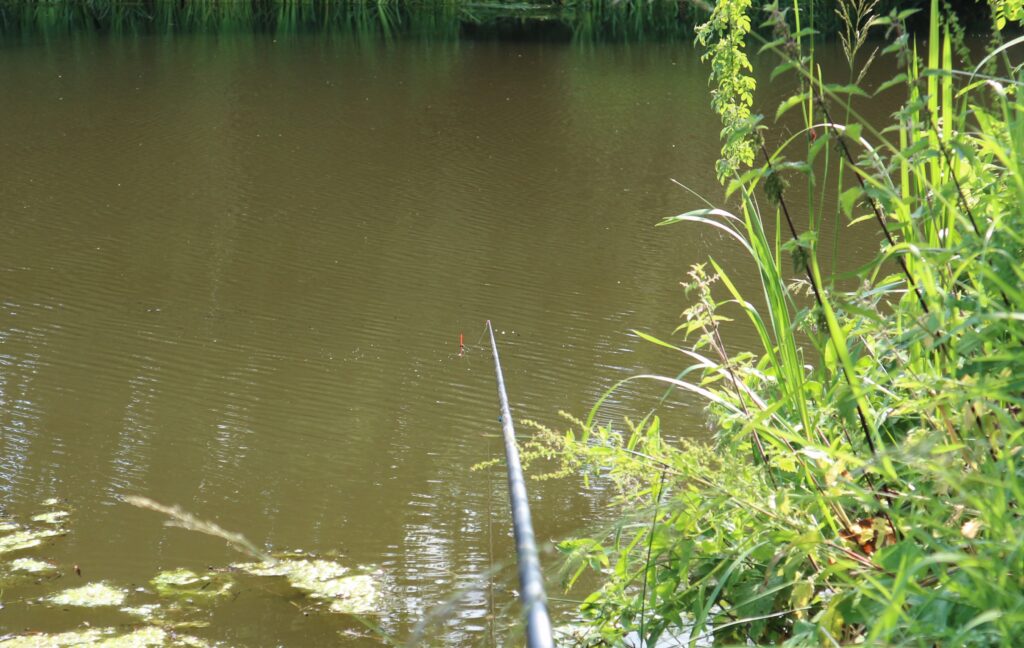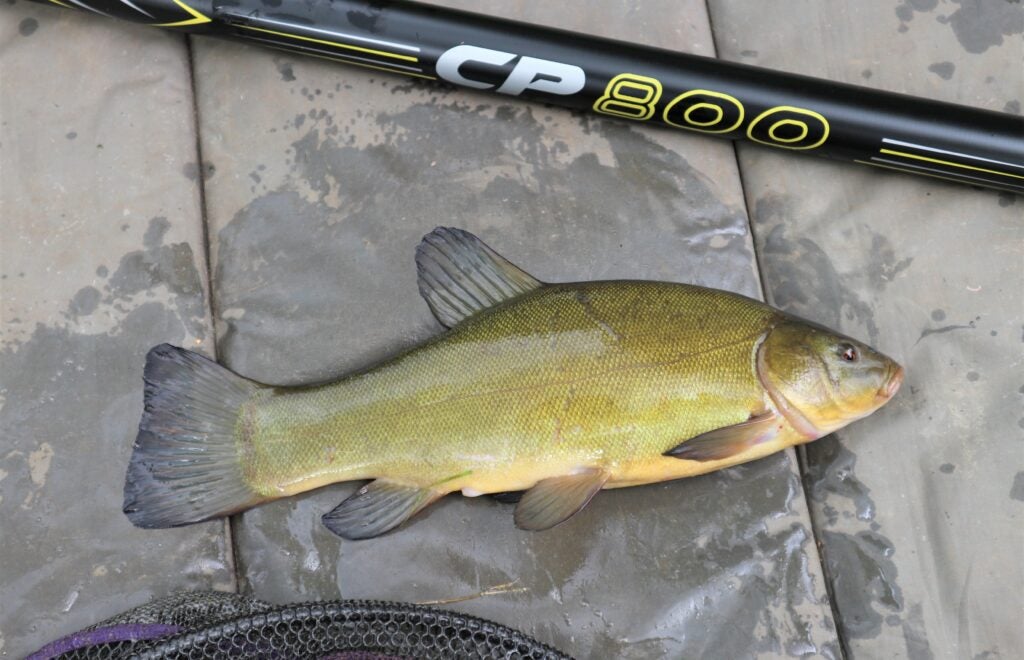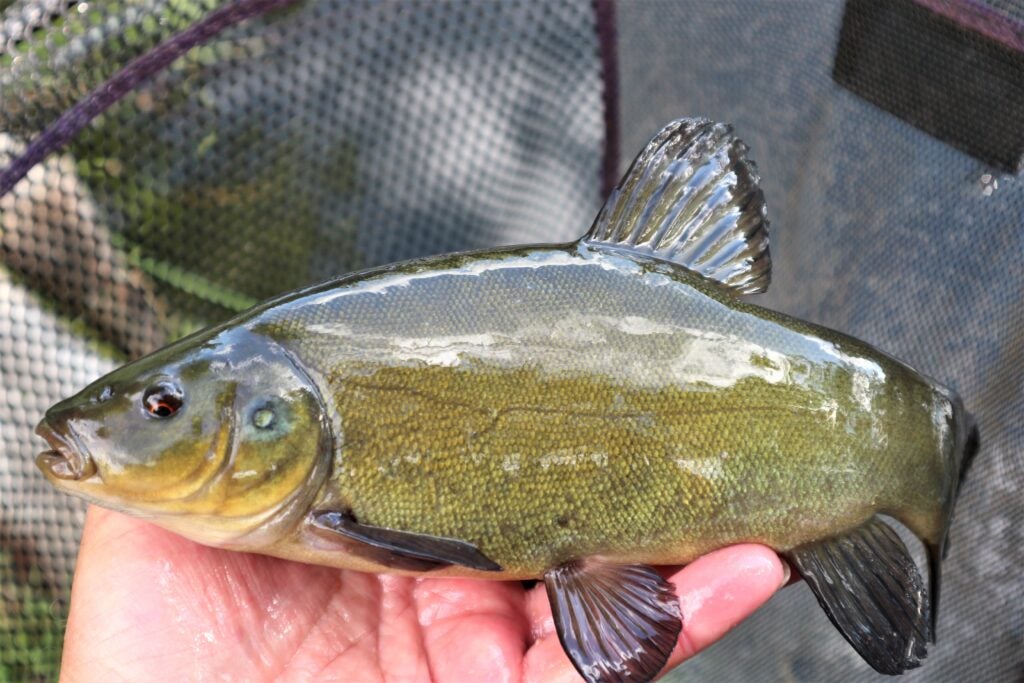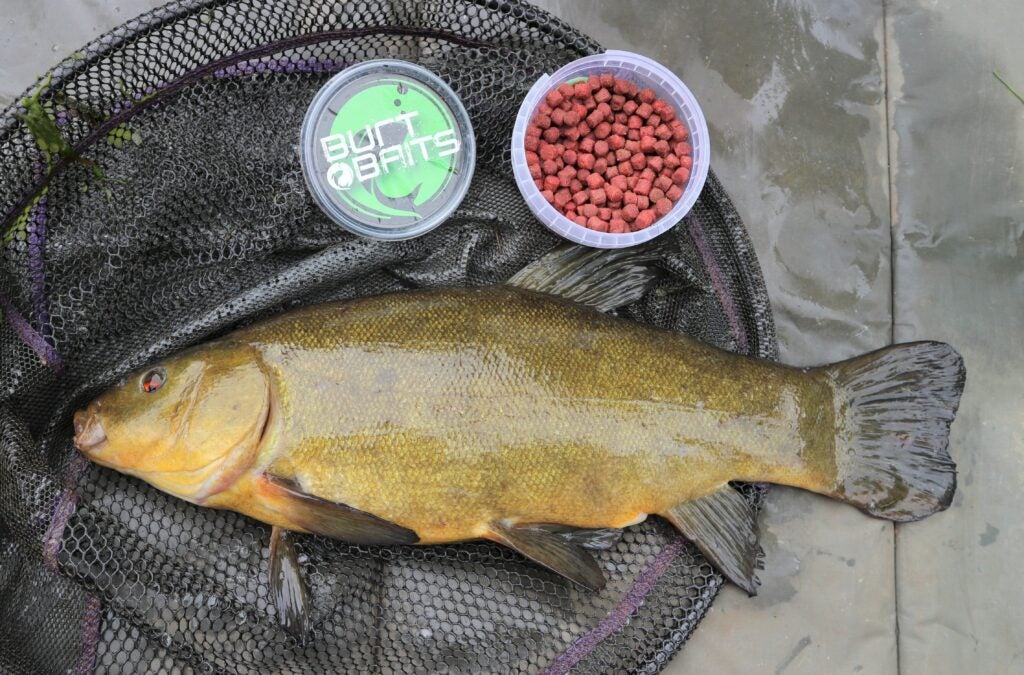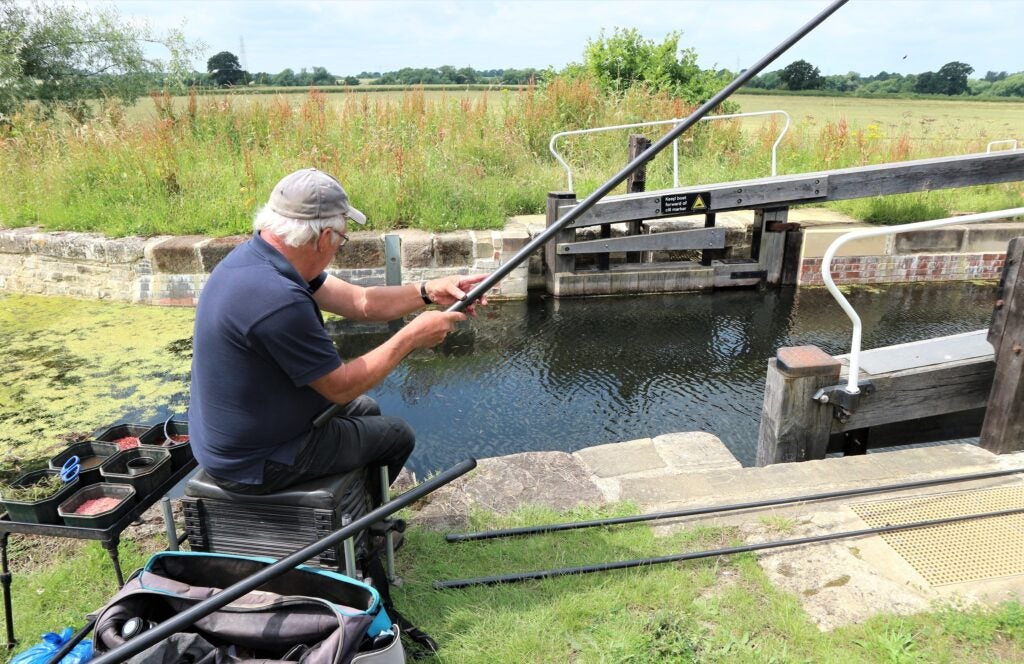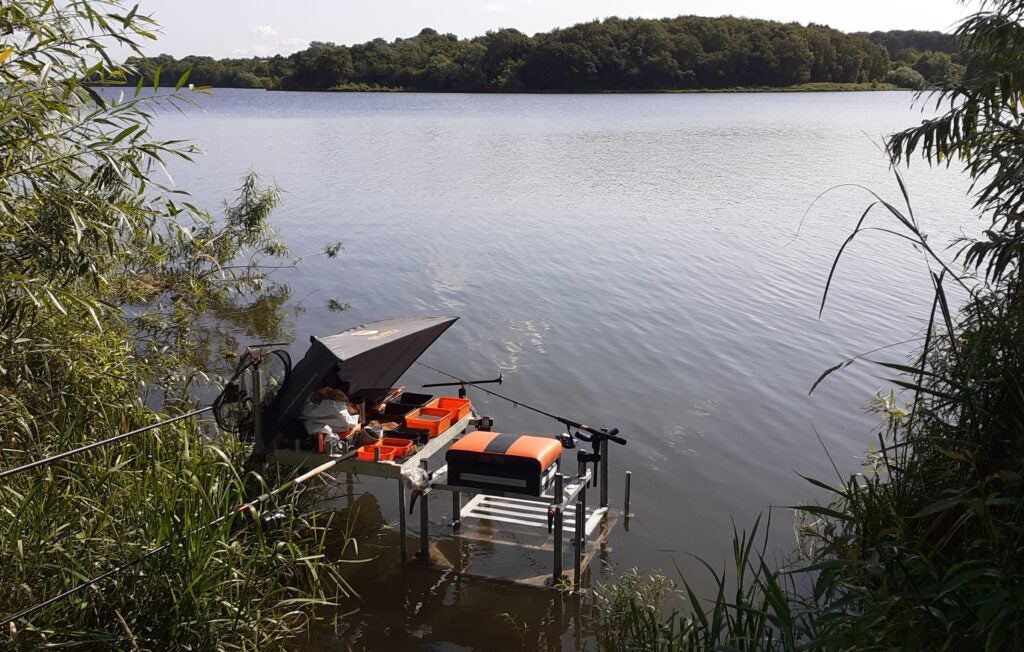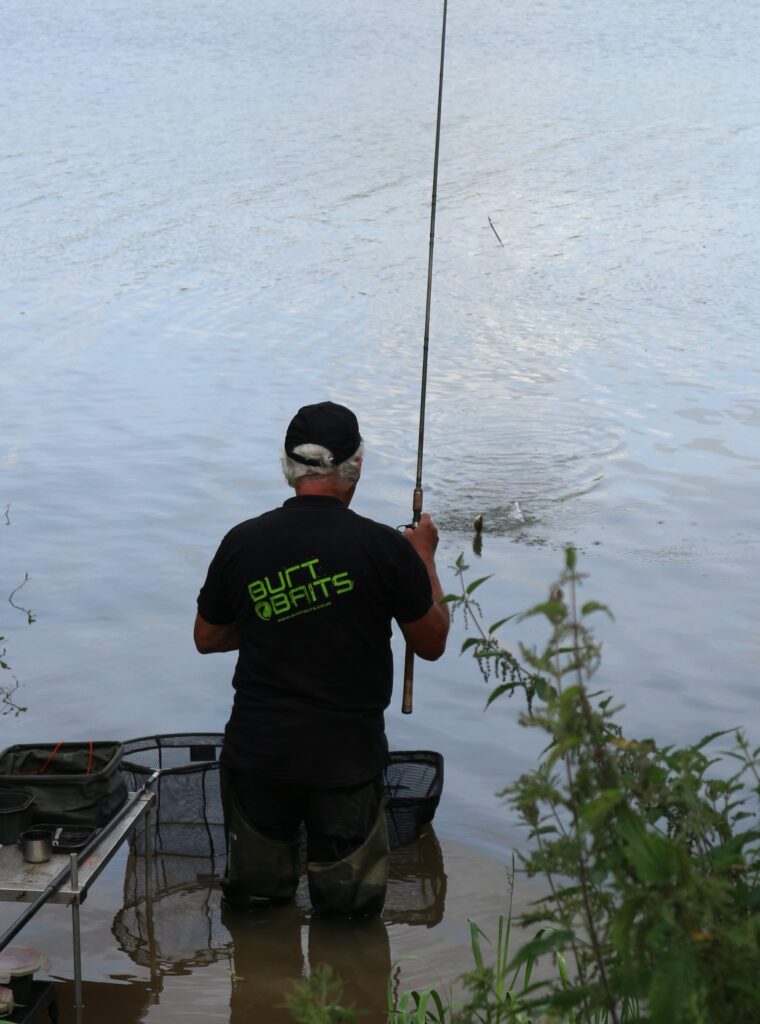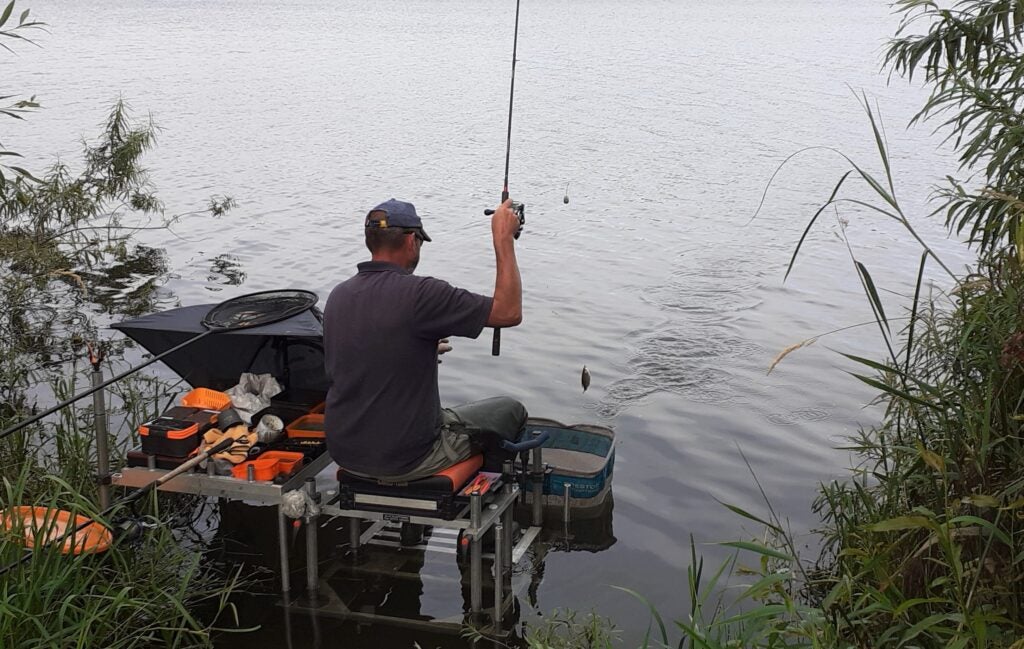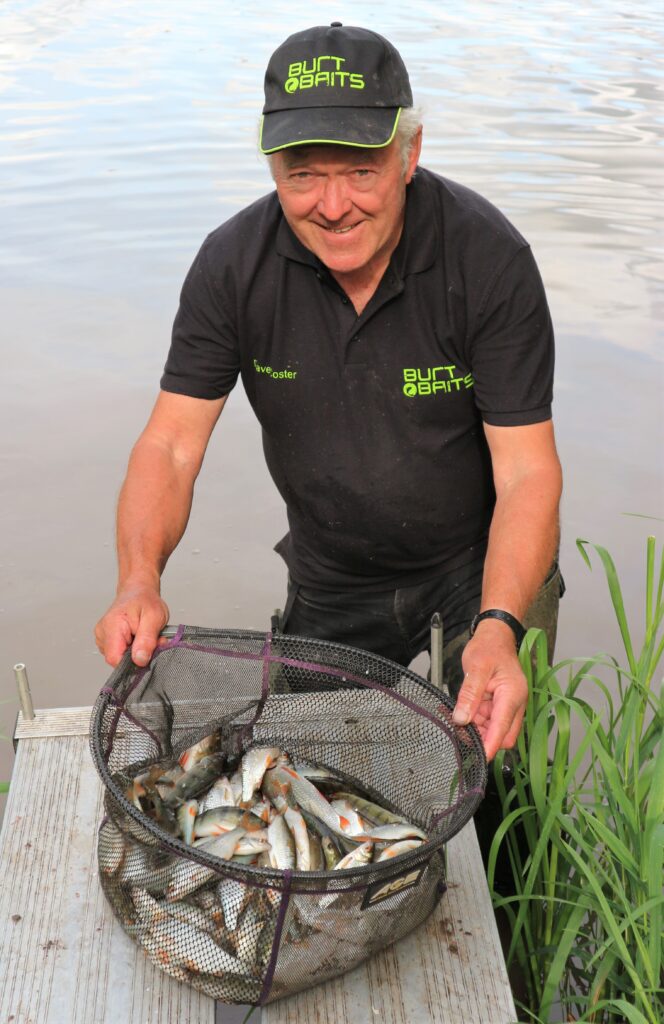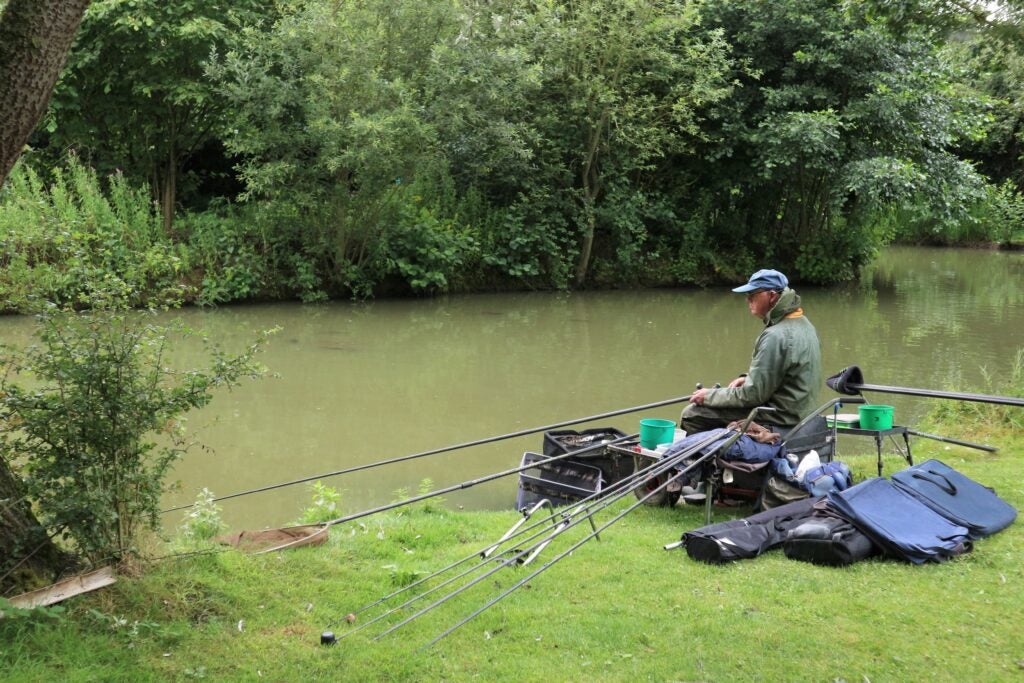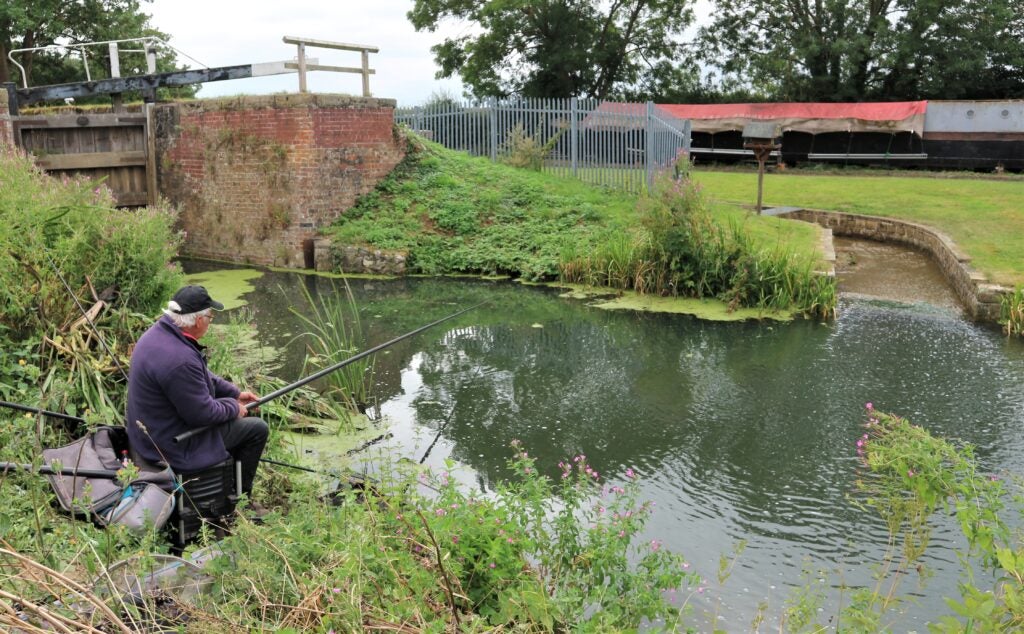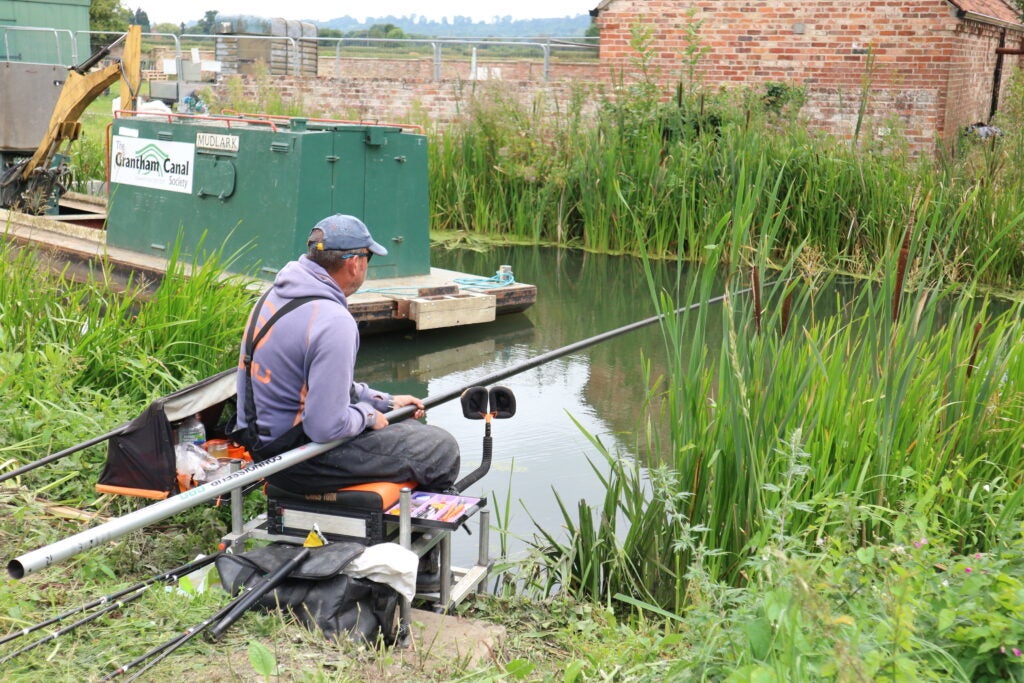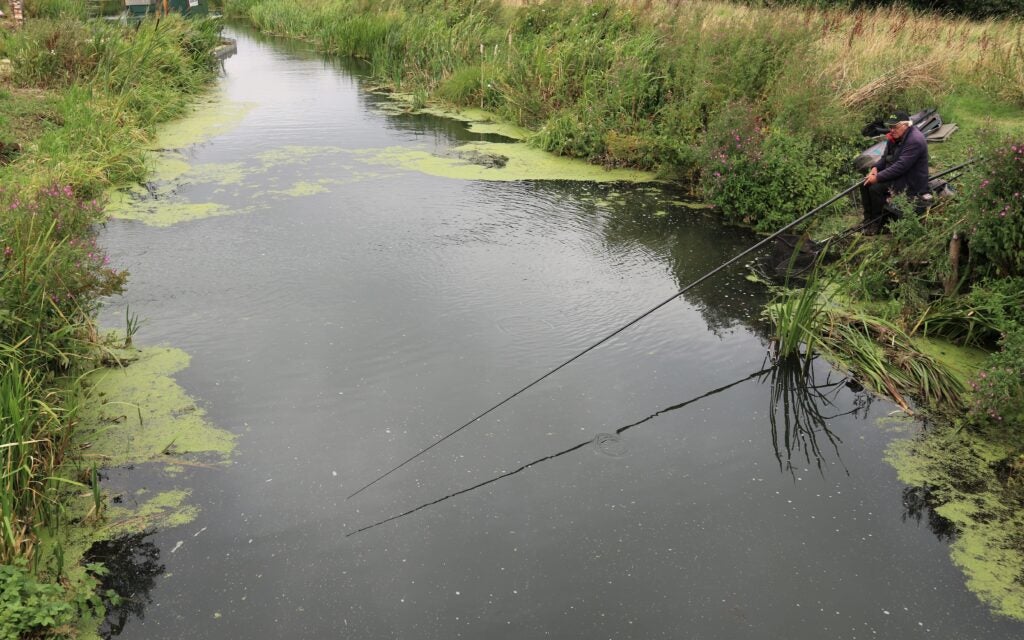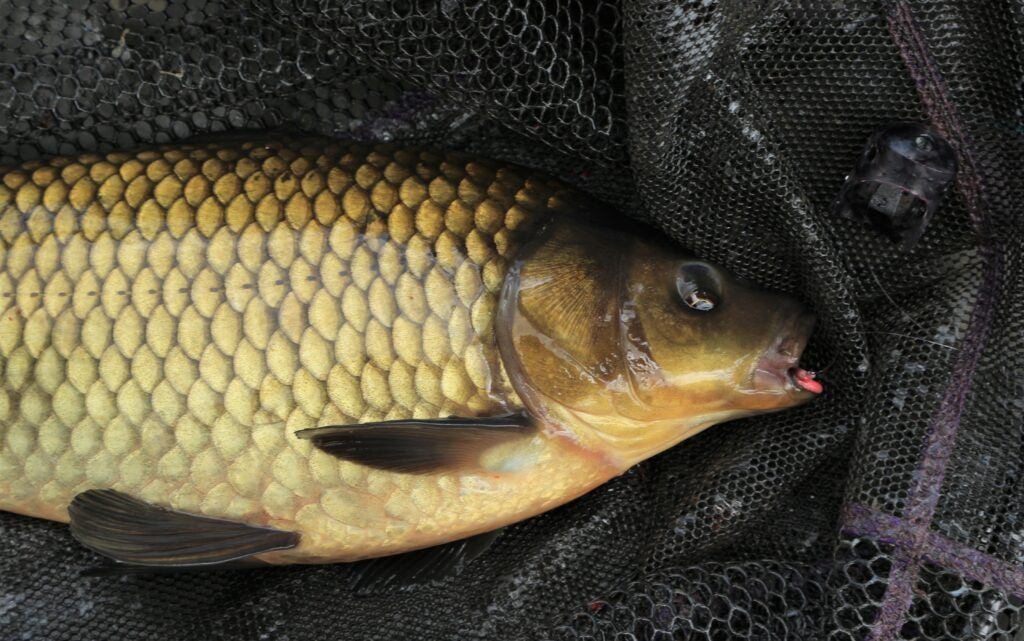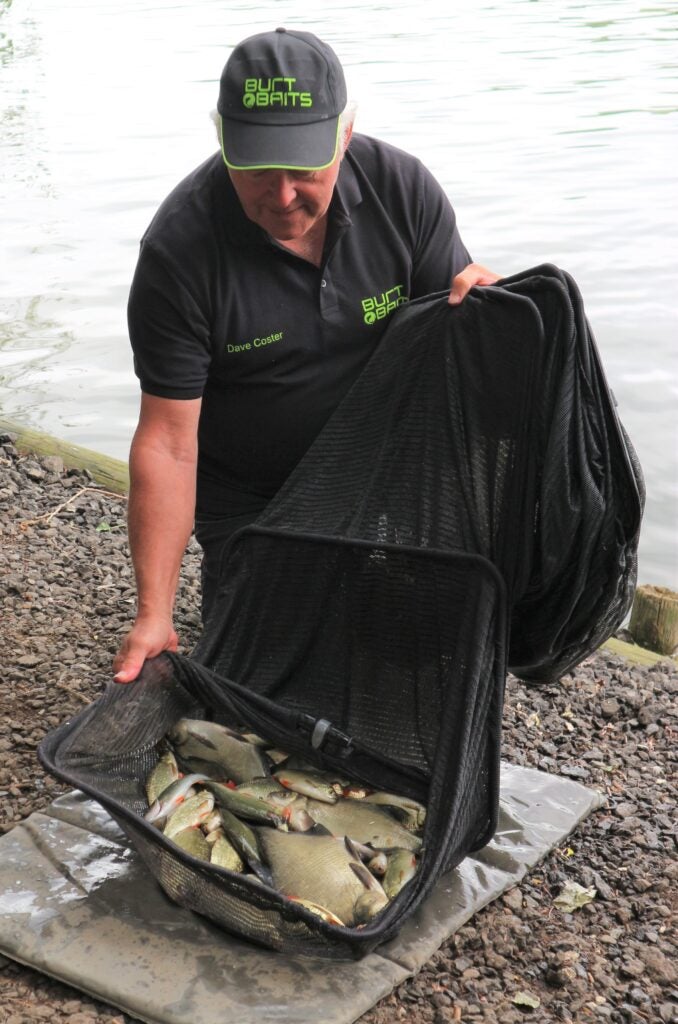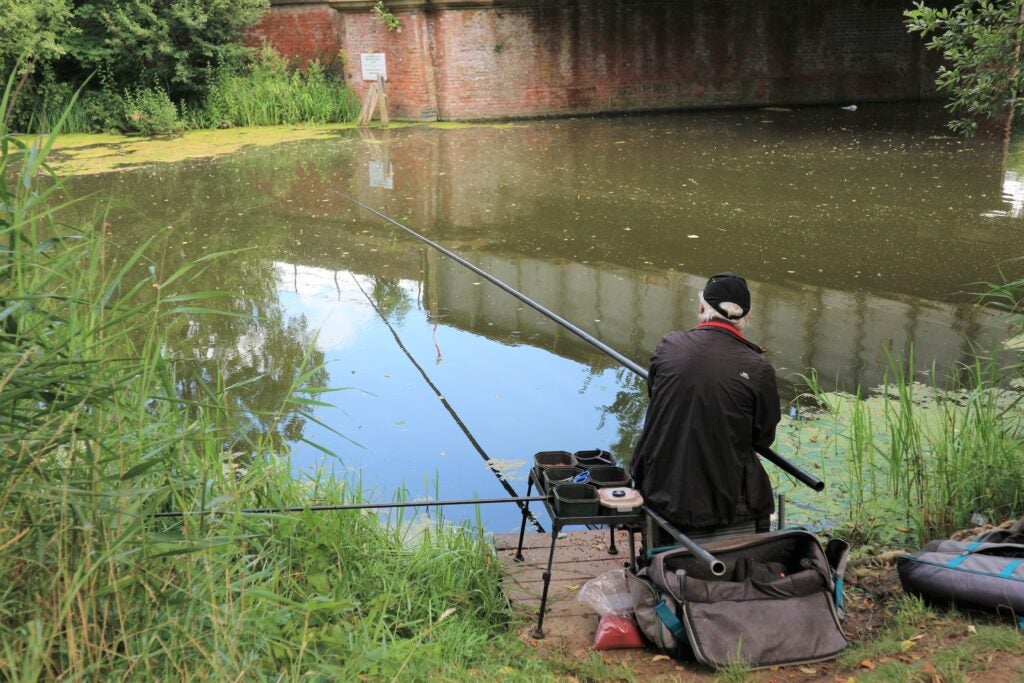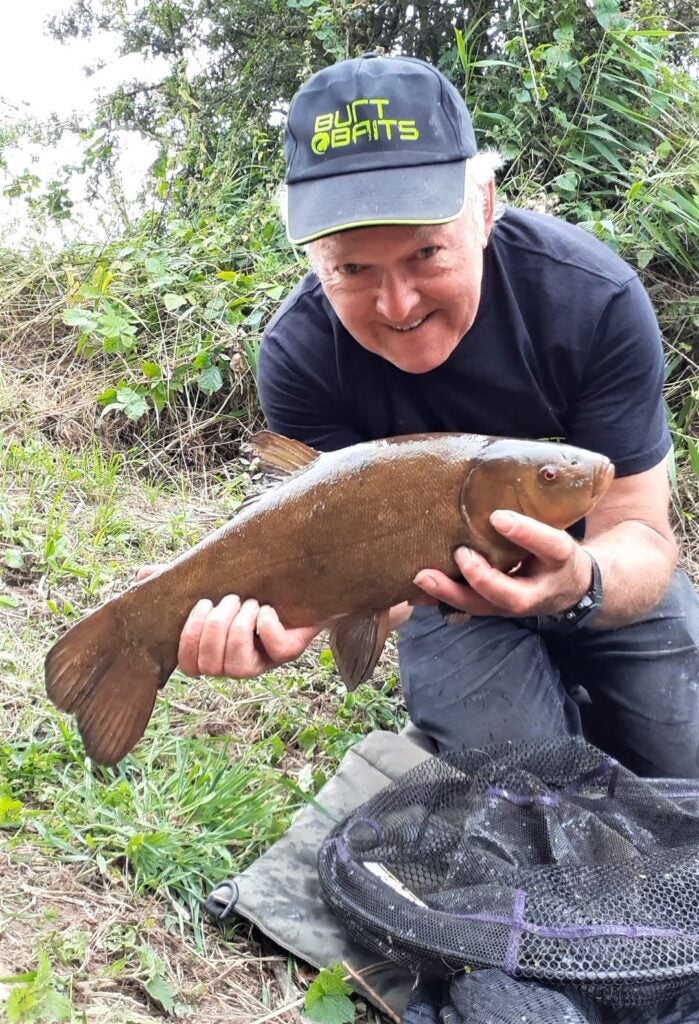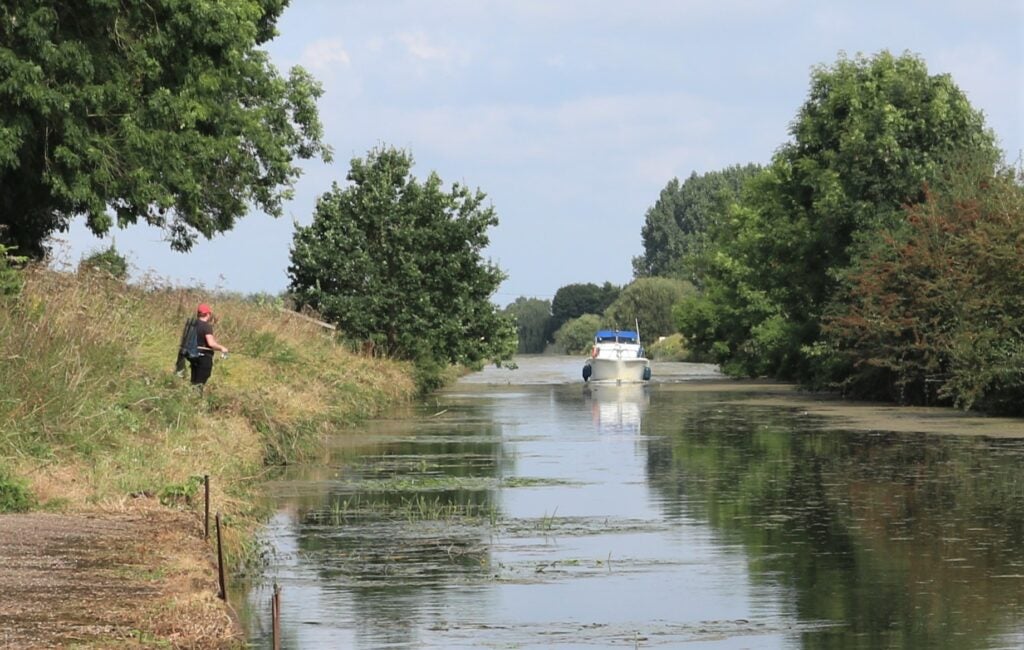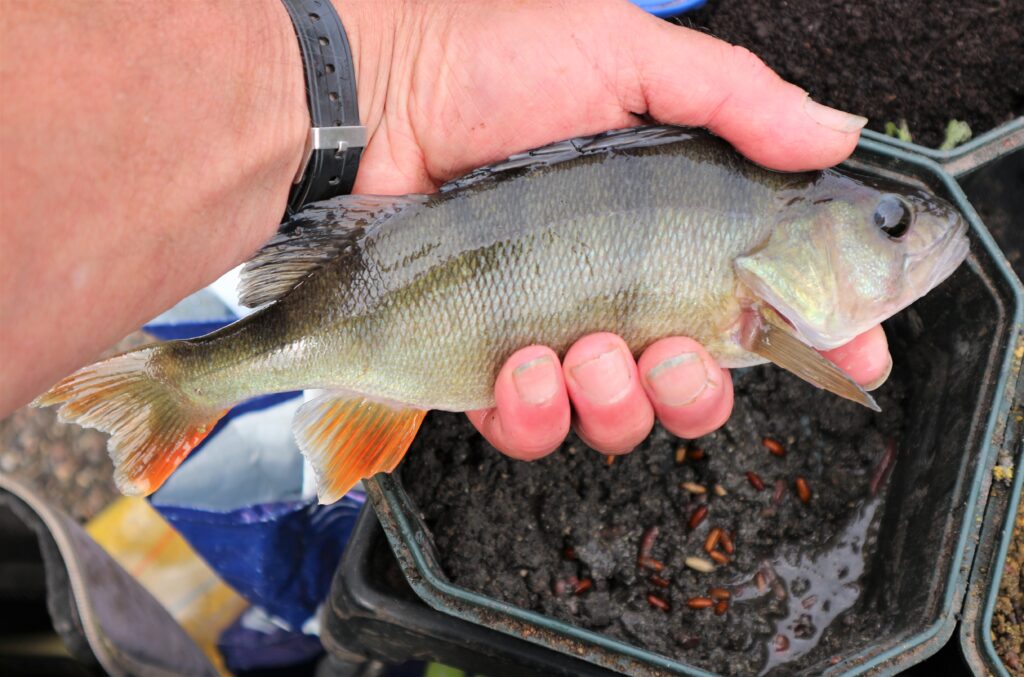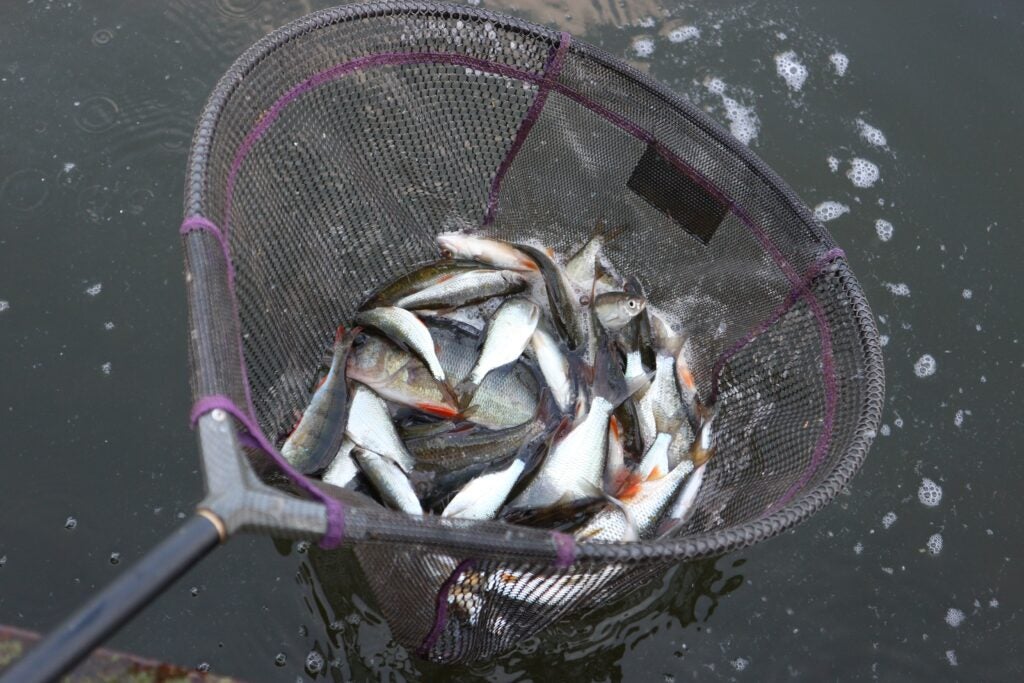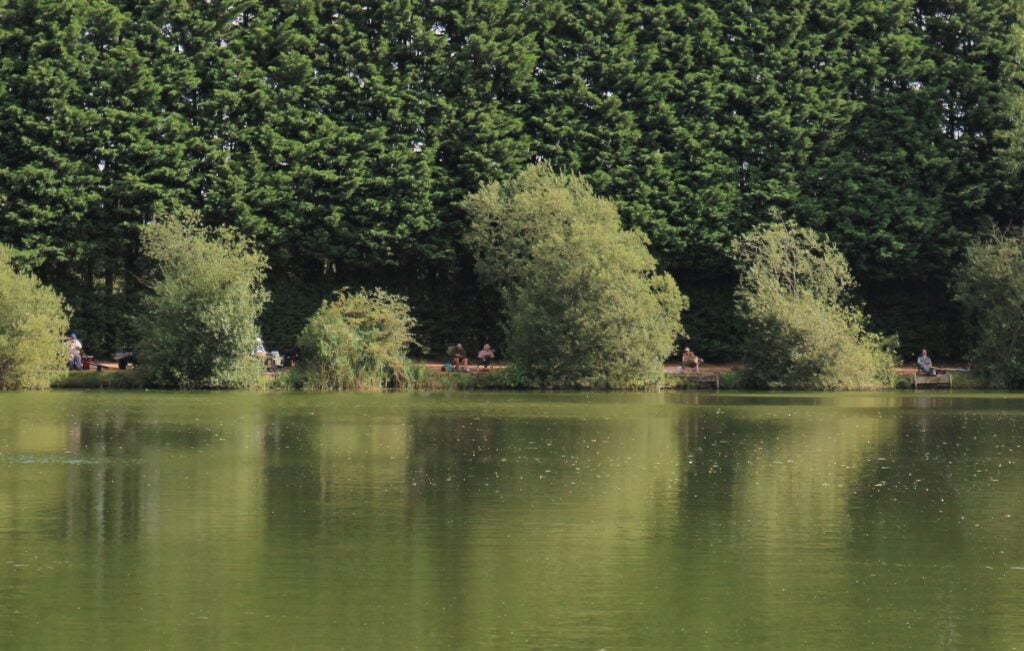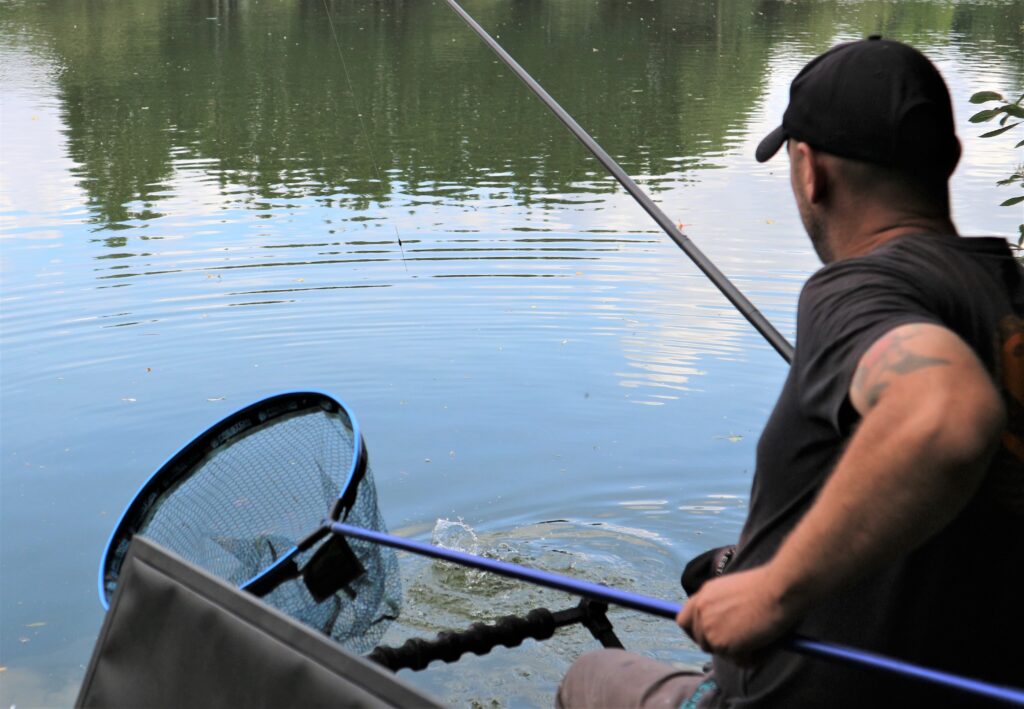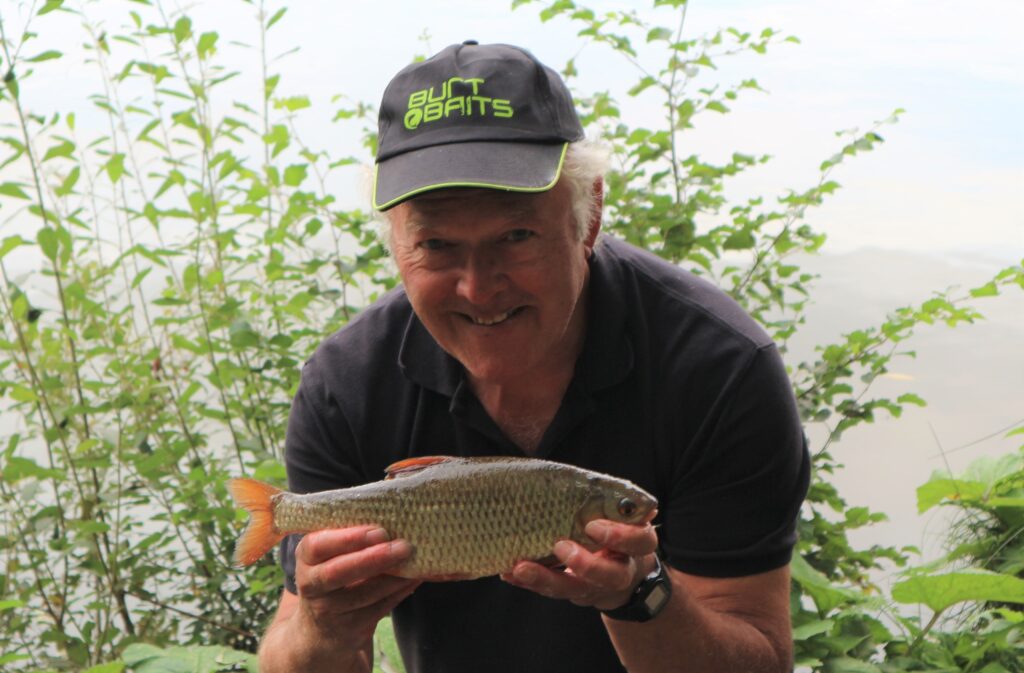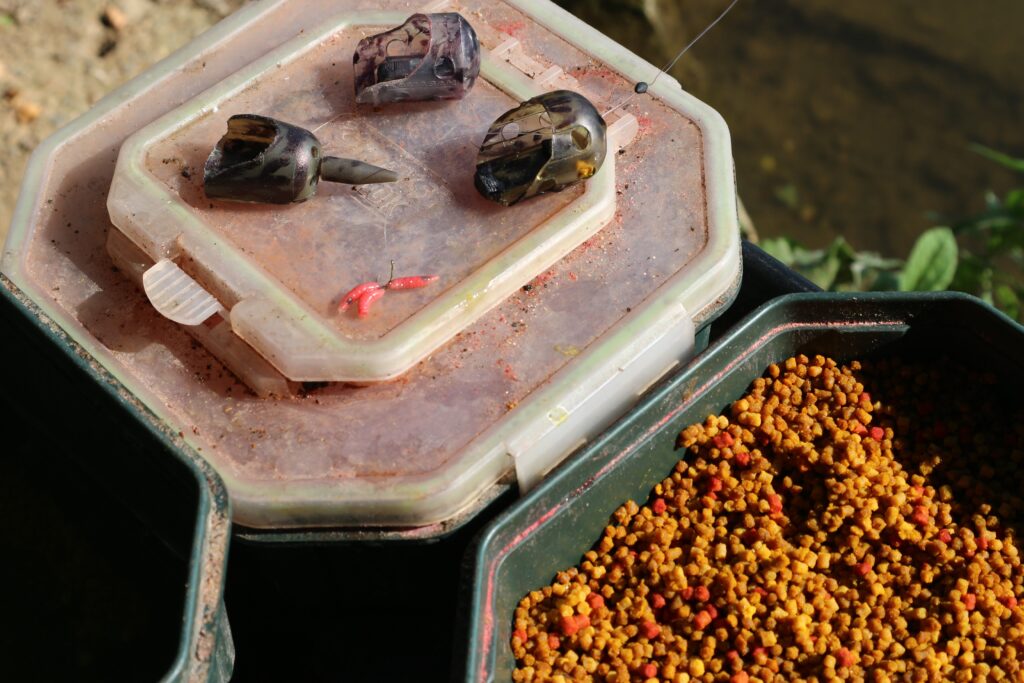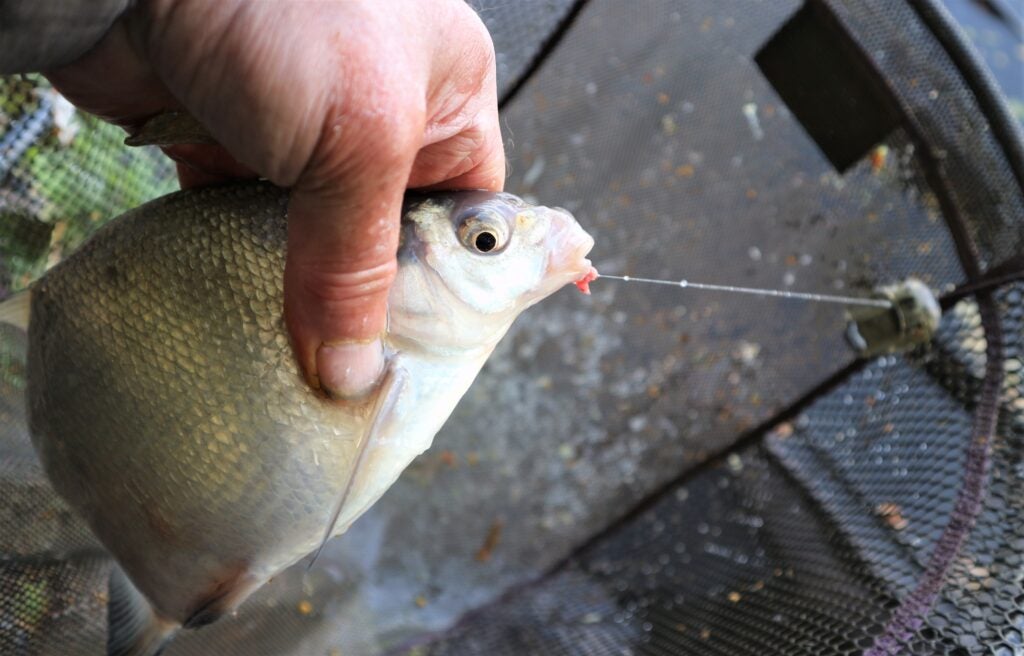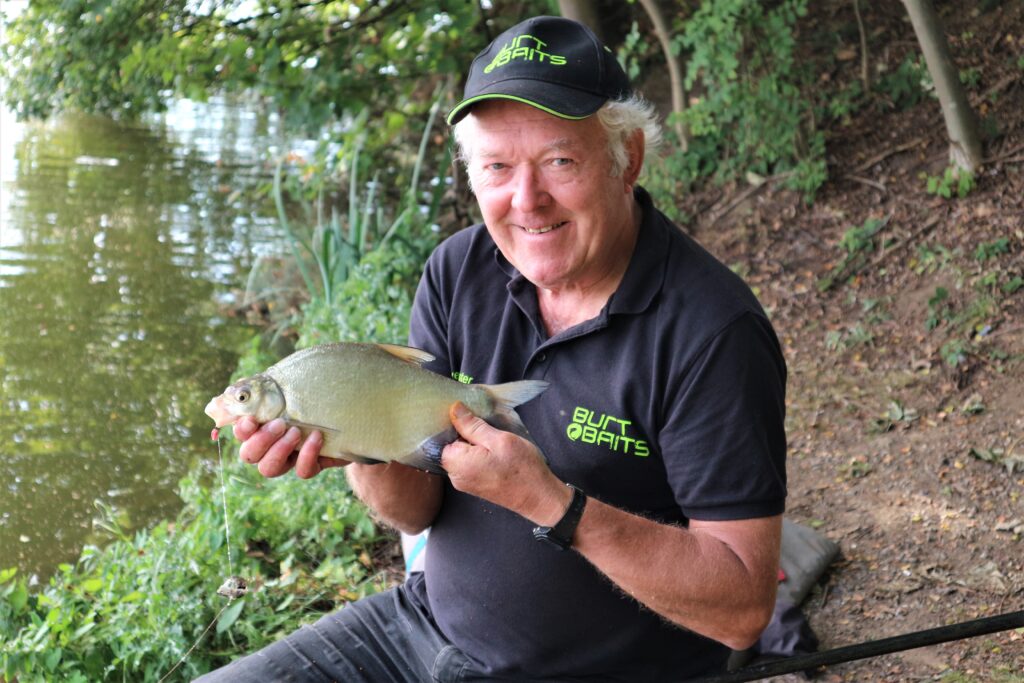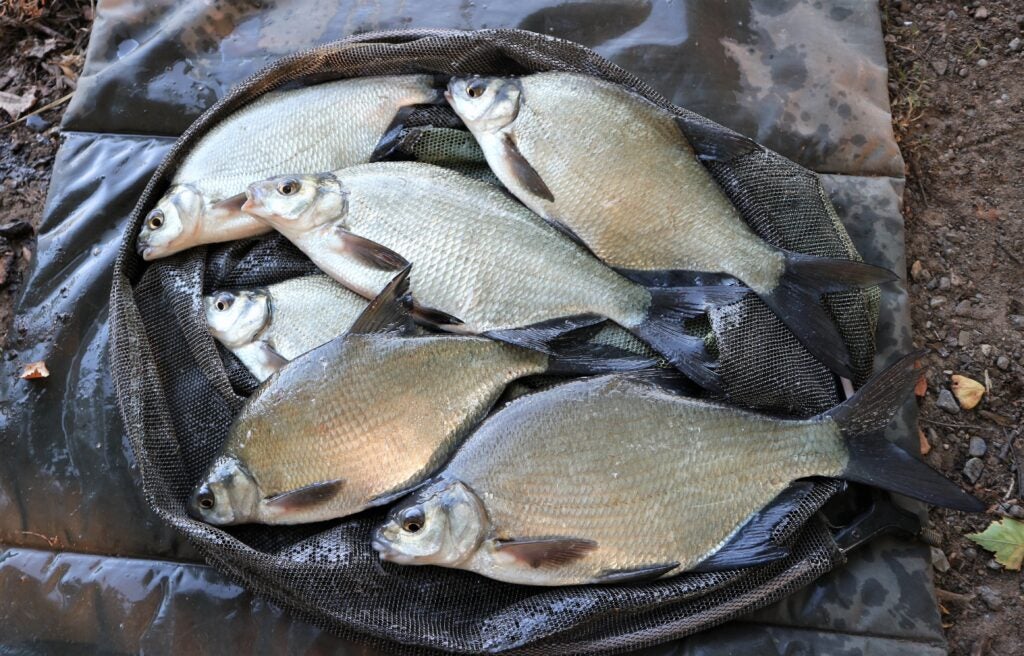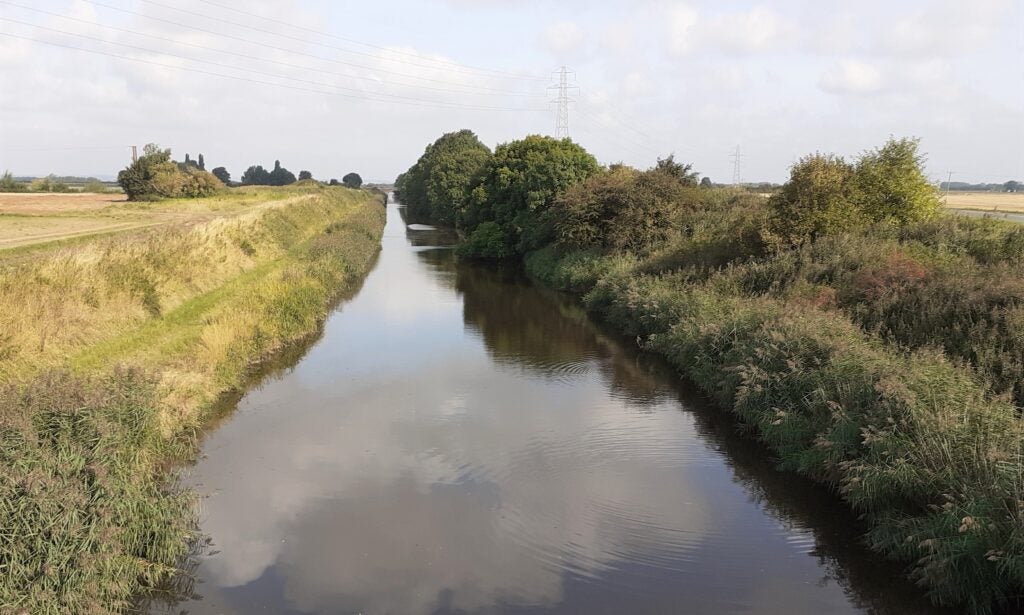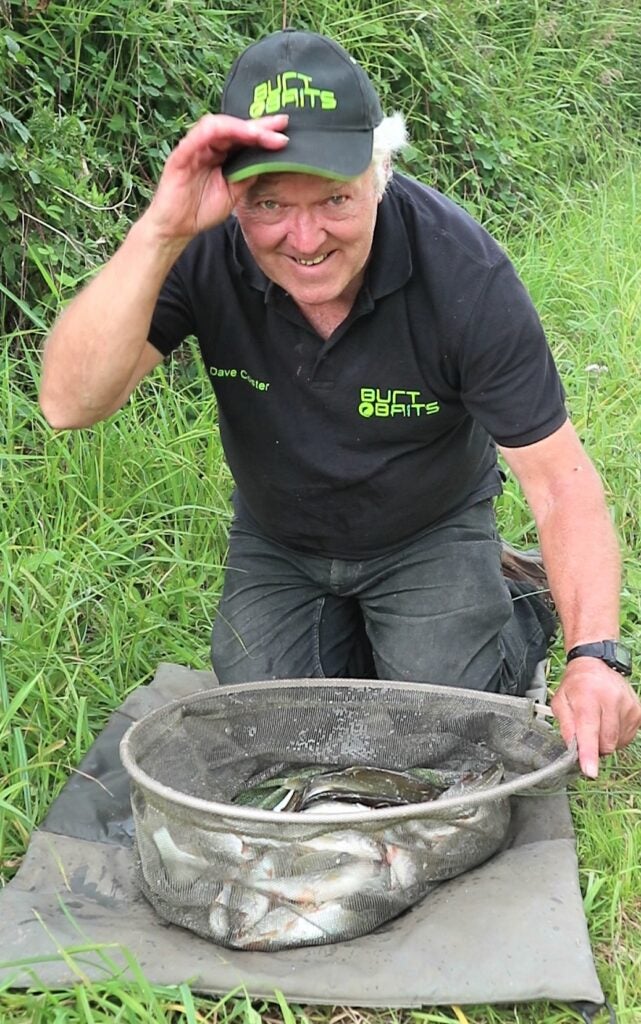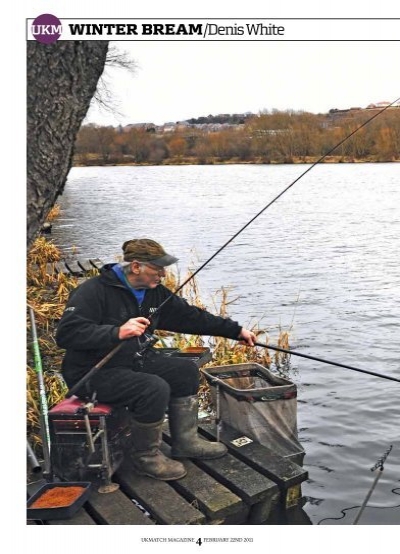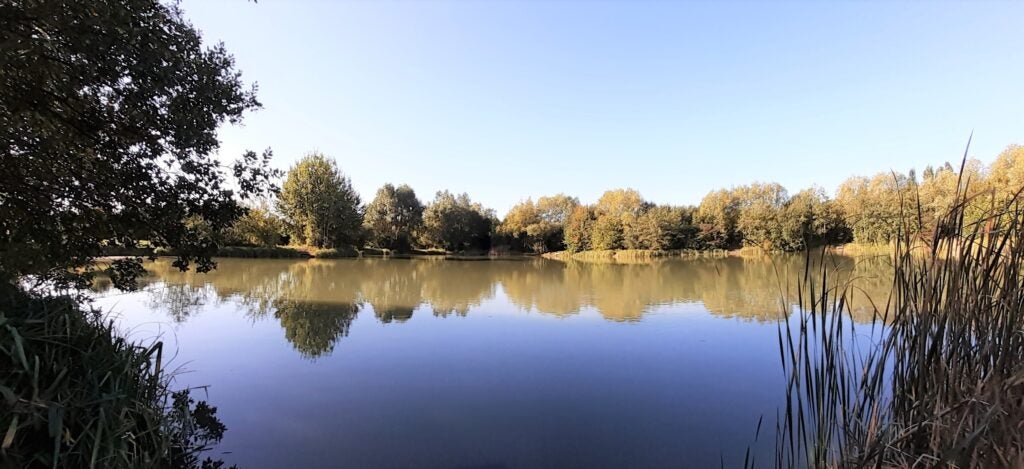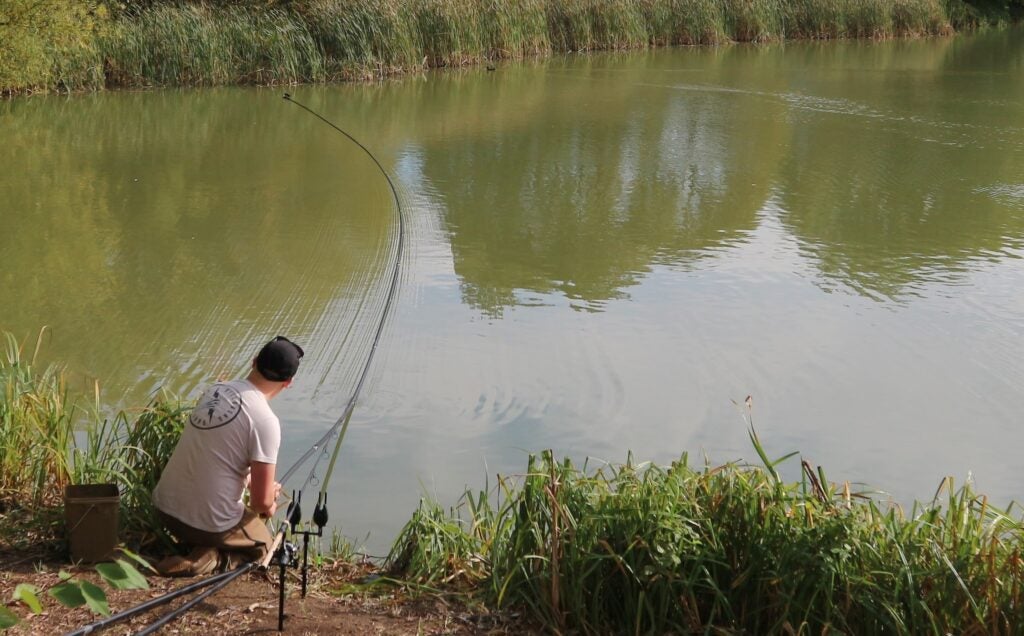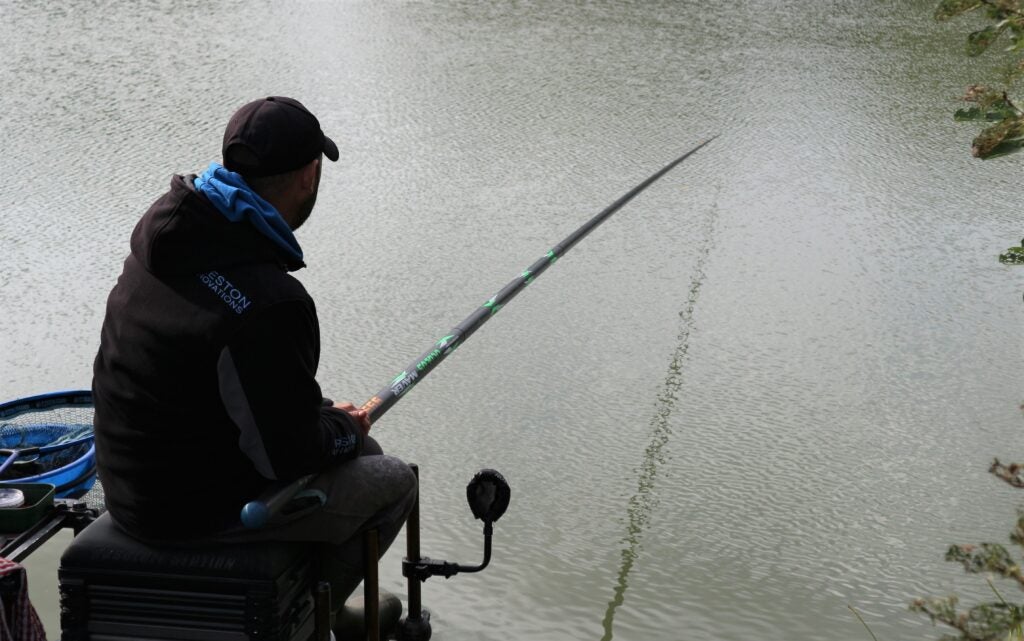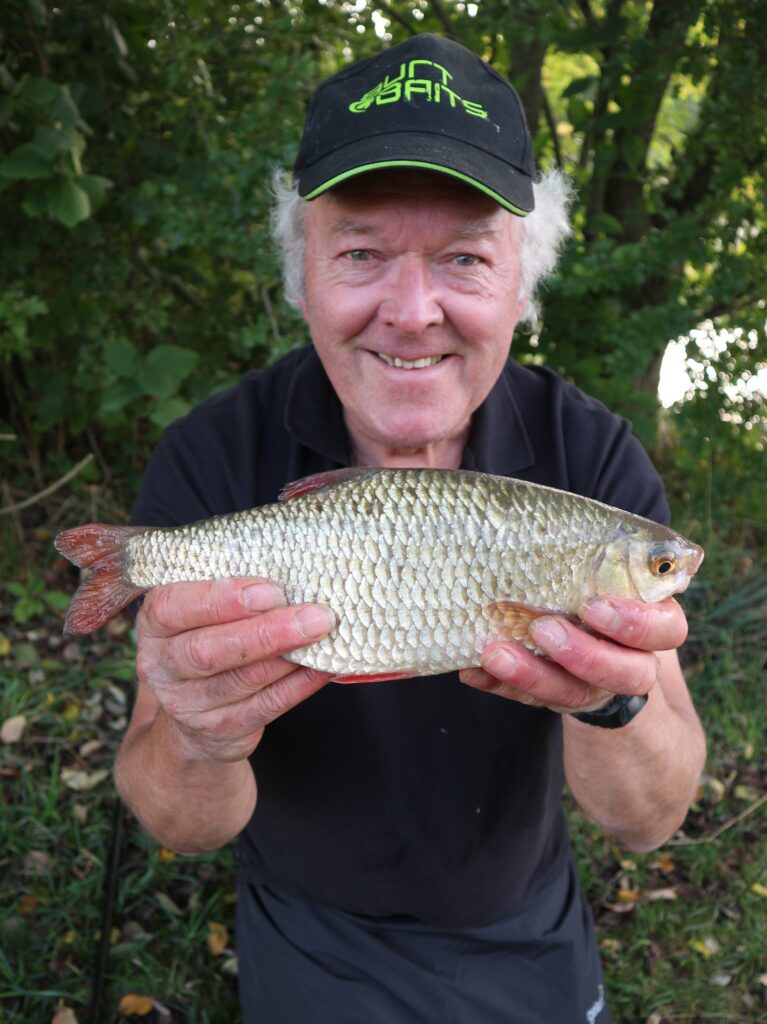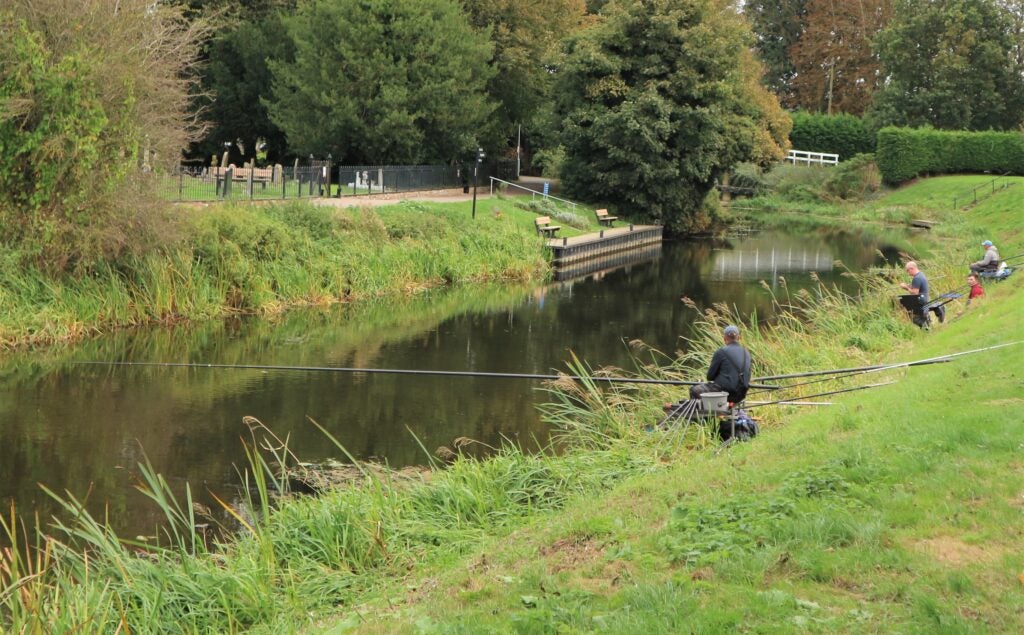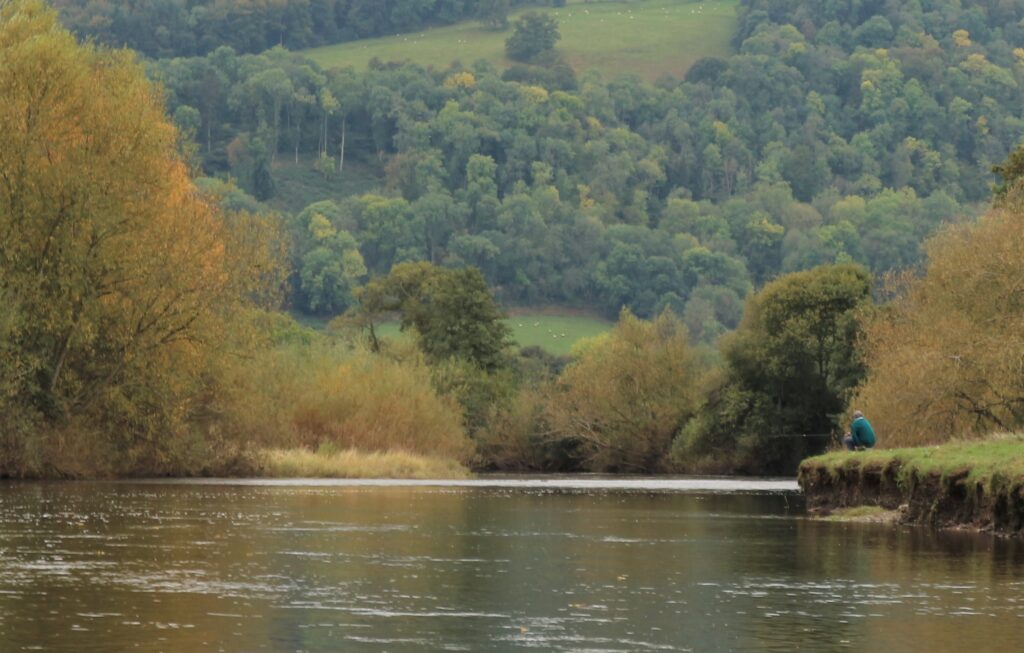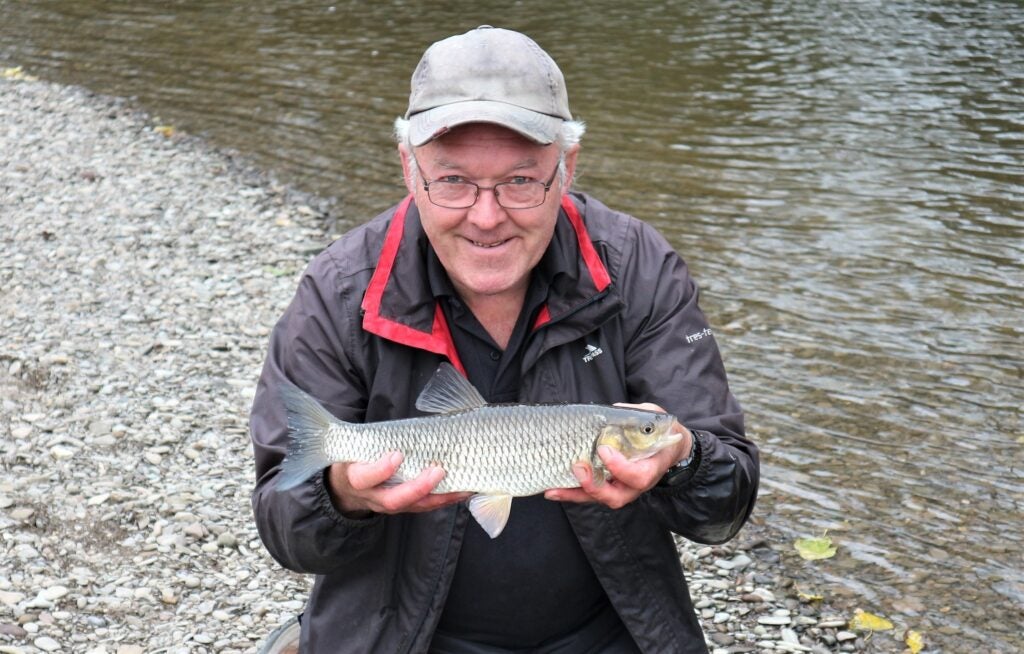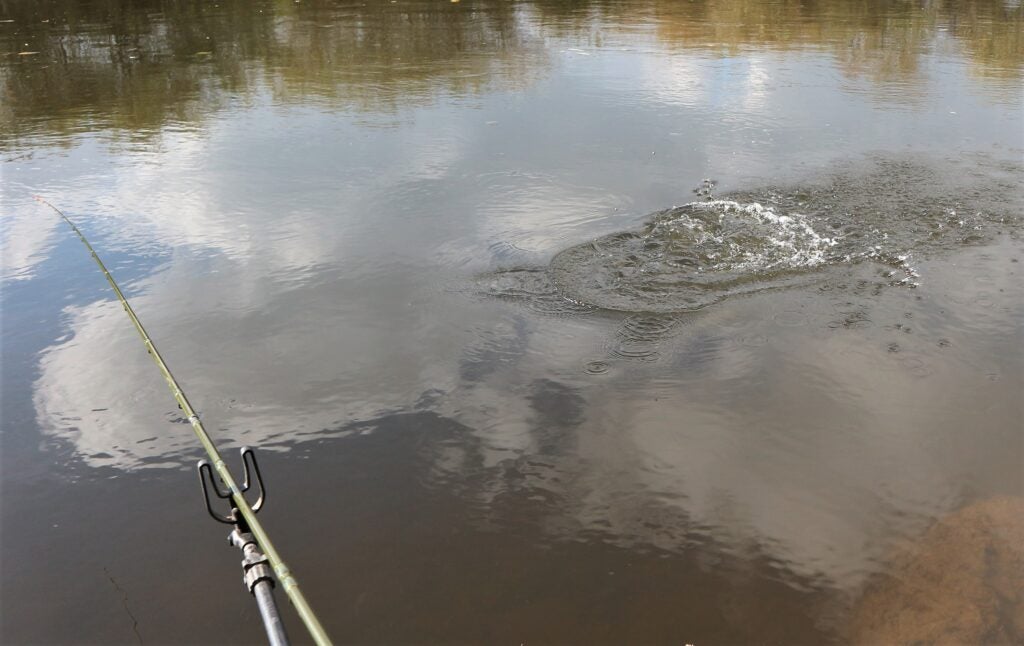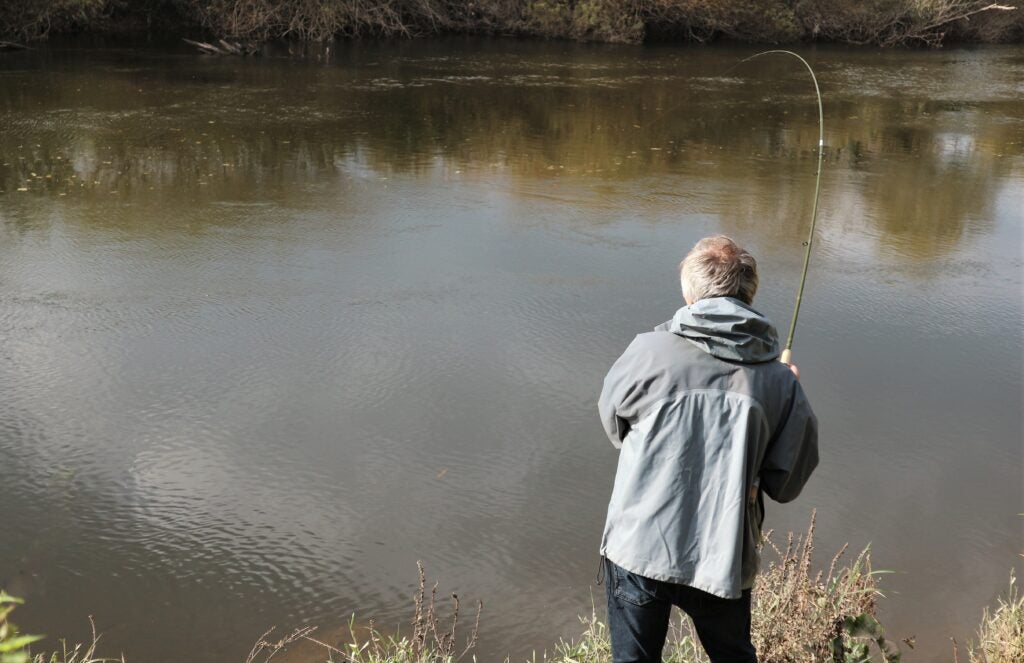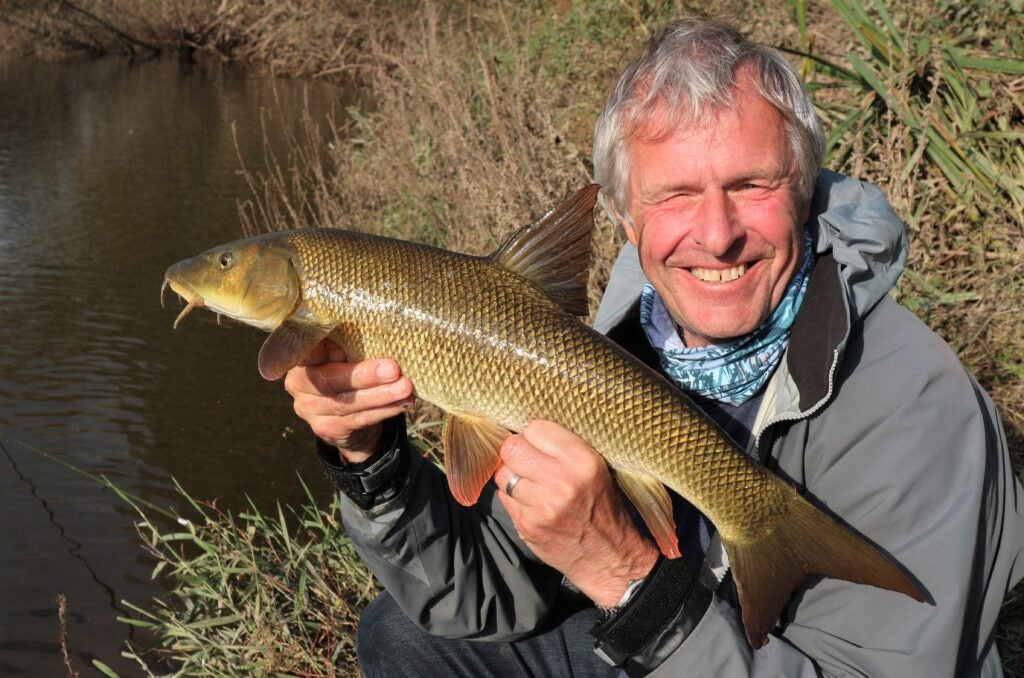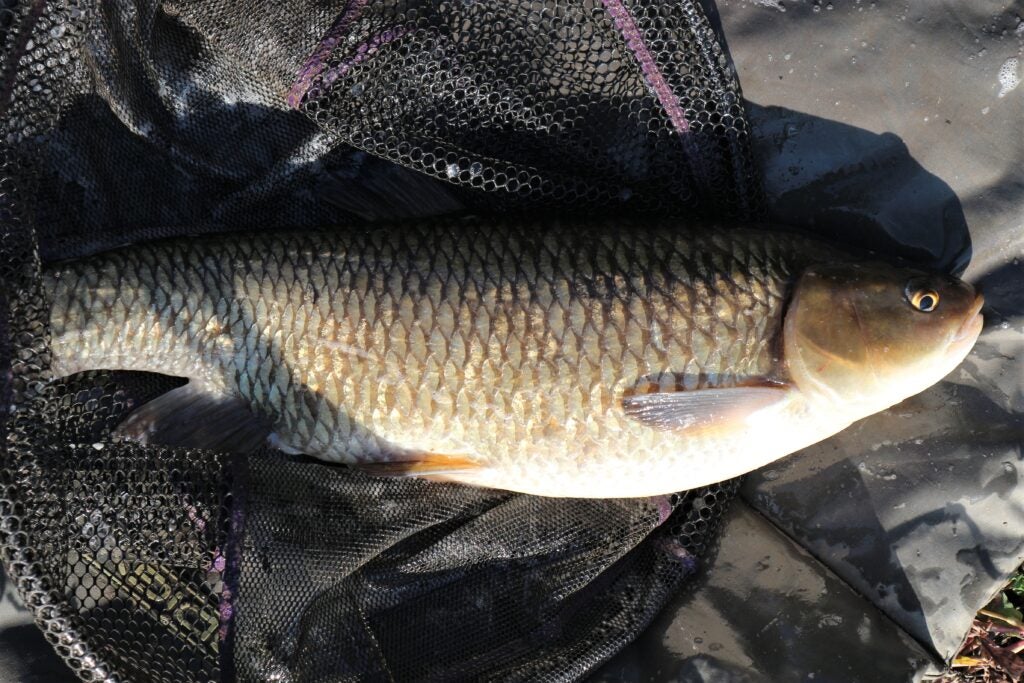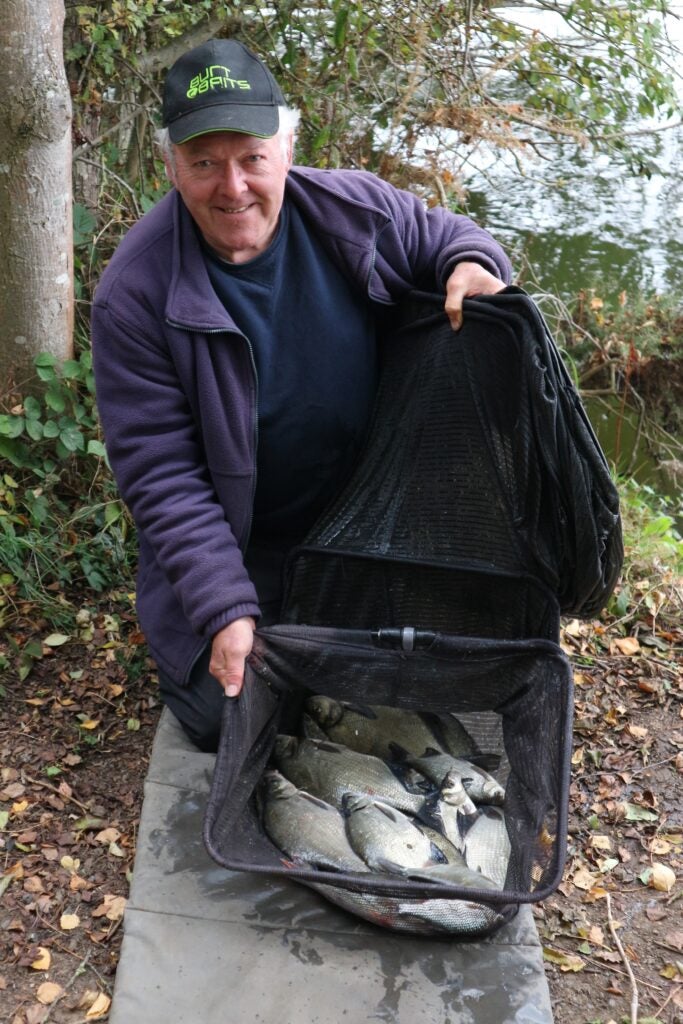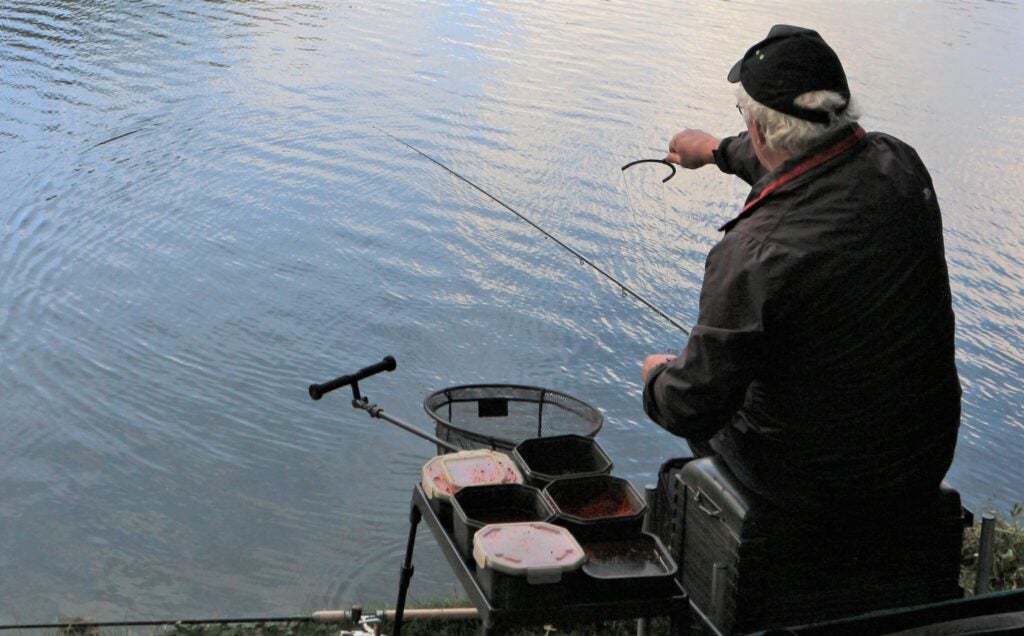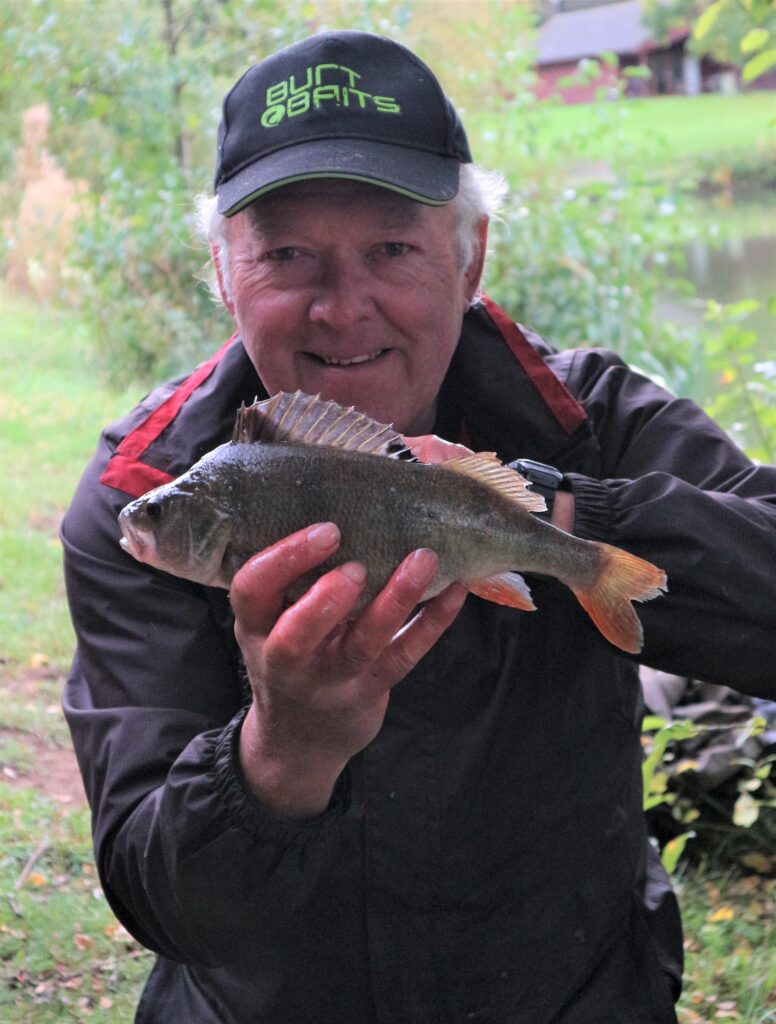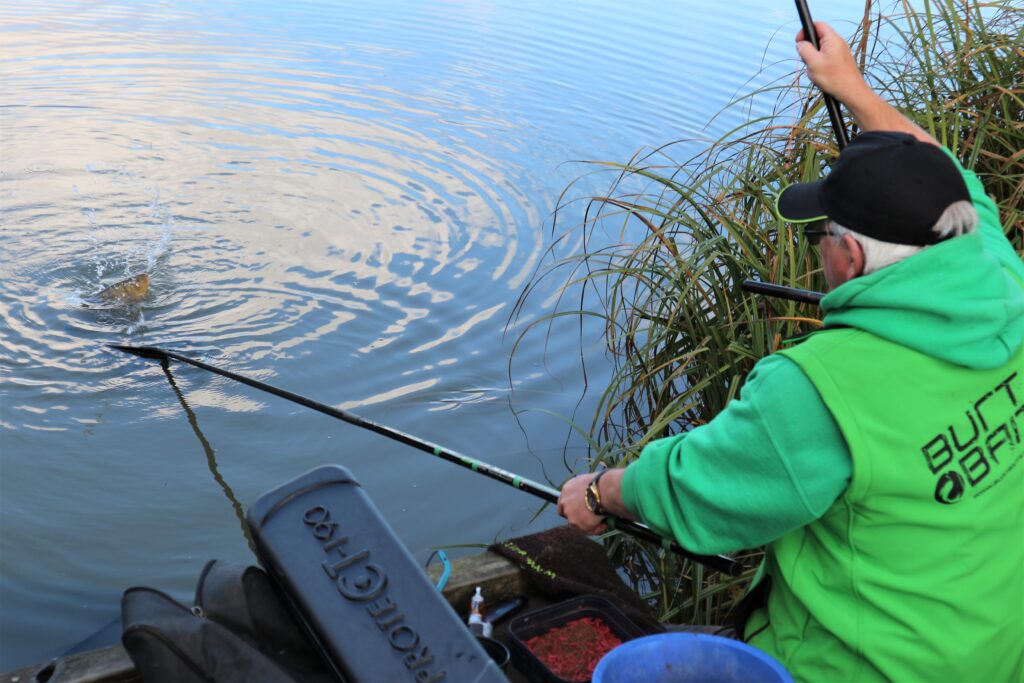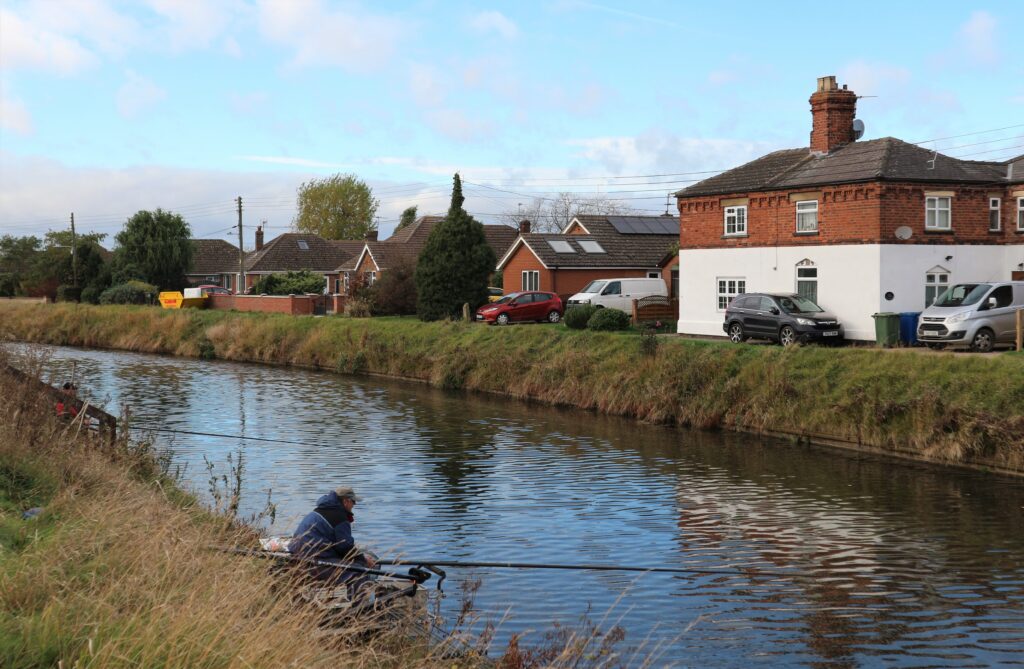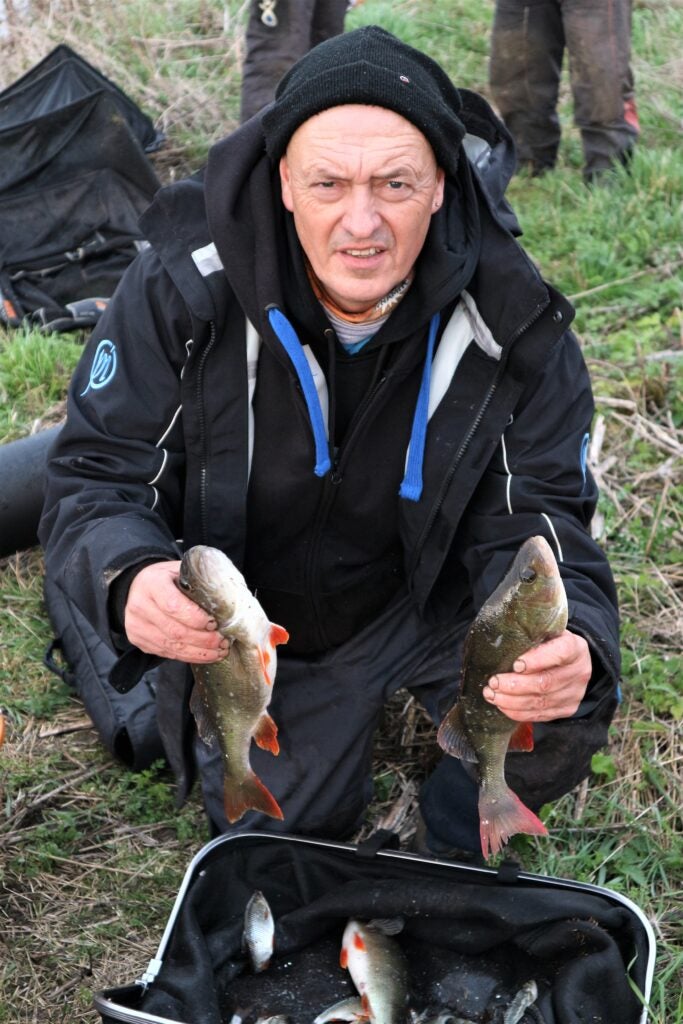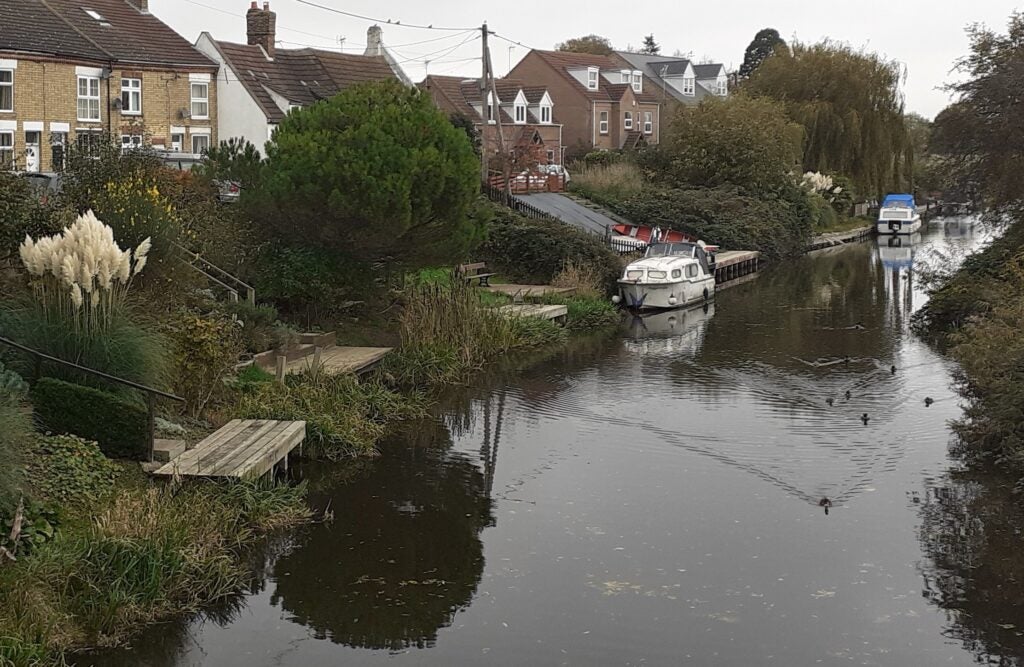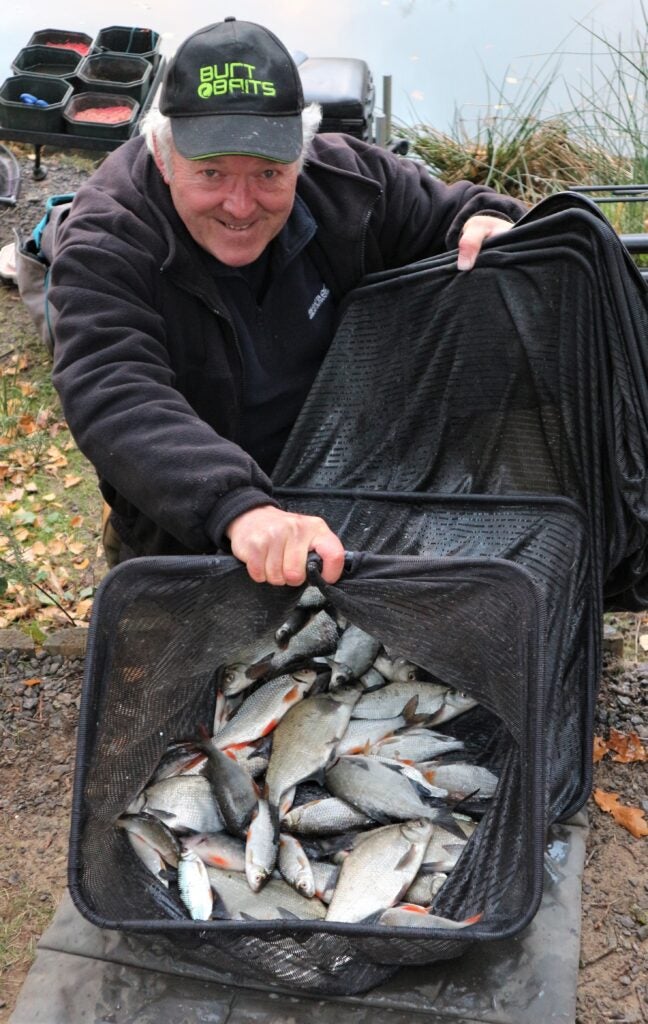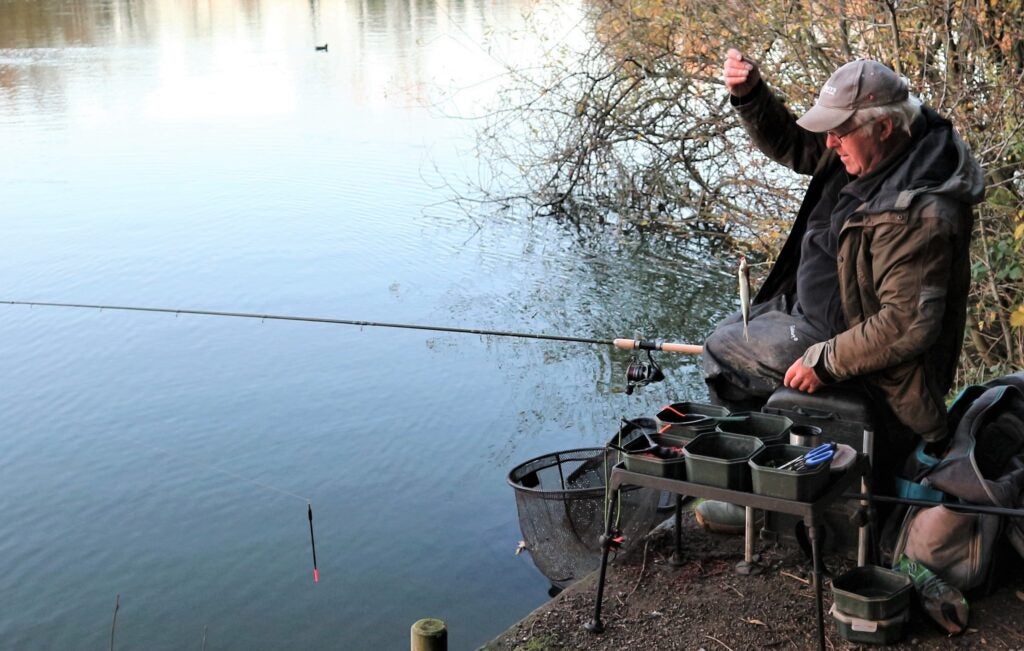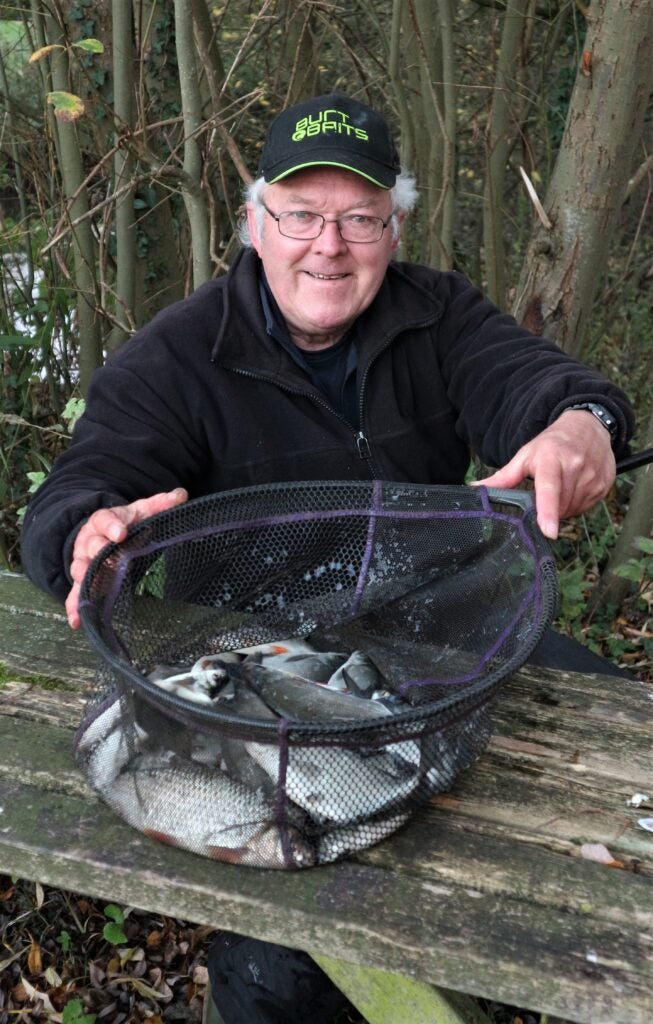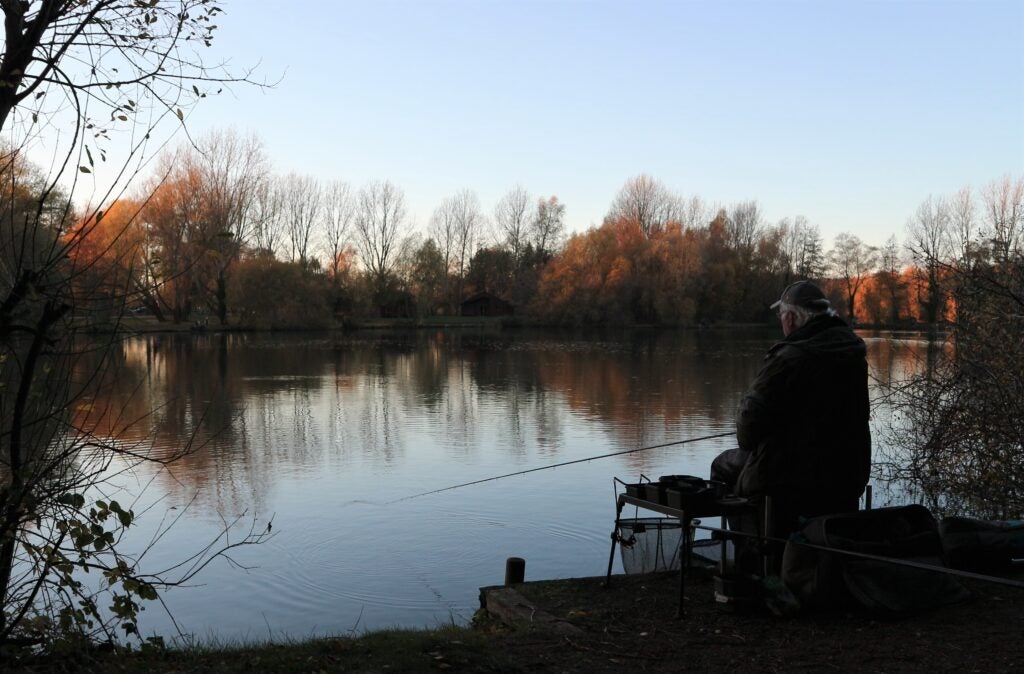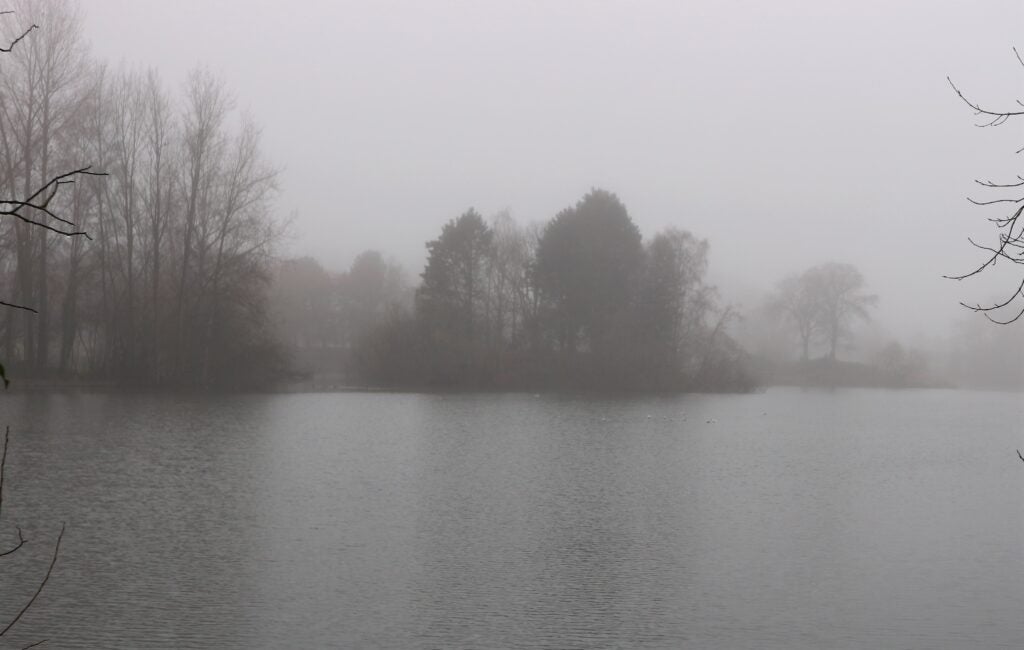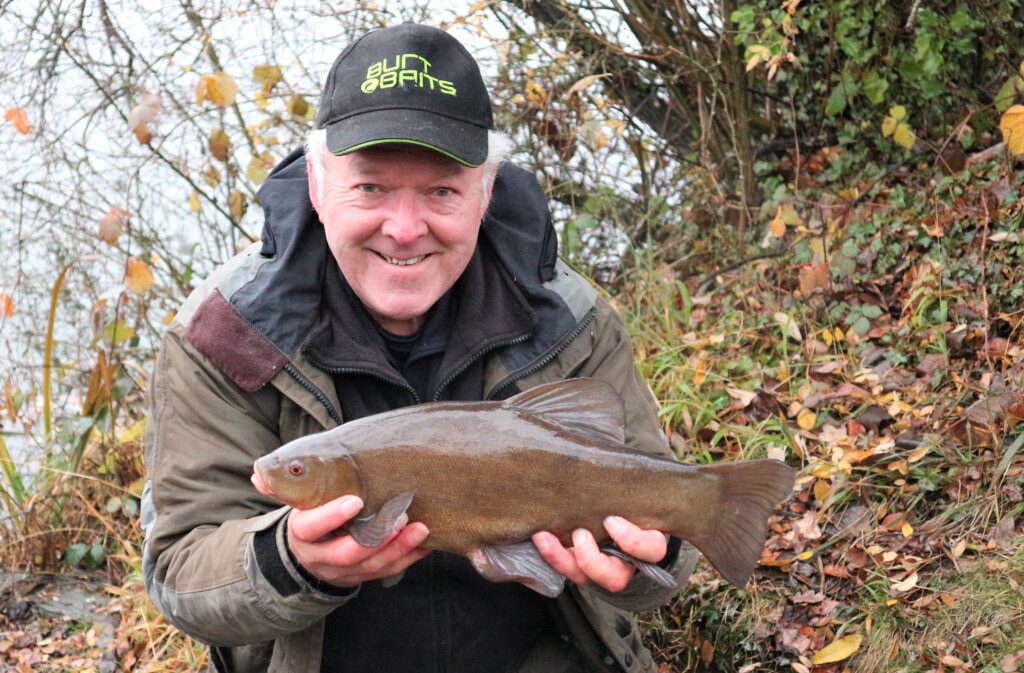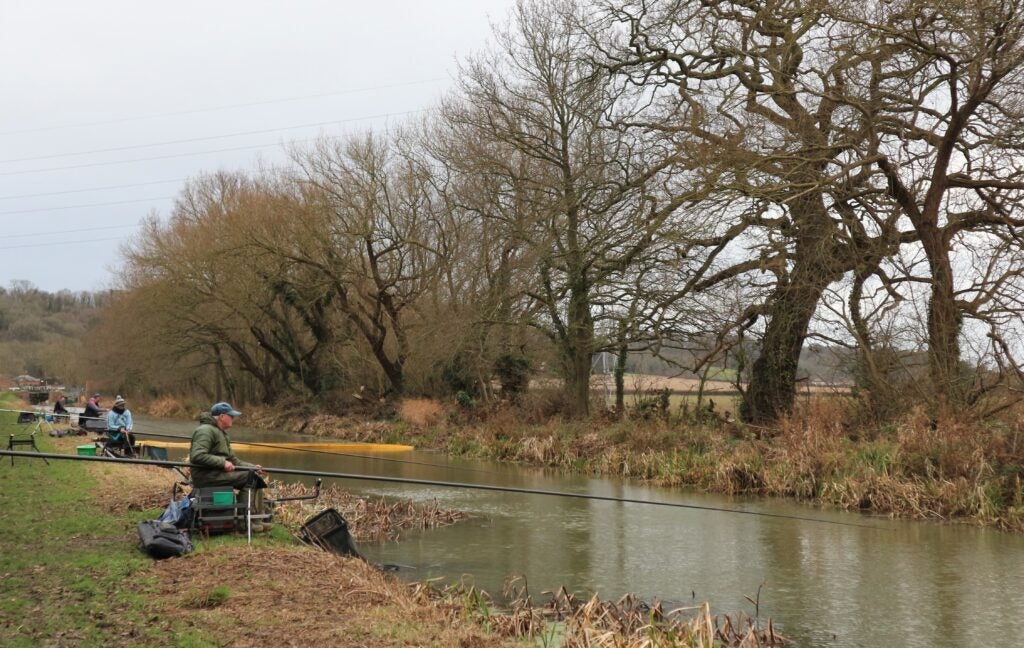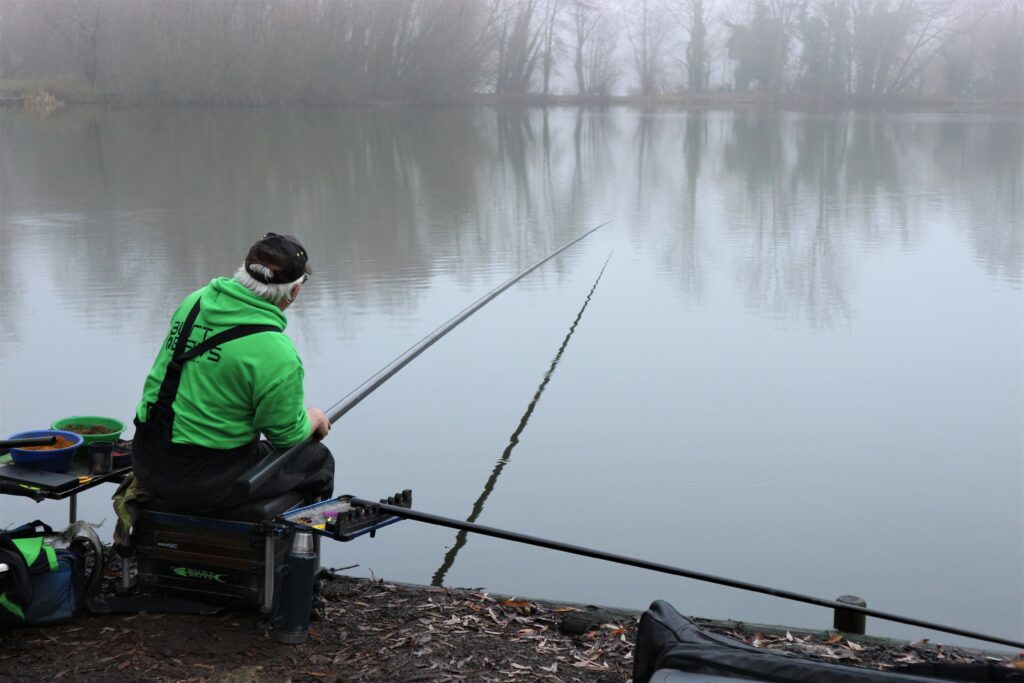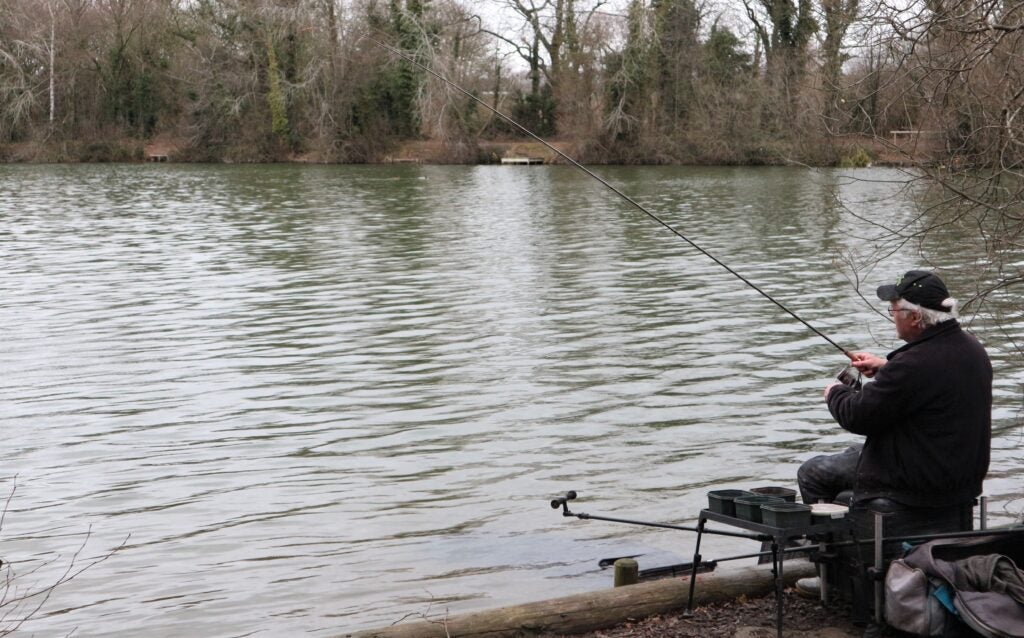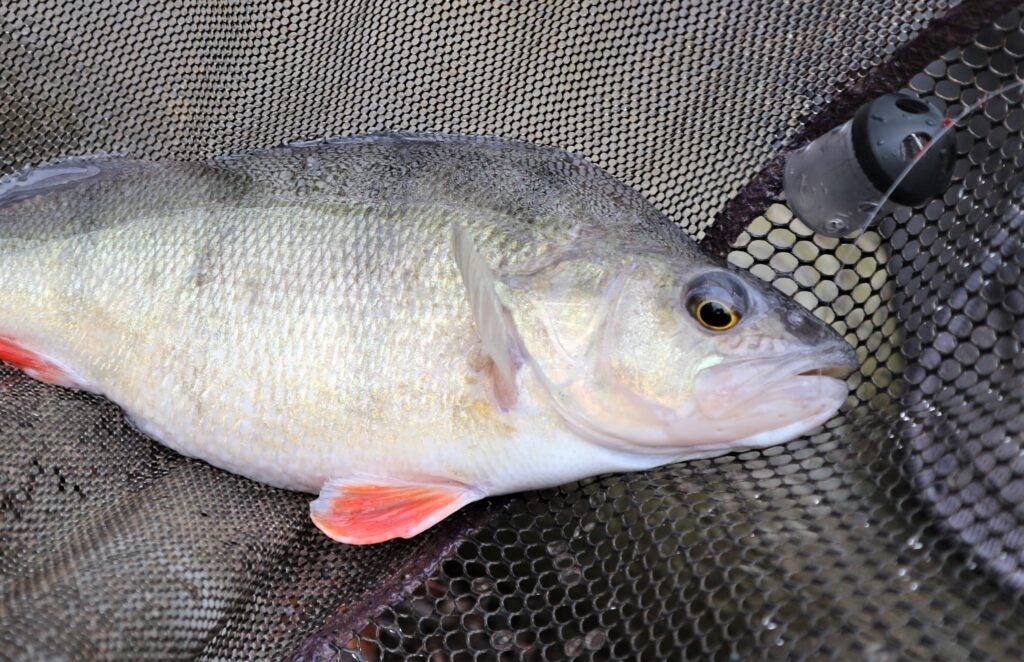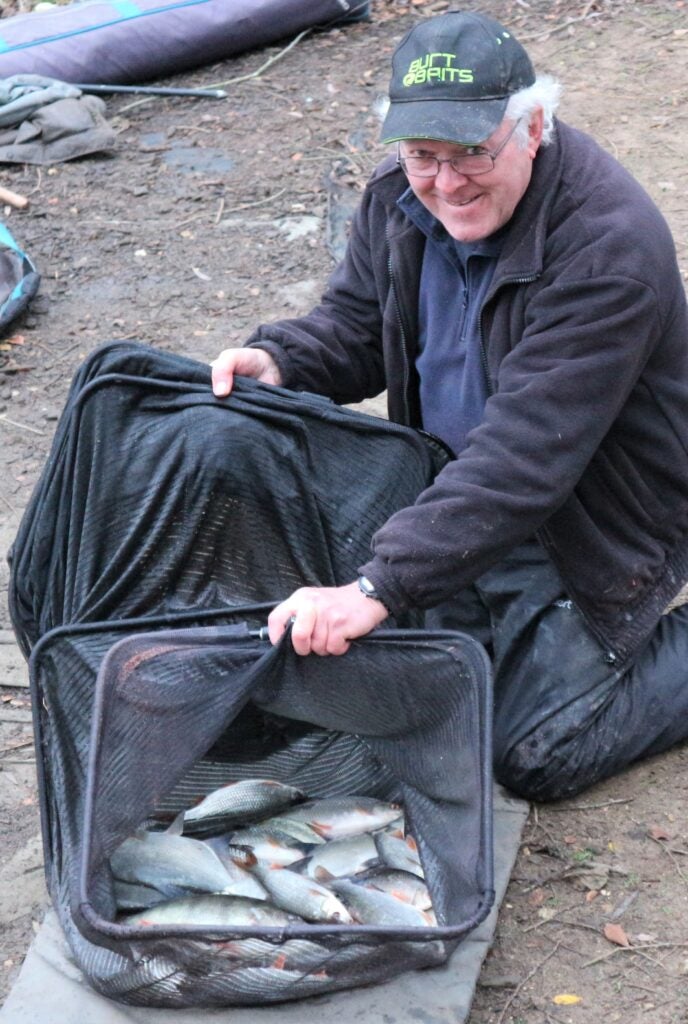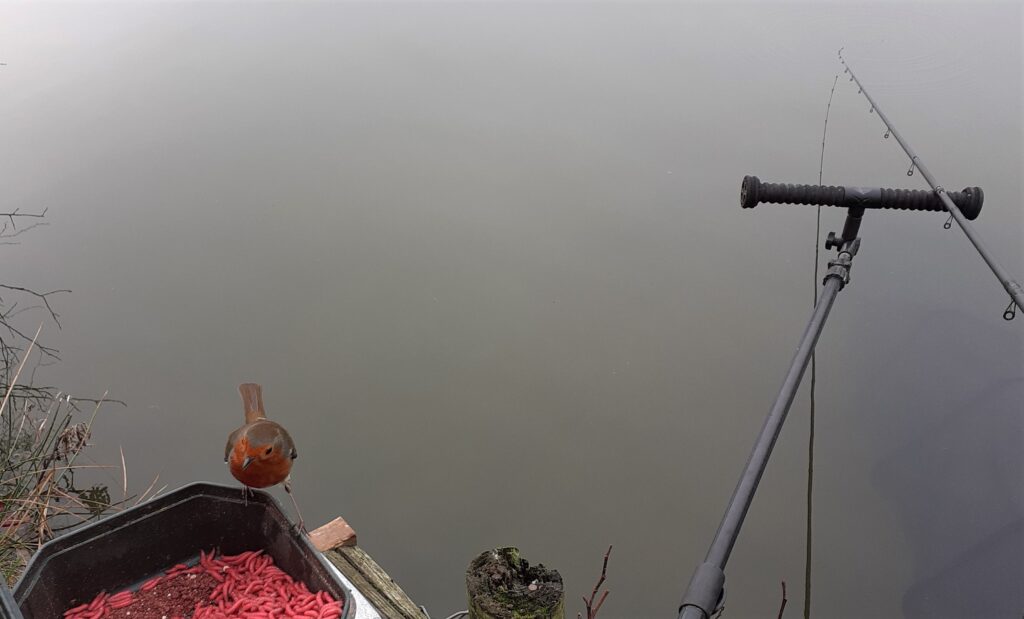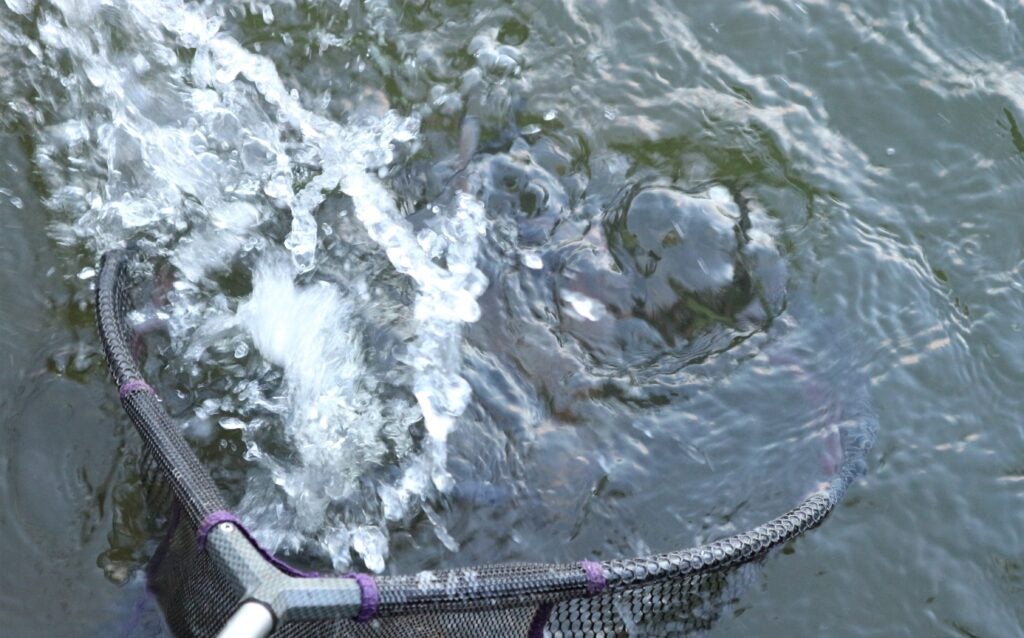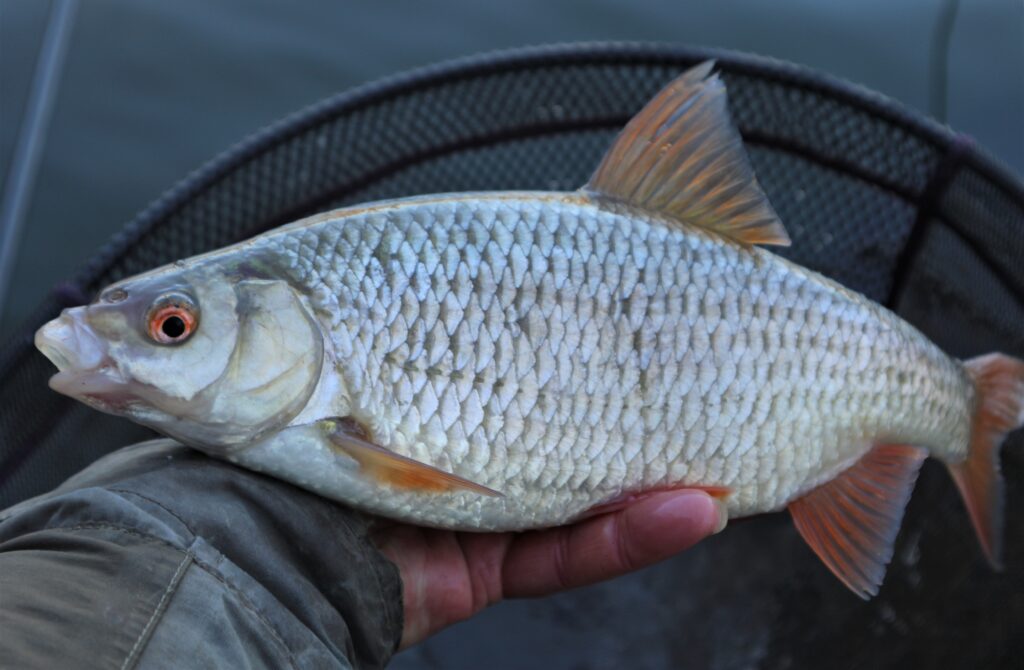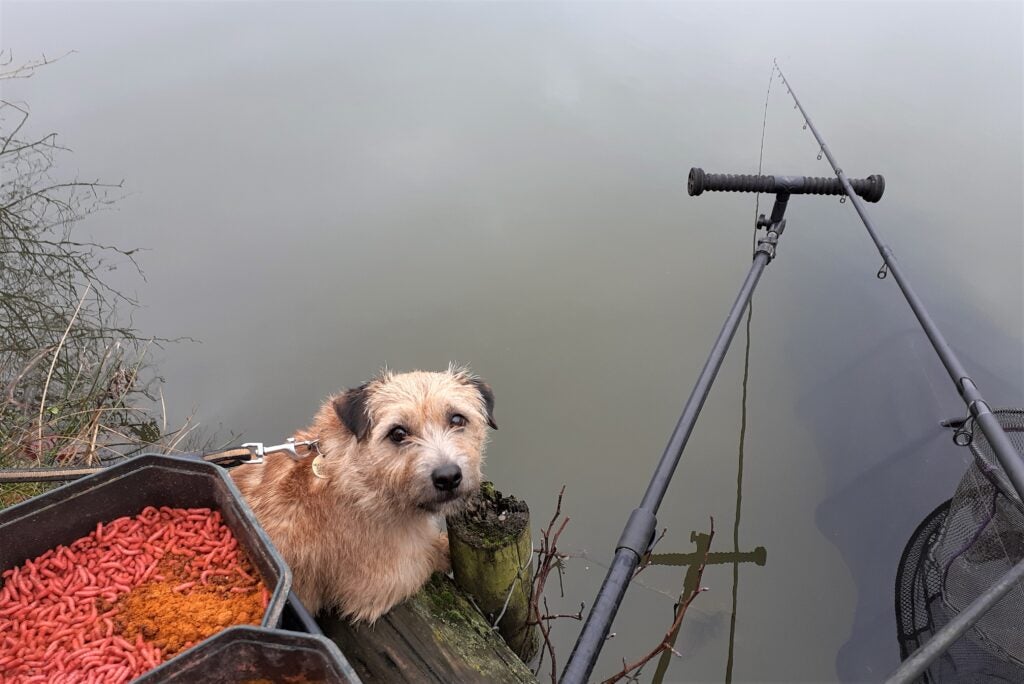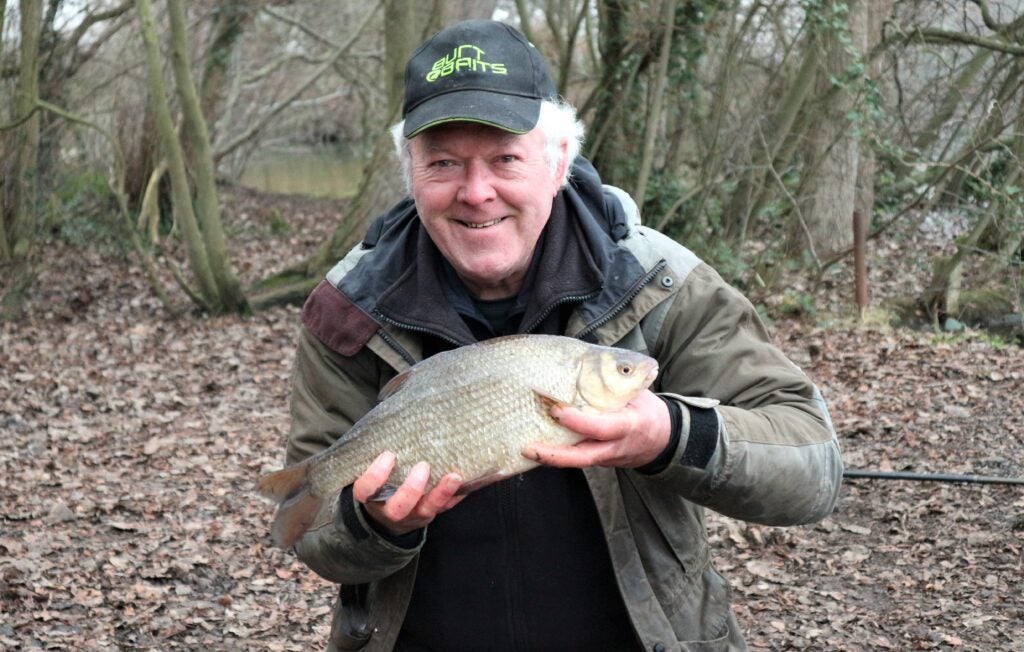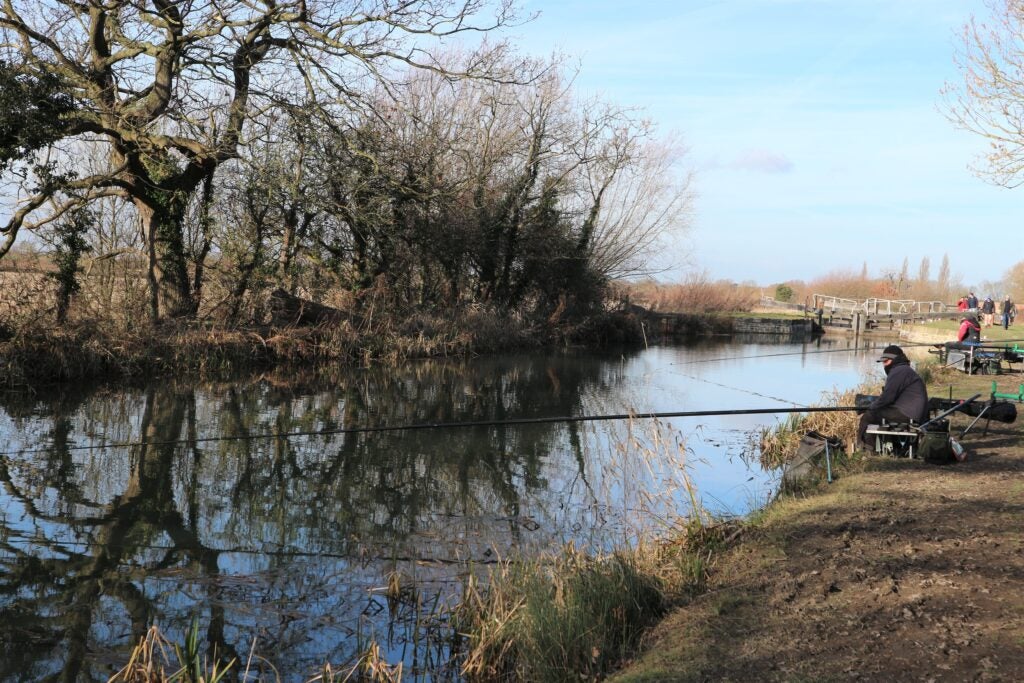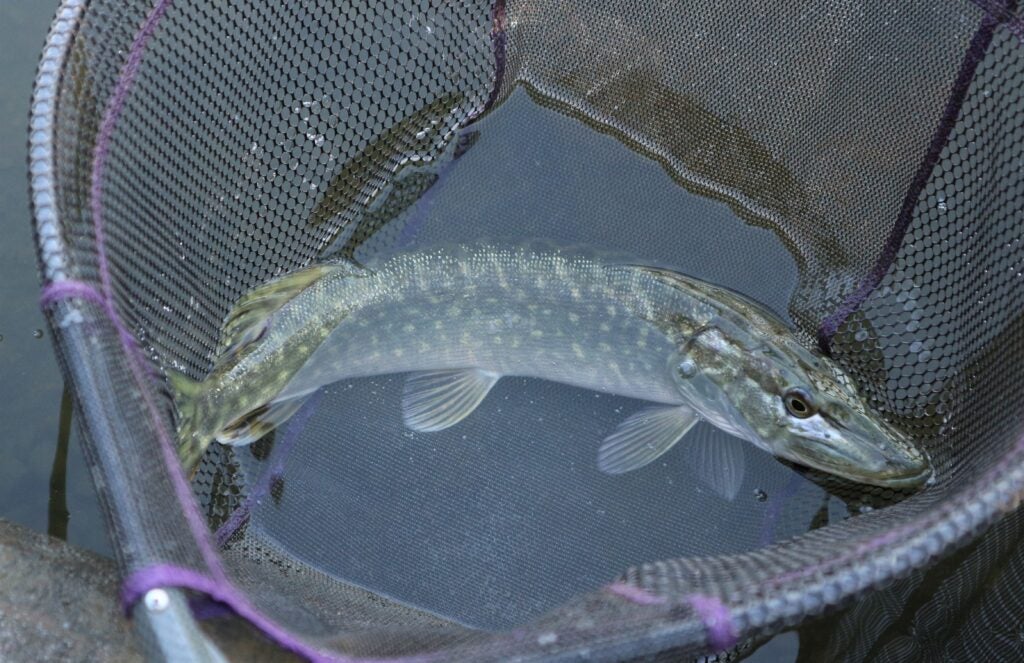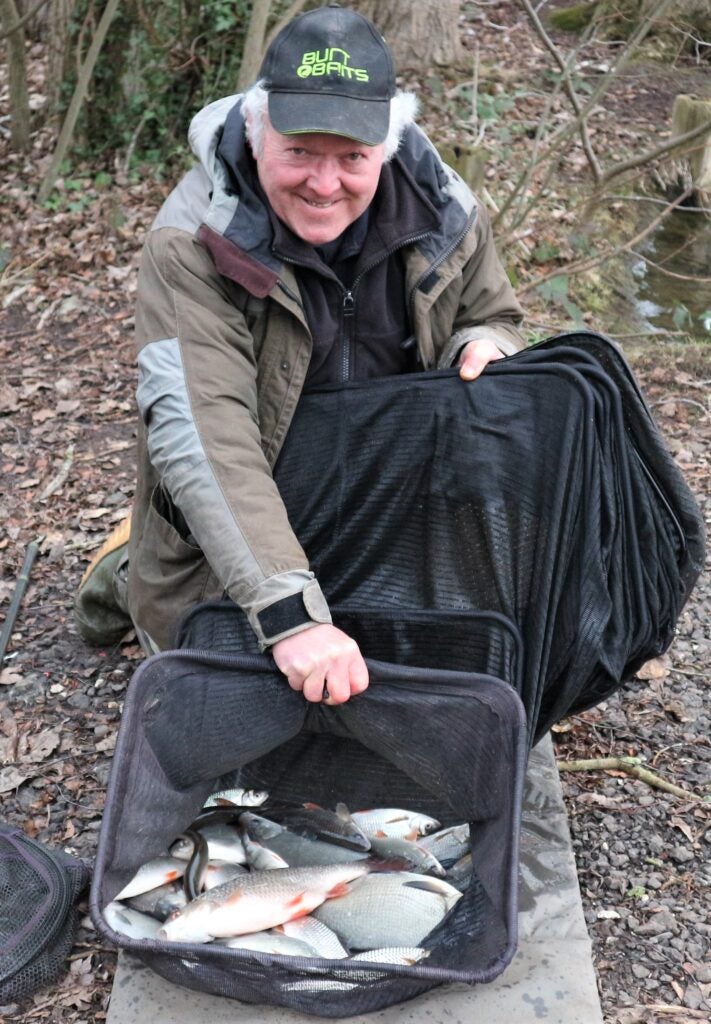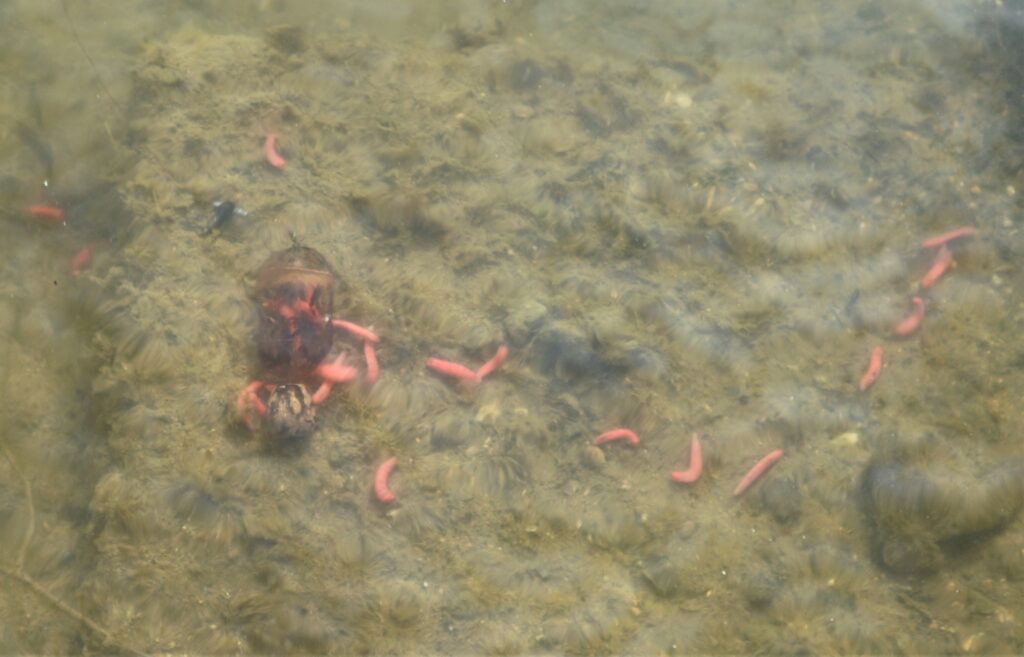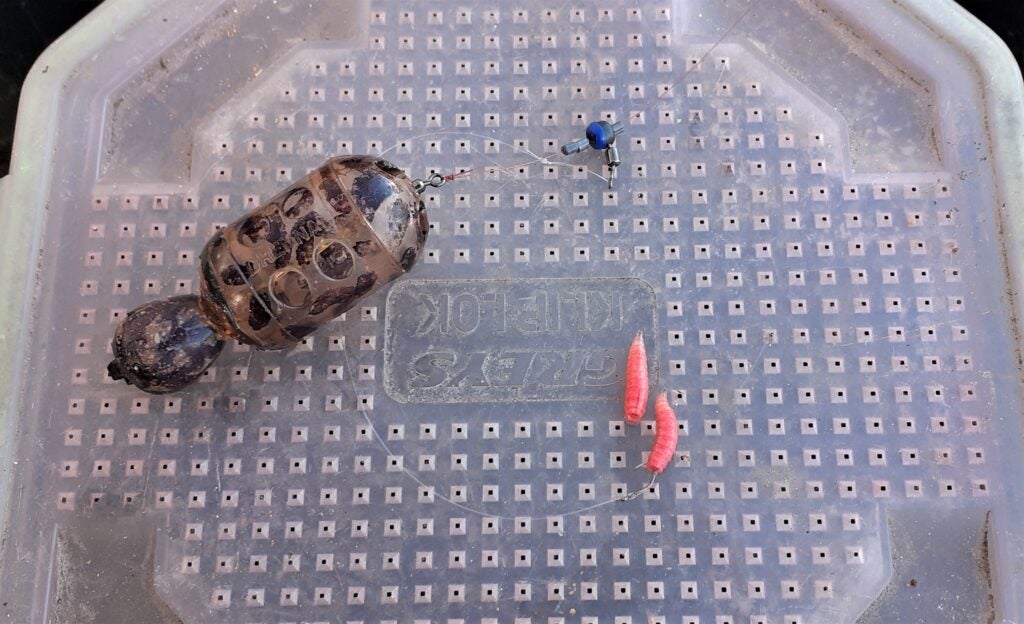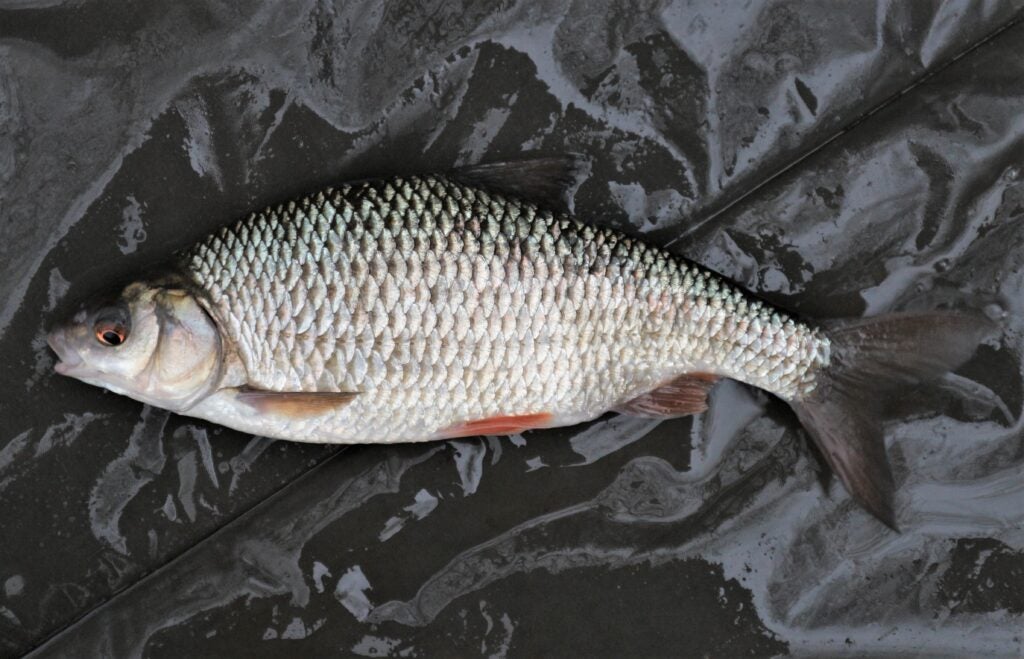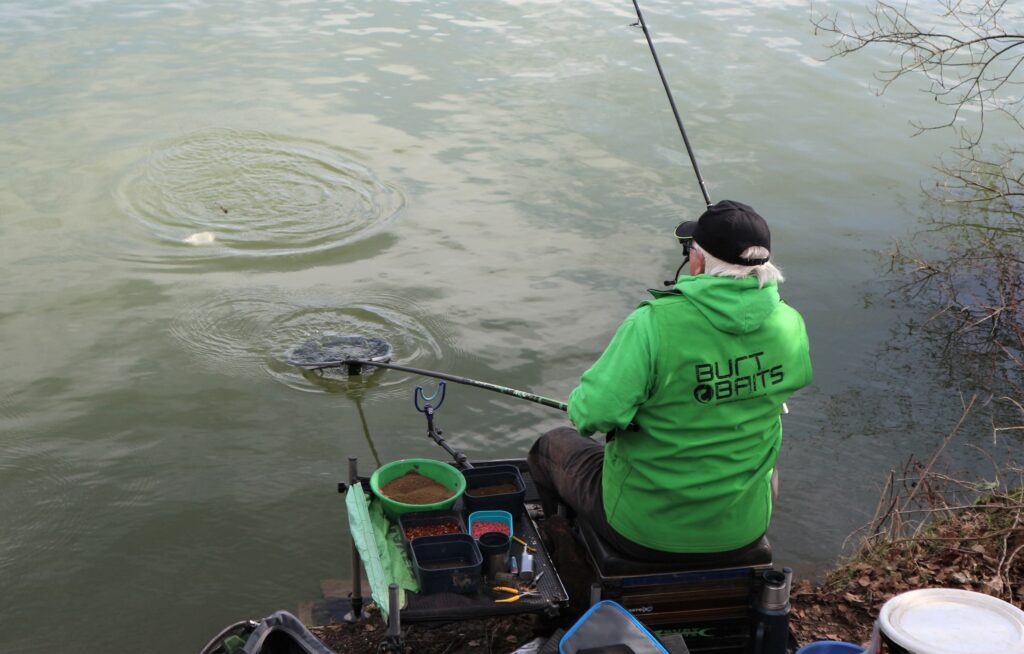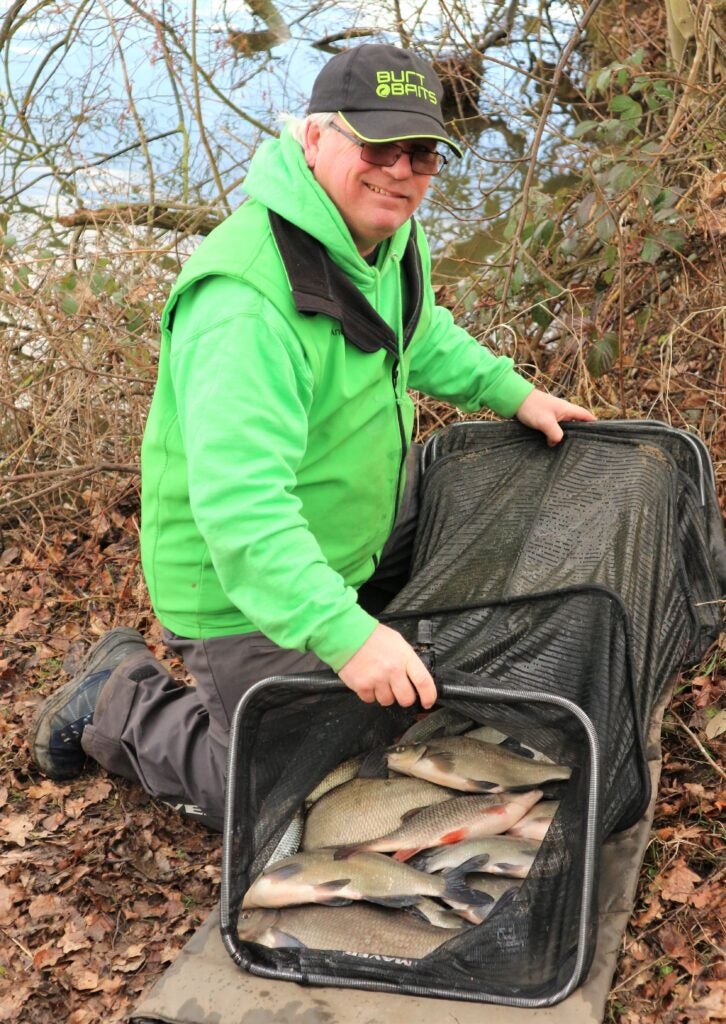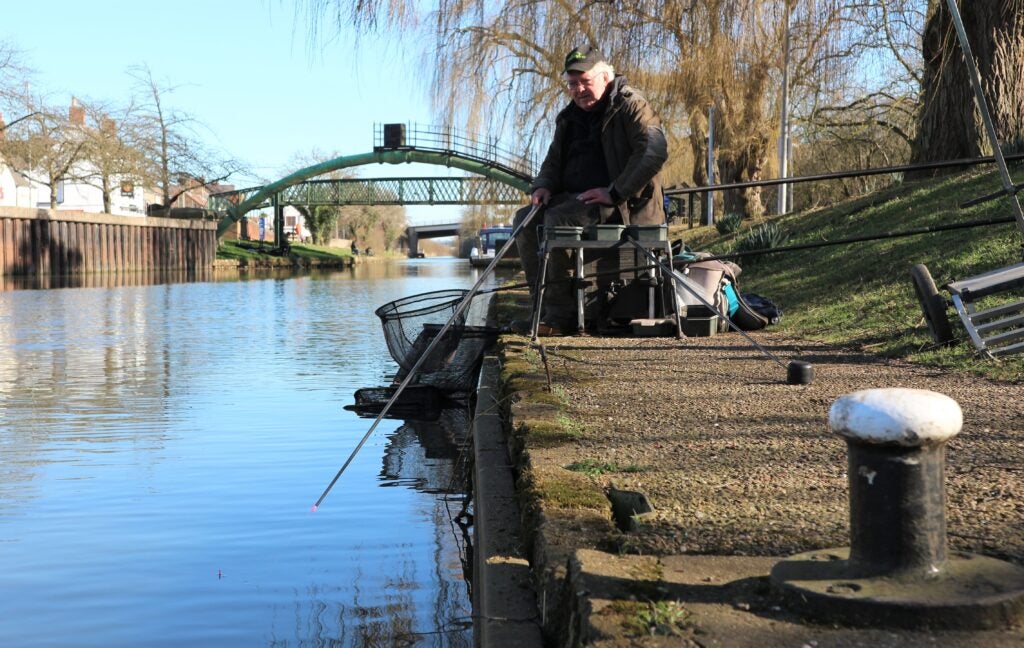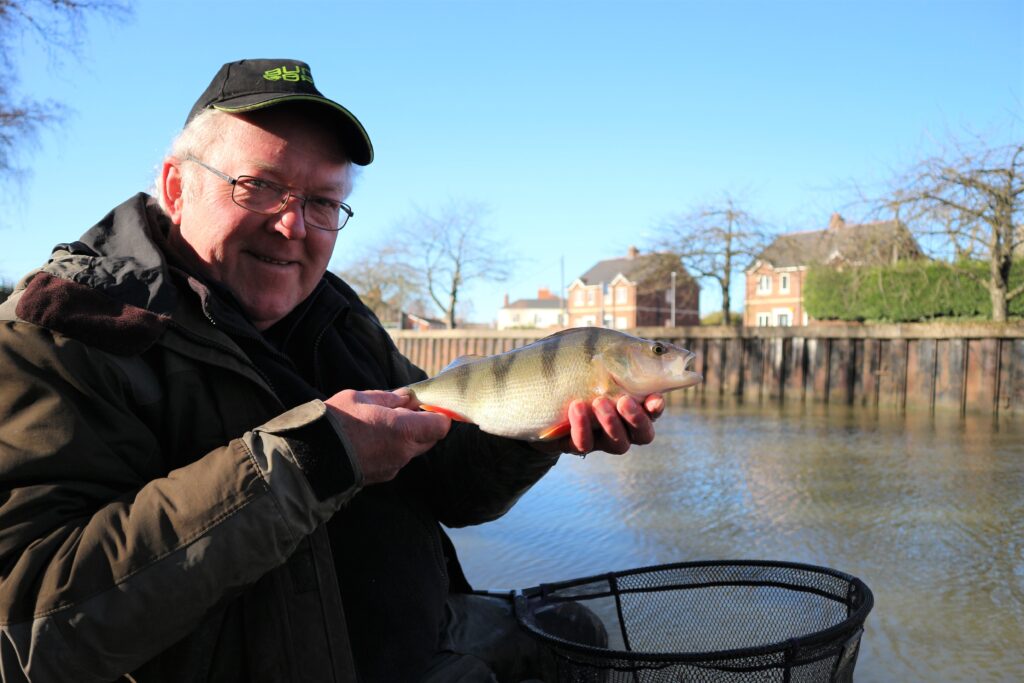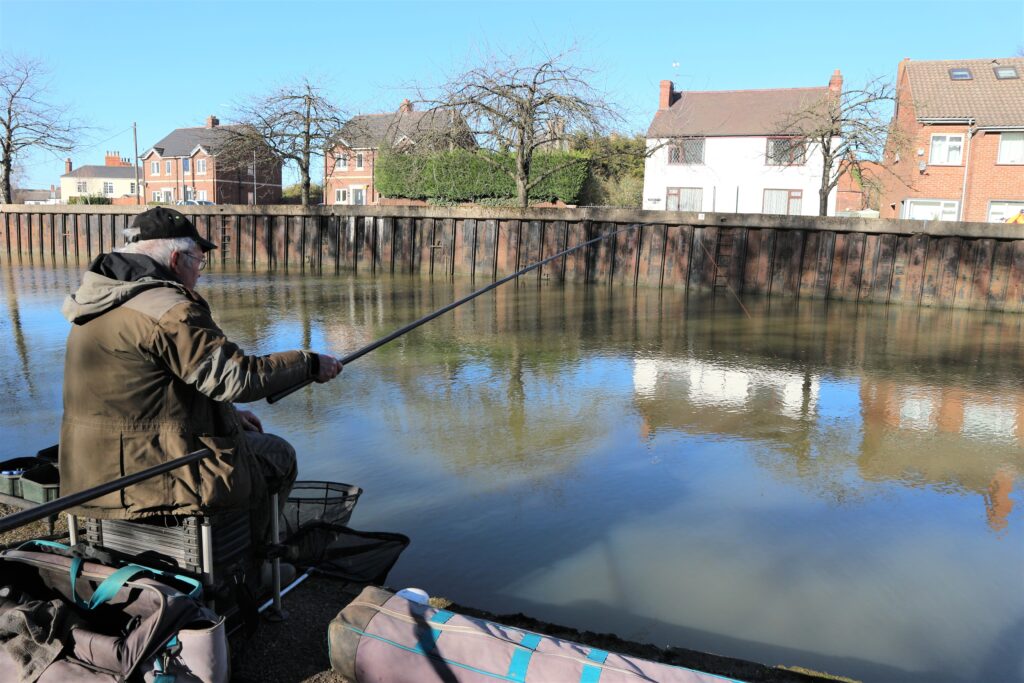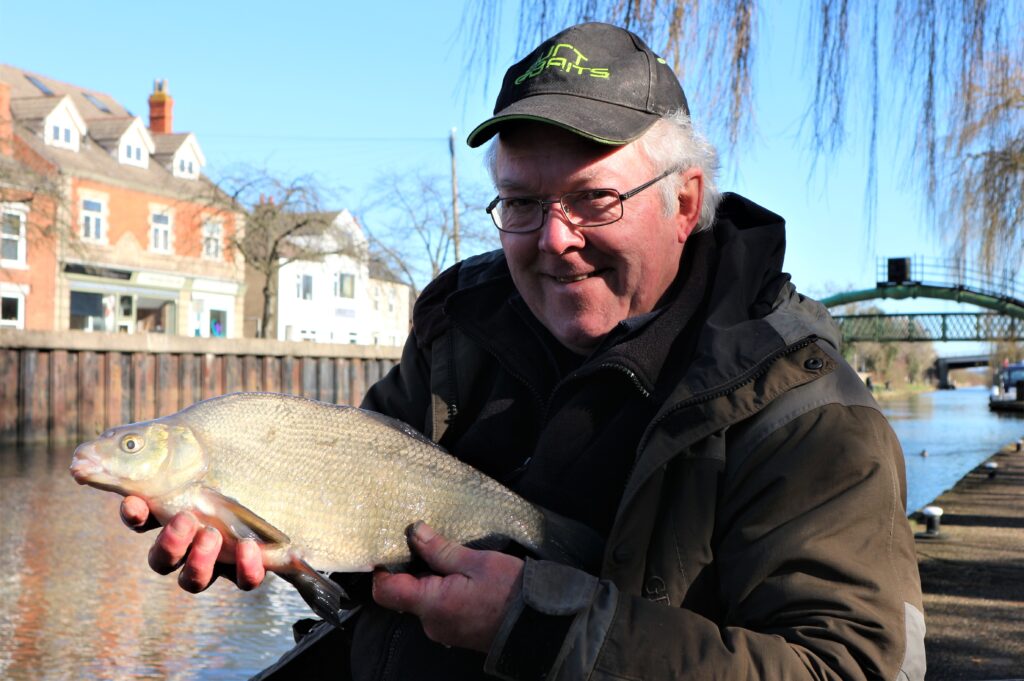Dave Coster's Fishing Diary – May
EXPLORING NEW GROUND
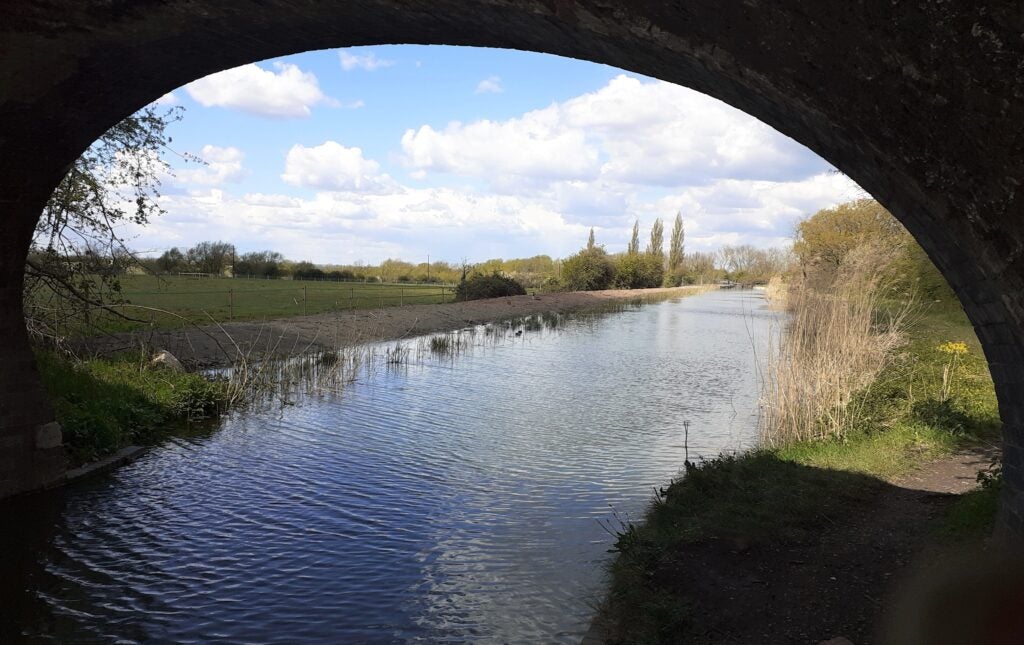
Renovation work on my local Grantham Canal continues, with yet another lock brought back to life. I had avoided the area for a while because last time I looked at the short pounds above Woolsthorpe, it was a hive of activity, including heavy machinery in action. The canal looked barren and rather sad back then, but now the banks have been landscaped and some greenery is growing back, it’s getting some character again. The boat channel has been dredged, thoughtfully leaving plenty of reed and rush growth down the margins. The surface is largely clear of the dreaded duckweed, which is a big bonus because this menace has been blighting much of the canal for years. I walked this stretch a couple of years ago and in weed-free parts I could see the bottom right the way across. All I spotted were a few small fry, leaving me wondering if all the years of neglect had severely dented the fish stocks. The only way to find out would be to put some bait in and give it a go.
WHAT WENT WRONG ?
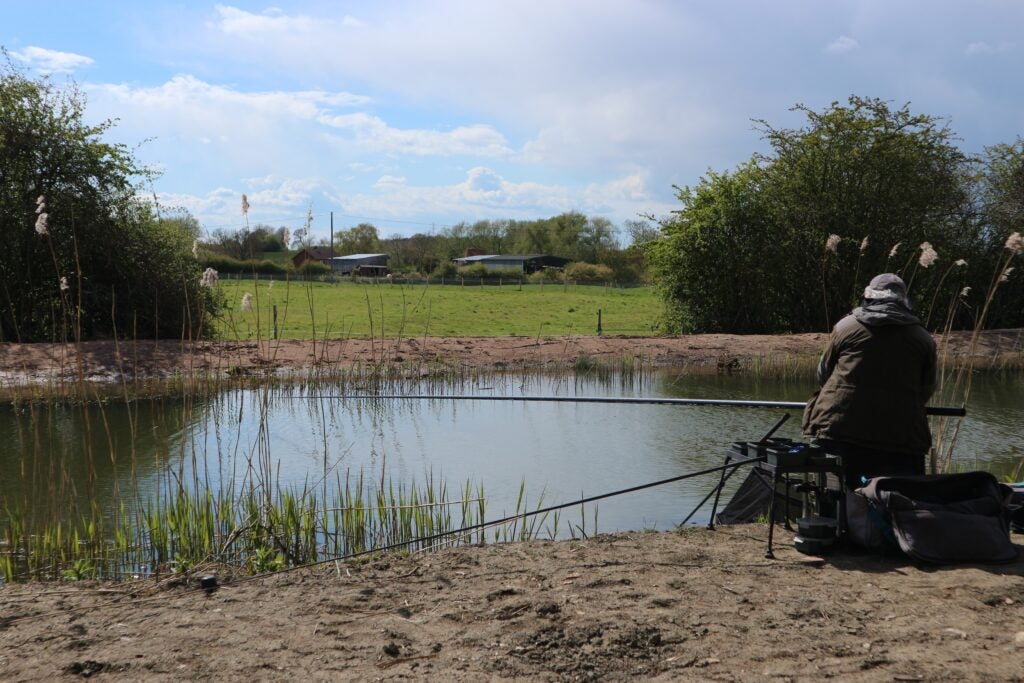
After plumbing up I discovered a fair depth and little underwater weed, so while concentrating my feed towards the far side rushes, I pondered over what this canal had been through over the years. It was built way back in 1797, linking the River Trent with Grantham. There used to be thirty-three miles of waterway, with eighteen locks, sixty-seven bridges and nine aqueducts. Sadly, the whole lot was closed in 1936, for what reason I can’t imagine. The old wharf in Grantham is now a supermarket car park, and some sections of the waterway have dried up. What a travesty. If boats were still able to navigate from the Trent to my local town, it would be great for tourism and business, plus of course the fishing wouldn’t have deteriorated. Some strange things have happened to the canal over the years. The next section is called the Carp Pound, due to it being heavily stocked with that species. Only trouble is, I’ve not yet met anyone who has ever seen a carp caught from there!
BOUNCING BACK
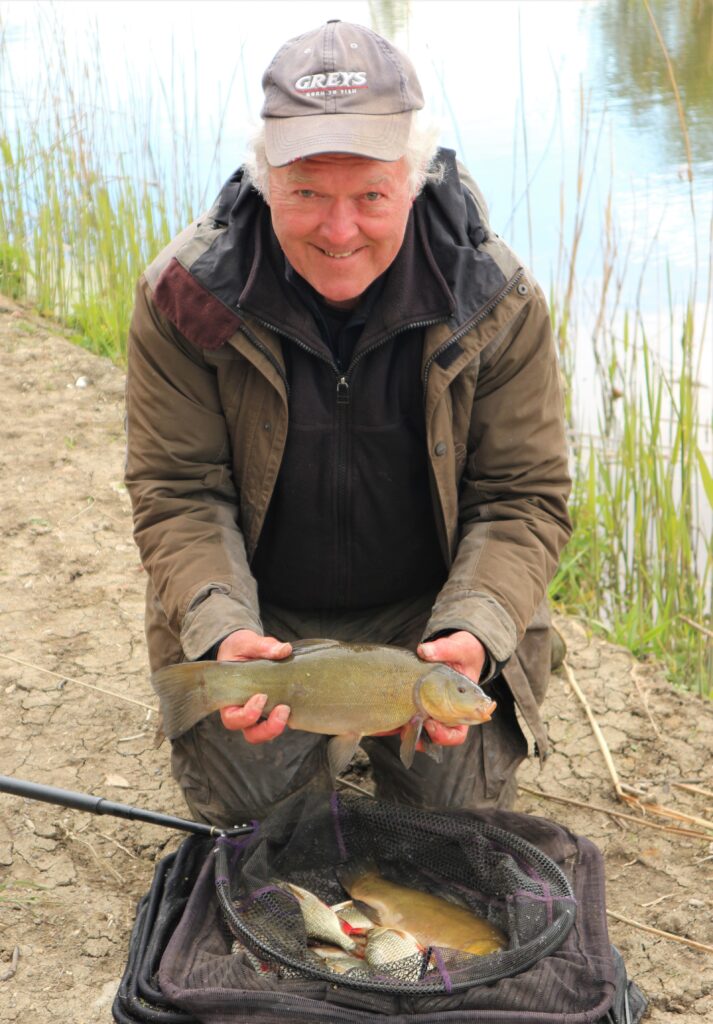
It wasn’t long before my pole float began to dive under and I was connecting with a string of pristine rudd, with some pushing the 12oz mark. A few small roach and perch also turned up, before a proper elastic-stretcher ran my rig all over the canal. By its juddering movements the fish felt like it could be a tench. It was, not a big one, but I wasn’t complaining. It turned into an interesting session after that, capped off with another tench. It was brilliant to see a fair net of fish like this, considering this stretch hasn’t been restocked after all the years of decline. The irony being, it was now performing better than a nearby pound that had recently received a good injection of new fish. The following weekend, both the stocked stretch and this one were included in a Bottesford Angling Club match. Luckily, I drew not far from this area, catching a bonus tench and a decent skimmer, along with a few small rudd and perch, for runners-up position on a hard day.
MORE SURPRISES
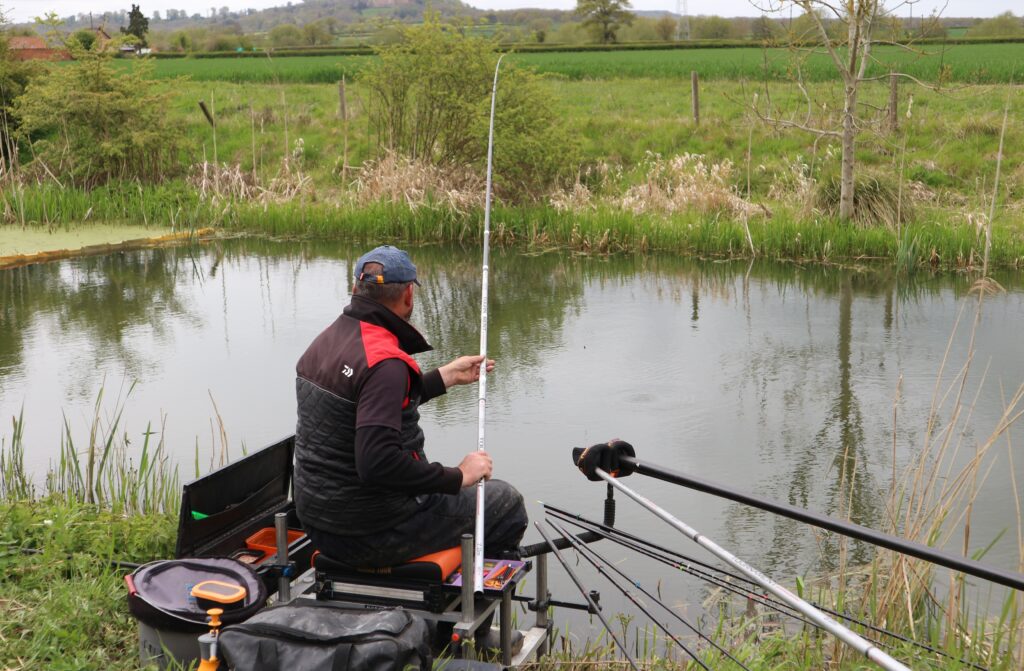
After being pegged on the Two Bridges section in the match, I went back to explore the canal further. It was very weedy that day but my mate Chris had since raked some swims. He sat near the new lock and was soon connected to a tench. A few more skimmers have come out along here which was also interesting. The canal used to be well known for bream fishing, so it was good to see this species had survived, at least the odd fish around the pound mark. I went for the peg that provided the winning weight on the recent match. It was close to a bridge and had a big mound of brambles on the far bank, looking perfect for a few fish. While plumbing up I found plenty of underwater weed, so what I did next was mould some tungsten putty over my hook. This means it can’t snag and helps to find any clear areas, by gently steering the rig around until it isn’t hitting against any unseen debris. I discovered a nice clear spot, a couple of feet off the far bank cover.
CANAL CAPERS
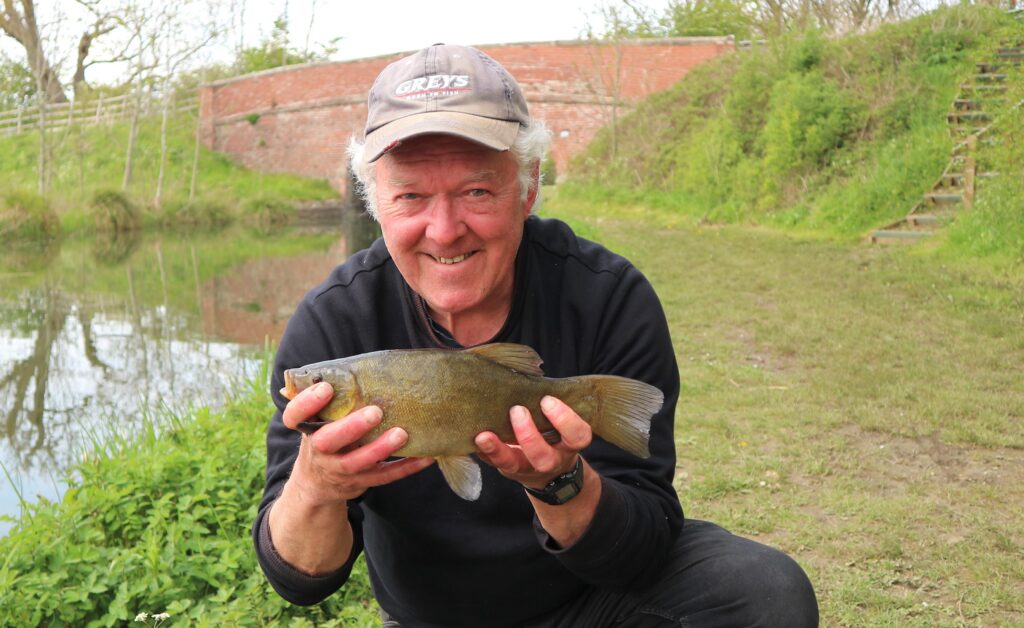
It didn’t take long before chunky rudd turned up to caster, fished over towards the far side. I then lost a tench that found an unseen snag, followed by landing this lively fish. There seems to be quite a lot of small tench in this part of the canal, along with plenty of jack pike, the latter being a nuisance. On this occasion the predators left me alone and I went on to amass a fair catch of mainly rudd, including a few better samples. I enjoyed another couple of towpath trips in this area before the month was over, visiting the nearby Carp Pound and spotted a big shoal of rudd. The water was painfully clear, but by rotating between feed lines on the far left and right of my swim, I caught some quality fish, one or two close to the pound mark. I returned a few days later, finding the fish smaller but caught all day long. A couple of times I saw a dark shape cruising through my swim several metres out. It was a carp of around 5lbs, so at least one is left in there.
BUSY LAKES
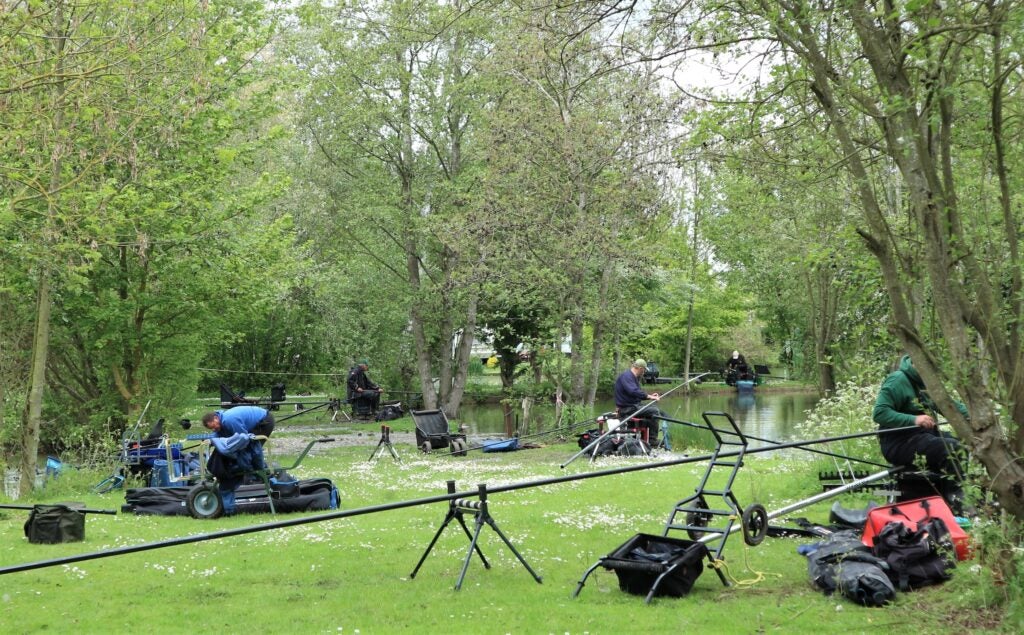
Next club match was at Foston on Willow Lakes. The car park was crammed as all three match pools were booked. We were on the Hawthorn, which is an unusually-shaped water, with islands, fingers and sheltered bays dotted about all over the place. I have fished this venue a few times with mixed results, best haul being 50lbs of big skimmers and a few carp. But there are some painfully shallow and narrow areas, which don’t offer much to go at. To my great disappointment I ended up in one of those pegs. It was the last swim I would have picked, a straight channel by a featureless island, with less than two feet of water. There was even less depth against the far bank, so I wasn’t happy, but of course would still give it a go. There are some nice day ticket lakes as you enter this fishery. The first is Poplar, a shallow rectangle, which is great for skimmers. Next comes Willow, well known for big weights of carp, while the third is Sycamore, with a decent head of crucians.
DOWN THE CHANNEL
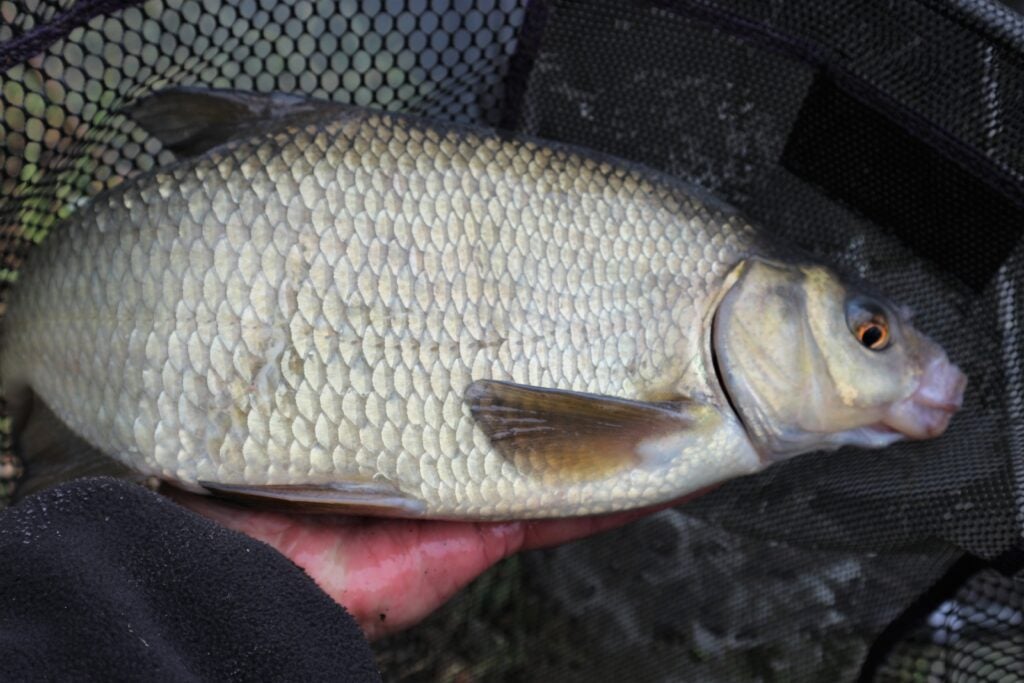
Plumbing up I found maximum depth was two feet down the middle of my peg and even less over the far side. With so little water, I decided to fish two lines, one well down to my right and another over to my left. I did explore the island, dobbing a shallow rig all along it, but nothing happened and it seemed devoid of fish. I had initially fed some micro pellets, chopped worm and casters in my main feed areas. I started in the left-hand one and couldn’t buy a bite, but switching to the right-hand side produced a few strange indications on my float, so something was down there. When my float eventually slid under nothing was there when I lifted my pole, so I deepened my rig off by a few inches, suspecting it might have been a liner. Sure enough, next put in and the float slid away again, resulting in a big skimmer. Next drop in it did the same again, only this time I was attached to a missile that shot through my swim, badly churning up my other feed area.
WORKING IT OUT
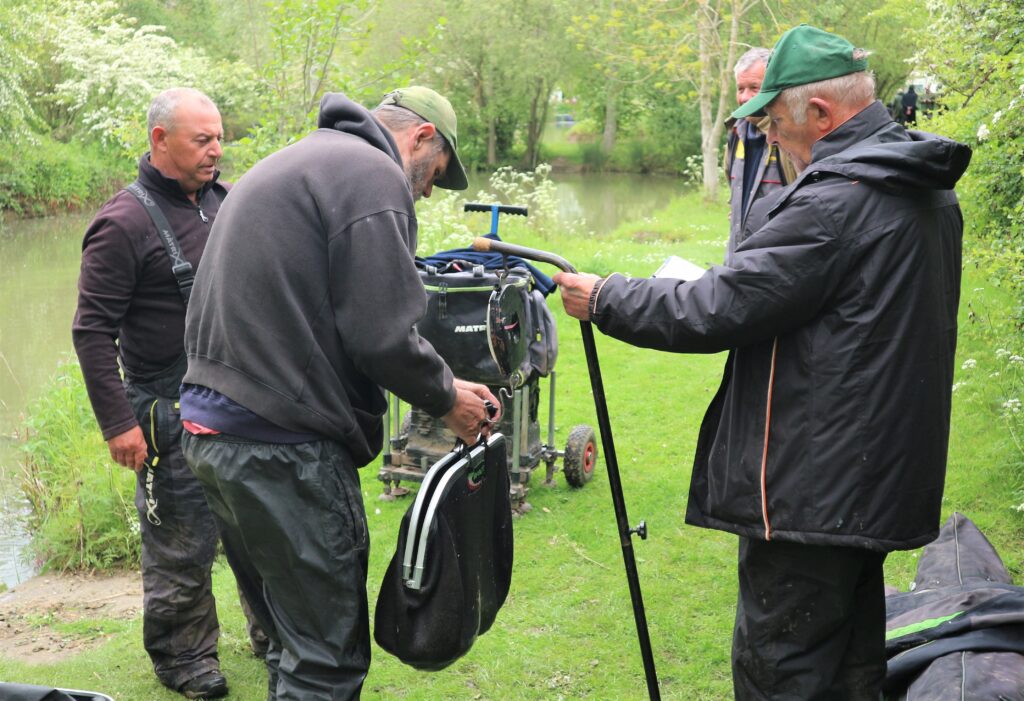
After completely messing up both my feed lines, the culprit turned out to be a foul-hooked carp, but at least I landed it. It took ages to build my right-hand feed area up again to get the bites back, while the left-hand feed zone refused to produce any indications, so I sacked that. If something big was going to turn up on the far side I’m sure I would have seen it in the shallow water, forcing me to concentrate on just the one spot down the channel. I eventually got the skimmers back. Only trouble was, every time I hooked one it would leap out of the water like a dolphin, spooking the others for long periods. I did manage to keep a couple down, but just as I was thinking about enjoying a good run of action and bagging up, another carp interrupted the proceedings and did its best to churn all the water in front of me into a brown soup. After that it was hard graft, playing the waiting game for odd skimmers. All too quickly the final whistle went and it was weigh-in time.
HAPPY WITH THAT
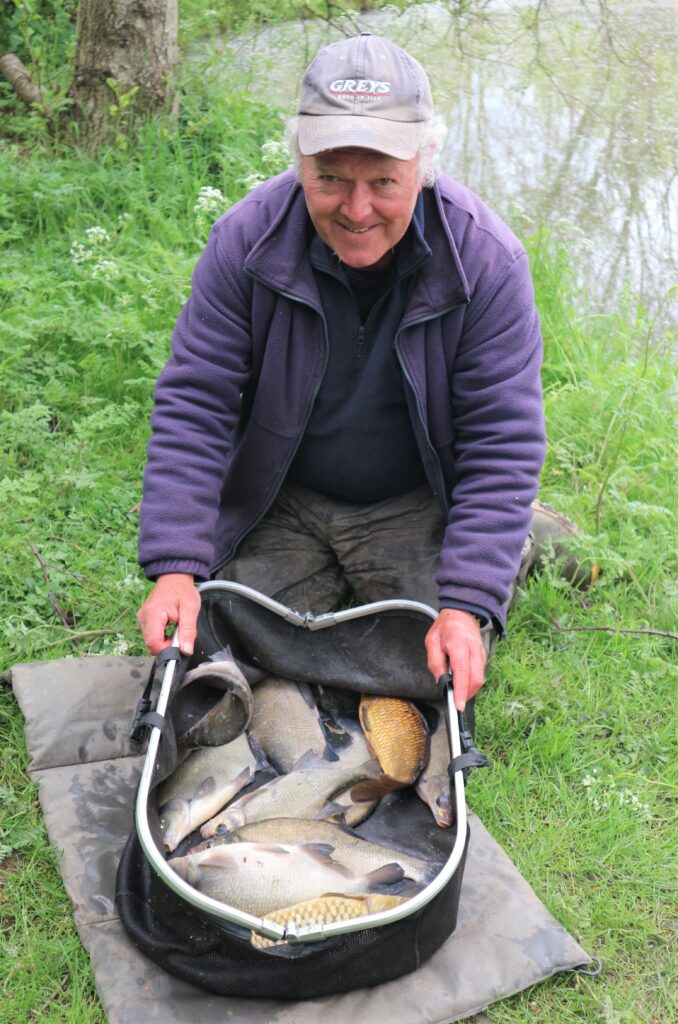
Ten skimmers and two carp for just over 17lbs and I don’t think there was much more I could have done. Not far out of the frame because apart from a 50lb winning net of carp, the lake hadn’t fished well, with 24lbs creeping into the money. It has been a late spring this year and everything seems to be lagging behind. A few weeks back we were still getting overnight frosts and the trees were only just beginning to leaf up. There are some lumpy carp in Hawthorn and now the weather had finally warmed up, I think there were other things on their mind. I prefer fishing for the big skimmers anyway, which normally line up if you keep away from the islands, but you need a swim with a little more depth than I had today. The other lake I like on this complex is Poplar. Again, it’s very shallow but holds a surprising head of skimmers, roach and carp. You can catch small skimmers all day on the long pole, but the bigger ones tend to feed best in the shady margins.
STAYING SHALLOW
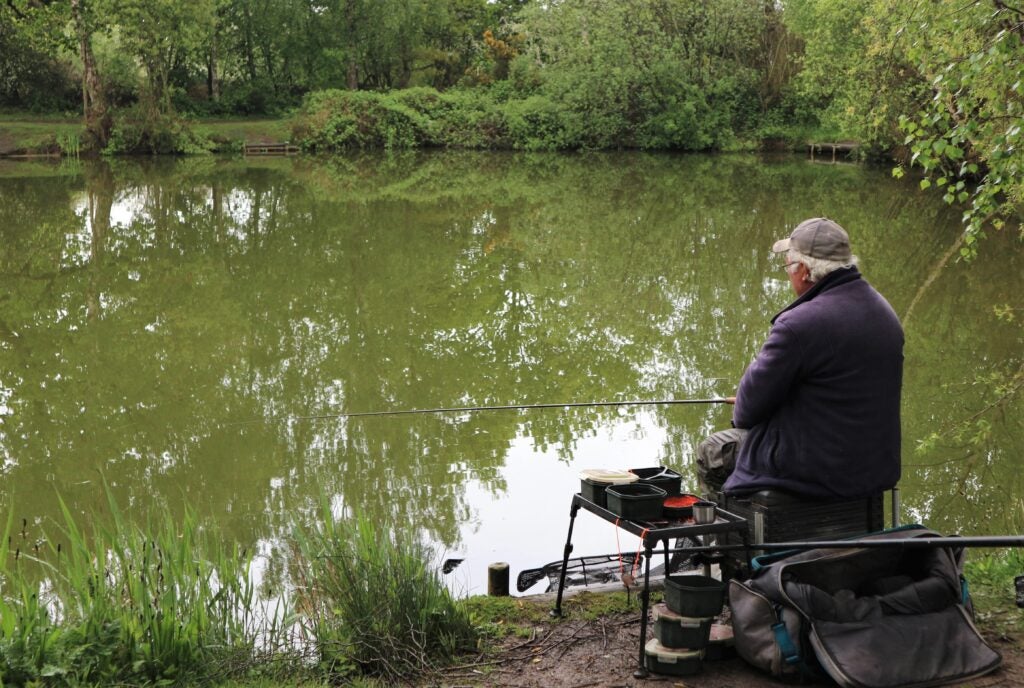
With the huge shoals of fish in the main lakes at local Woodland Waters getting into spawning mode, I noticed nobody was on the smaller Birch Lake over the back of the holiday park. This is another very shallow water, but I enjoy fishing it because, apart from the carp, it’s full of surprises. I simply set up a soft action 12ft rod with a light 2AAA insert waggler, finding a maximum of two feet in depth. The plan was to feed 3mm pellets and casters, which both catapult the same distance, and see what happened. It didn’t take long to get bites, fishing a single caster on a size 18 medium wire hook and 0.14mm line. I started catching small skimmers and the odd roach, fishing a few inches over-depth, but it didn’t take long before a better-sized skimmer turned up. There are a lot of these in the lake, but they are largely ignored. I would have preferred using a thinner line for them, but that risks getting smashed up by the numerous carp population.
BIG INTRUDERS
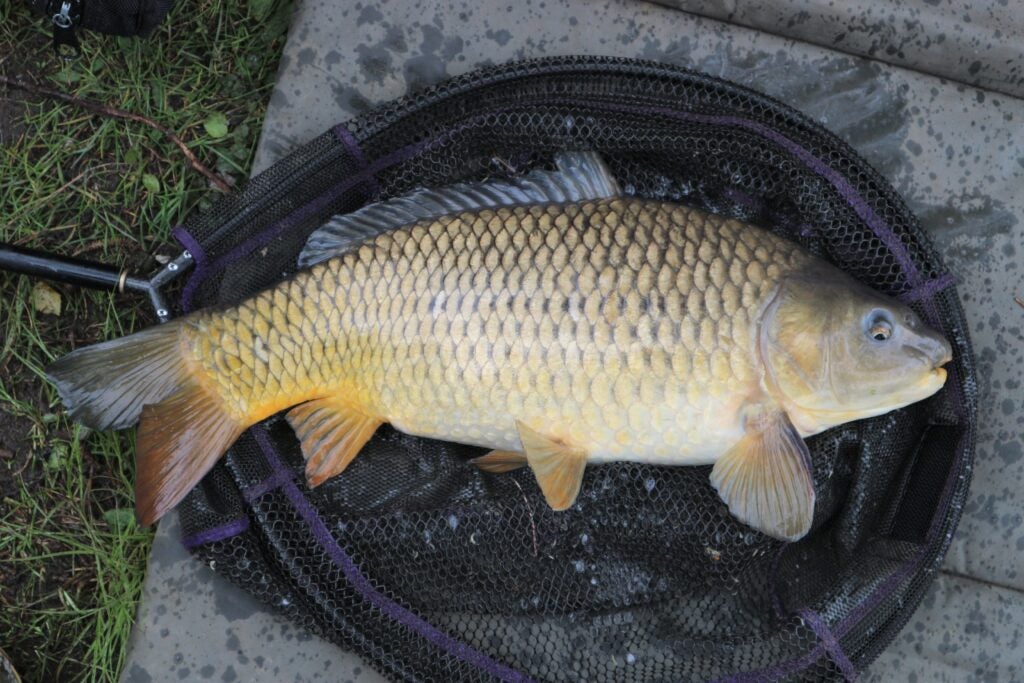
I had just got the skimmers lined up when the inevitable happened. Something powerful, with a lot of weight behind it, shot across the lake. This forced me into to having to backwind frantically. This was why I was using 0.14mm line, because more skimmer-friendly 0.10mm or 0.12mm traces don’t give you enough control when carp butt in on proceedings. You can end up playing them for ages, churning up such shallow swims and destroying feed areas you have so patiently built up. In this case I was happy the carp had gone over to the far side, where its initial run covered a good twenty metres. However, using a through-action rod, combined with fairly strong tackle, allowed me to keep it away from the taking zone. With lighter line I would have probably been hanging on for much longer and the fish would be bossing me all over the place. The only thing I was worried about was if the carp would fit into my landing net, as it looked to be quite a big lump.
DOUBLE WHAMMY
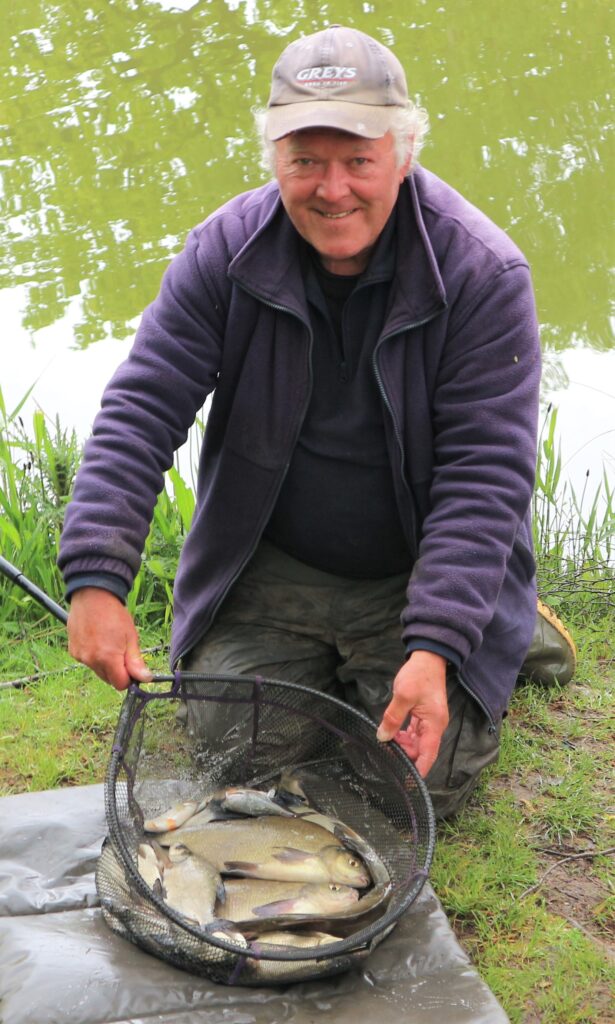
I just about coaxed the beefy carp into my landing net and it wasn’t long before the skimmers were back. I tried worm on the hook, also red maggots, but these baits were attracting small fish. A single dark caster was best, waiting longer for a bite but the resulting fish were a better size. Skimmers between 8oz and 1.5lbs turned up, along with odd net roach. A couple more weighty carp butted in, but handily both shot across the lake again, without disturbing my feed area. I also pricked a couple more, but all they did was send a puff of silt up as they scarpered off. The skimmers kept coming and I enjoyed putting a nice catch of them together, slipping any carp straight back via the peg next door. I ended up with double figures of silver fish. May was a strange month, where only the last few days felt like spring. It will probably take a few more weeks for fishing to get back to normal, but the good news is rivers, drains and the Fossdyke Canal will be open by then.
The post
Dave Coster’s Fishing Diary – May first appeared on
FishingMagic Magazine.
Continue reading...














